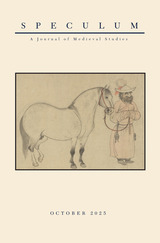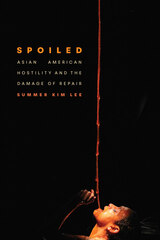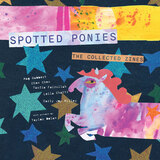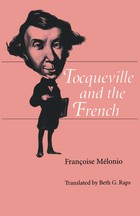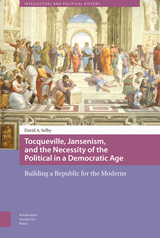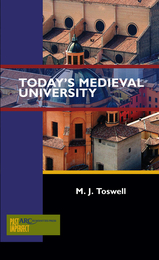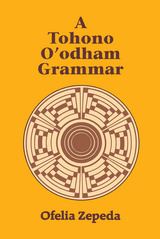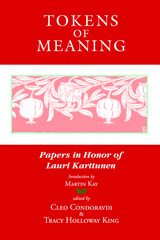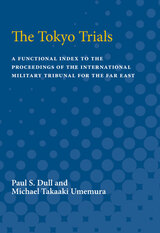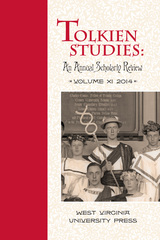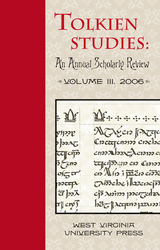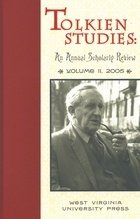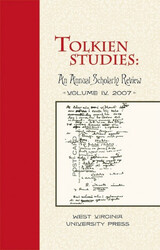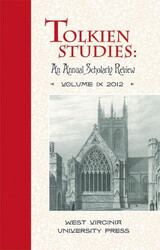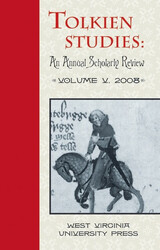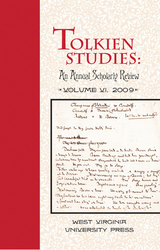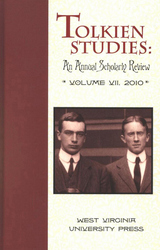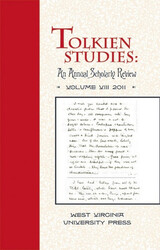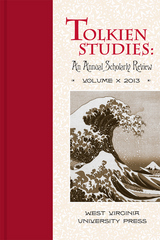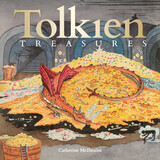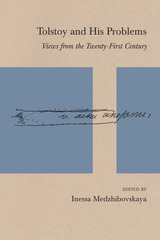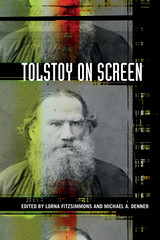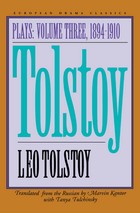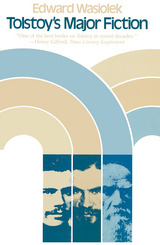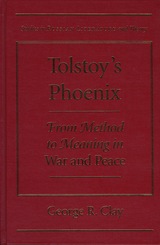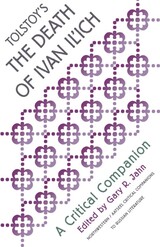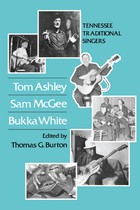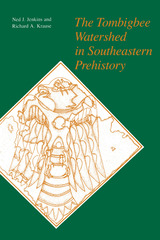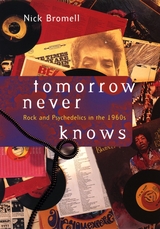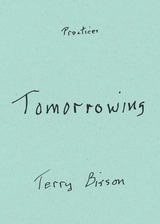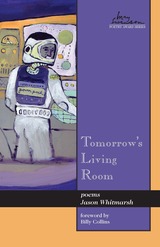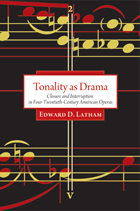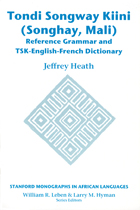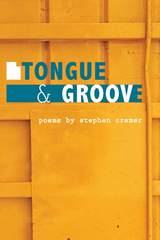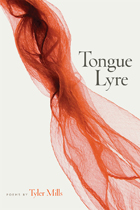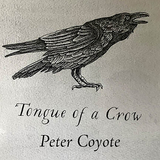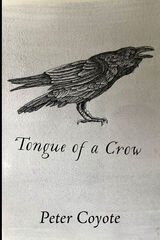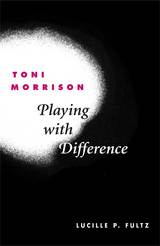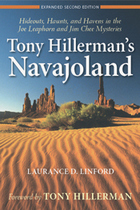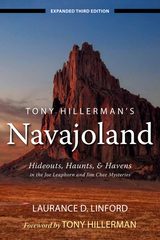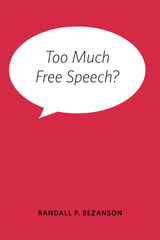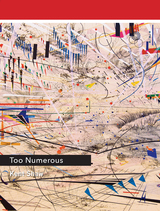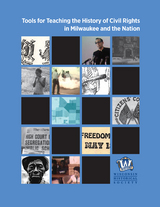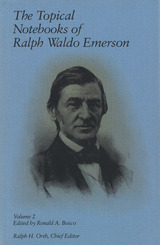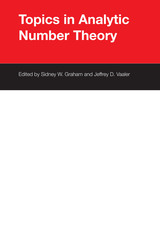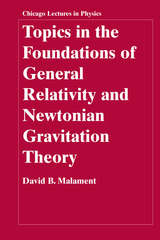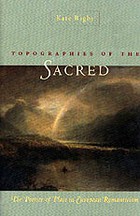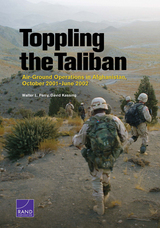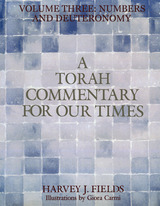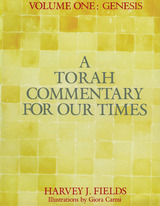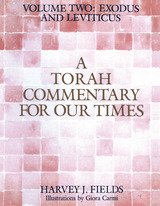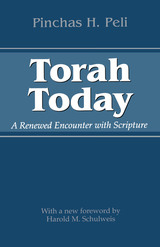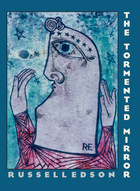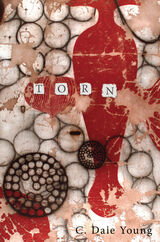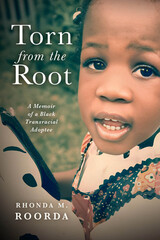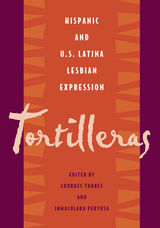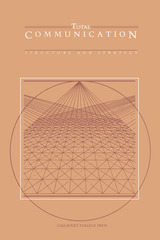Tocqueville and Democracy in the Internet Age
C. Jon Delogu
Michigan Publishing, 2014 Tocqueville and Democracy in the Internet Age is a general introduction to Alexis de Tocqueville (1805-1859) and his monumental two-volume study Democracy in America (1835, 1840) that pays particular attention to the critical conversation around Tocqueville and democracy since the end of the Cold War during the Internet Age; i.e., post-1989. The book is addressed broadly to students, specialists, and ordinary citizens who wonder if democracy is still possible today and under what conditions.
 Tocqueville and England
Seymour Drescher
Harvard University Press This study envisions Tocqueville as a political man, and a politically committed one, rather than as an omniscient and solitary prophet of the age of the masses. A historical account of one of the essential liberals of the nineteenth century cannot ignore the fact that Tocqueville's views of both the present and the future were formulated in terms of the outlook of his own generation and class.
The British Isles were the source of some of Tocqueville's most significant insights, especially of the historic connection between the rise of democracy and the extension of bureaucratic centralization. They furnished him with two examples from which he eventually drew a theory of the evolution of aristocracies. They gave him a comparative basis for a theory of the relation of ideas to social change, of the causes of and antidotes to revolutions. His ideas on institutional and economic reform and on the ingredients of a great foreign policy bore the English trademark. If at times he protested against a lifeless imitation of an insolent rival, more often than not what the rival was doing became the basis for his own solutions to French problems.
Finally, England provided Tocqueville with a refuge from the intellectual and political isolation of his last years. He found there, not only the consensus which was necessary for him to grasp his own reality and purpose, but the opportunity to continue to influence the course of events, however diminished his range. At the end of his life England was his second homeland, and assumed the prime place in his vision of the history of human liberty.
A discussion of Tocqueville's intellectual relationship with his lifelong friend, Gustave de Beaumont, is indispensable to this study. Tocqueville brought to their common fund of ideas a wealth of insight which justly claims greater scholarly attention, but it was Beaumont who, after their journey to England and Ireland in 1835, attempted an extended study of the British constitution, while the ideas of his traveling companion remained in undigested notes. Despite the fact that the inseparability of their ideas on democracy was recognized a generation ago, the unity of their careers and ideas after the appearance of their books on America here receives due analysis for the first time.
 Tocqueville and the Two Democracies
Jean-Claude Lamberti
Harvard University Press, 1989 Why did the French Revolution lead to the crimes of the Terror, whereas the American Revolution brought forth a liberal democracy? Alexis de Tocqueville spent a lifetime trying to understand the paradox. This first book on the genesis of Tocqueville’s Democracy in America considers his two main themes of democracy and revolution in the light of his own early political activities and his subsequent studies of the past, and thereby makes a valuable contribution to intellectual history.
In tracing the evolution of Tocqueville’s work, Jean-Claude Lamberti reveals Tocqueville’s enormous intellectual debt to Montesquieu; skillfully analyzes all that separates Tocqueville from the liberal French school, particularly Benjamin Constant and François Guizot; shows that Tocqueville believed that the only means of preventing new revolutions (which he abhorred) was to increase political freedom, especially that of association; sketches the difference between Tocqueville and counter-revolutionaries on the question of individualism, which Tocqueville wished to correct but not annihilate. Never before have historians been able to place Tocqueville so securely in the genealogy of French liberalism. This new work demonstrates his relevance to the world today.
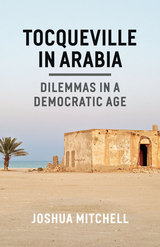 Tocqueville in Arabia: Dilemmas in a Democratic Age
Joshua Mitchell
University of Chicago Press, 2013 We live in the democratic age. So wrote Alexis de Tocqueville, in 1835, in his magisterial work, Democracy in America. This did not mean, as so many have believed after the fall of the Berlin Wall in 1989, that the political apparatus of democracy would sweep the world. Rather, Tocqueville meant that as each nation left behind the vestiges of its aristocracy, life for its citizens or subjects would be increasingly isolated and lonely.
In America, more than a half century of scholarship has explored and chronicled our growing isolation and loneliness. What of the Middle East? Does Tocqueville prediction—confirmed already by the American experience—hold true there as well? Americans look to the Middle East and see a rich network of familial and tribal linkages that seem to suggest that Tocqueville’s analysis does not apply. A closer look reveals that this is not true. In the Middle East today, citizens and subjects live amidst a profound tension: familial and tribal linkages hold them fast, and at the same time rapid modernization has left them as isolated and lonely as so many Americans are today. The looming question, anticipated so long ago by Tocqueville, is how they will respond to this isolation and loneliness.
Joshua Mitchell has spent years teaching Tocqueville’s classic account, Democracy in America, in America and the Arab Gulf and, with Tocqueville in Arabia, he offers a profound account of how the crisis of isolation and loneliness is playing out in similar and in different ways, in America and in the Middle East. While American students tend to value individualism and commercial self-interest, Middle Eastern students have grave doubts about individualism and a deep suspicion about capitalism, which they believe risks the destruction of long-held loyalties and obligations. Where American students, in their more reflective moments, long for more durable links than they currently have, the bonds that constrain the freedoms Middle Eastern students imagine the modern world offers at once frighten them and enkindle their imagination. When pondering suffering, American students tend to believe its causes can be engineered away, through better education and the advances of science. Middle Eastern students tend still to offer religious accounts, but are also enticed by the answers Americans give―and wonder if the two accounts can coexist at all. Moving back and forth between self-understandings in America and in the Middle East, Mitchell offers a framework for understanding the common challenges in both regions, and highlights the great temptation both will have to overcome—rejecting the seeming incoherence of the democratic age, and opting for one or another scheme to re-enchant the world. Whether these schemes take the form of various purported Islamic movements in the Middle East, or the form of enchanted nationalism in American and in Europe, the remedy sought will not cure the ailment of the democratic age. About this, Mitchell comes to the defense Tocqueville long ago offered: the dilemmas of the democratic age can be courageously endured, but they cannot resolved.
We live in a time rife with mutual misunderstandings between America and the Middle East. Tocqueville in Arabia offers a guide to the present, troubled times, leavened by the author’s hopes about the future.
Tocqueville, Jansenism, and the Necessity of the Political in a Democratic Age: Building a Republic for the Moderns
David Selby
Amsterdam University Press, 2015 Before being declared heretical in 1713, Jansenism was a Catholic movement focused on such central issues as original sin and predestination. In this engaging book, David Selby explores how the Jansenist tradition shaped Alexis de Tocqueville’s life and works and argues that once that connection is understood, we can apply Tocqueville’s political thought in new and surprising ways. Moving from the historical sociology of Jansenism in seventeenth- and eighteenth-century France to contemporary debates over the human right to education, the role of religion in democracy, and the nature of political freedom, Selby brings Tocqueville out of the past and makes him relevant to the present, revealing that there is still much to learn from this great theorist of democracy.
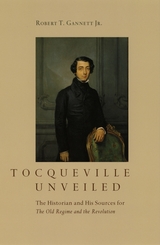 Tocqueville Unveiled: The Historian and His Sources for The Old Regime and the Revolution
Robert T. Gannett Jr.
University of Chicago Press, 2003 With The Old Regime and the Revolution, Alexis de Tocqueville wrote what remains the essential history of the French Revolution. Yet historians have found it nearly impossible to trace the evolution of Tocqueville's ideas because he chose not to disclose his sources.
Drawing on his unprecedented access to Tocqueville's papers—access made possible by the late French historian Francois Furet—Robert T. Gannett Jr. reveals the ingenuity of Tocqueville's analyses of issues such as landownership, administrative centralization, and public opinion in prerevolutionary France. He also sheds light on the benefits Tocqueville reaped from unexpected intellectual encounters with such authors as Burke, Constant, and Dareste de la Chavanne. A literary detective at work, Gannett tracks Tocqueville as the author himself tracked the French Revolution—and brings him to life as a meticulous historian and an ardent defender of liberty.
An ideal companion to The Old Regime and the Revolution, Volumes 1 and 2, both published by the University of Chicago Press, Tocqueville Unveiled will be a valuable resource for revolutionary historians and Tocqueville enthusiasts alike.
 Tocqueville’s Revenge: State, Society, and Economy in Contemporary France
Jonah D. Levy
Harvard University Press, 1999 This book offers a new interpretation of the transformation of French economic policymaking and state-society relations over the past twenty-five years. In so doing, it challenges widely held views about the preconditions for state leadership and for a vibrant civil society.
France has long been characterized as a statist or dirigiste political economy, with state "strength" predicated on autonomy from a weak and divided civil society. Jonah Levy shows that this disdain for societal and local institutions has come back to haunt French officials--what he terms "Tocqueville's revenge." The absence of societal partners undermined the operation of dirigiste policymaking in the 1970s and early 1980s and has made it difficult to forge alternative forms of economic coordination in the post-dirigiste period.
Levy argues that just as the French state has been weakened by an absence of societal and local partners, French civil society has been weakened by the absence of a supportive state. In the 1980s, French authorities invited societal and local institutions to relay state intervention, but did little to cultivate their economic capacities. Taking the dirigiste state out of the French economy did not suffice to bring civil society back in, however. The broader lesson is that revitalizing civil society requires an active, empowering state, as opposed to an absent or indifferent state.
 The Toda Landscape: Explorations in Cultural Ecology
Tarun Chhabra
Harvard University Press The Todas are the oldest inhabitants of the Nilgiri Hills of South India. With their quaint barrel-vaulted architecture, embroidered cloaks, and long-horned buffaloes, they have fascinated the world ever since civilization stepped into the Nilgiris two centuries ago. Their culture revolves around these herds, with each of the six grades of dairy-temple having its corresponding herd of sacred buffaloes. A Toda prayer consists of chant words addressed to sacred natural landmarks such as nearby peaks, slopes, thickets, trees, rocks, meadows, pools, and streams. The Todas represent a rare example of an indigenous culture that has remained generally vegetarian. The Prologue highlights the journey that led to Tarun Chhabra’s being accepted as an “insider.” The thirteen chapters provide detailed ethnographic descriptions of sacred dairy-temple institutions; the Toda relationship with honey; the intricacies of their attire and embroidery motifs; details related to seasonal migrations; settlement patterns; sacred geography and traditional architecture; a spirit’s journey to the afterworld; and ethnobotany. The four appendices focus on the Toda relationship with their flora and fauna, lists of landscape terms, and the all-important prayers for major hamlets. The book includes significant new data and represents a major breakthrough in Toda studies.
 Today in the Taxi
Sean Singer
Tupelo Press, 2022 Sean Singer’s radiant and challenging body of work involves, much like Whitman’s, nothing less than the ongoing interrogation of what a poem is. In this way his books are startlingly alive… I love in this work the sense that I am the grateful recipient of Singer’s jazzy curation as I move from page to page. Today in the Taxi is threaded through with quotes from Kafka, facts about jazz musicians, musings from various thinkers, from a Cathar fragment to Martin Buber to Arthur Eddington to an anonymous comedian. The taxi is at once a real taxi and the microcosm of a world—at times the speaker seems almost like Charon ferrying his passengers, as the nameless from all walks and stages of life step in and out his taxi. I am reminded of Calvino’s Invisible Cities, of Sebald’s The Rings of Saturn… Today in the Taxi is intricate, plain, suggestive, deeply respectful of the reader, and utterly absorbing. Like Honey and Smoke before it, which was one of the best poetry books of the last decade, this is work of the highest order.
—Laurie Sheck
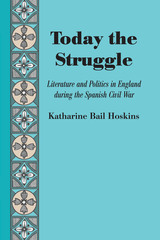 Today the Struggle: Literature and Politics in England during the Spanish Civil War
By Katharine Bail Hoskins
University of Texas Press, 1969 Many writers, from Aristophanes to Joseph Heller, have written about politics. But at certain periods in history, often at times of conflict and turmoil, writers have consciously used their literary talents to support or oppose a specific cause. The 1930s, a decade of widespread social and political breakdown, was such a period. Today the Struggle examines the political involvement of those leading British writers who dedicated their talents to the defense of Nationalists or Loyalists during the Spanish Civil War and who saw that war as symbolic of their own Right-Left dialogue. Conservatives like William Butler Yeats and T. S. Eliot and Roman Catholics like Evelyn Waugh were passionately anti-Communist. They viewed fascism as a bulwark against communism but were unwilling to support the Franco cause actively. Other pro-Nationalists were not so hesitant: Roy Campbell and Wyndham Lewis were ardent participants in the fight against the British left wing. Pro-Loyalists, united only in their antifascism, ranged from conservative to anarchist in political commitment. Their literary contributions included fine poems by W. H. Auden and Stephen Spender, experimental drama by Auden and Christopher Isherwood, and impassioned prose by Rex Warner, George Orwell, and Aldous Huxley. Katharine Hoskins’s principal interest in Today the Struggle is to discover how and why certain writers supported specific political actions, to ascertain the effectiveness of their efforts, and to evaluate the influence of these efforts on their work.
Today's Medieval University
M. J. Toswell
Arc Humanities Press, 2017 Just how medieval is the modern university? From their medieval beginnings in Western Europe, universities have remained monolithic and static entities, renovating themselves just enough to avoid massive interventions by the state or the church. Like parliamentary democracies, they function just well enough that while feelings of despair are frequent, and anticipation of imminent collapse constant, they continue. In the modern era, as universities face a new set of challenges, this book asks if there is not some value in pondering the medieval university, and the continuities that exist as much as do the fractures.
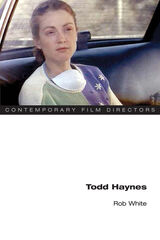 Todd Haynes
Rob White
University of Illinois Press, 2013 Todd Haynes's films are intricate and purposeful, combining the intellectual impact of art cinema with the emotional accessibility of popular genres. They are also underpinned by a serious commitment to feminism and queer theory. From his 1985 student film about Arthur Rimbaud to his shapeshifting portrait of Bob Dylan in I'm Not There (2007) and the riveting HBO miniseries Mildred Pierce (2011), Haynes has made films whose complex weave of stories and characters reveals dark, painful intensities. His taste for narrative experimentation and pastiche is haunted by anguish. Rob White's highly readable book, which includes a major new interview with Haynes, is the first comprehensive study of the director's work. Special attention is paid to the fascination with music culture (from the Carpenters to glam rock) and to the rich pattern of allusions to, or affinity with, predecessor filmmakers (Fassbinder, Ophuls, Sirk, and many more). But White's chief concern is the persistence of a queer impulse to explore social coercion and the possibility that there may be some way of escaping its cruelty.
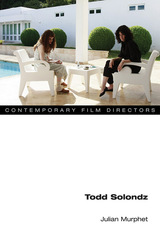 Todd Solondz
Julian Murphet
University of Illinois Press, 2019 Films like Welcome to the Dollhouse and Happiness established Todd Solondz as independent cinema's premier satirist. Blending a trademark black humor into atmospheres of grueling bleakness, Solondz repeatedly takes moviegoers into a bland suburban junk space peopled by the damaged, the neglected, and the depraved.Julian Murphet appraises the career of the controversial, if increasingly ignored, indie film auteur. Through close readings and a discussion with the director, Murphet dissects how Solondz's themes and techniques serve stories laden with hot-button topics like pedophilia, rape, and family and systemic cruelty. Solondz's uncompromising return to the same motifs, stylistic choices, and characters reject any idea of aesthetic progression. Instead, he embraces an art of diminishing returns that satirizes the laws of valuation sustaining what we call cinema. It also reflects both Solondz's declining box office fortunes and the changing economics of independent film in an era of financial contraction.
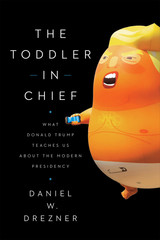 The Toddler in Chief: What Donald Trump Teaches Us about the Modern Presidency
Daniel W. Drezner
University of Chicago Press, 2020 “It may be cold comfort in this chaotic era, but Americans should know that there are adults in the room. . . . And we are trying to do what’s right even when Donald Trump won’t.”—An anonymous senior administrative official in an op-ed published in a New York Times op-ed, September 5, 2018
Every president faces criticism and caricature. Donald Trump, however, is unique in that he is routinely characterized in ways more suitable for a toddler. What’s more, it is not just Democrats, pundits, or protestors who compare the president to a child; Trump’s staffers, subordinates, and allies on Capitol Hill also describe Trump like a small, badly behaved preschooler.
In April 2017, Daniel W. Drezner began curating every example he could find of a Trump ally describing the president like a toddler. So far, he’s collected more than one thousand tweets—a rate of more than one a day. In The Toddler-in-Chief, Drezner draws on these examples to take readers through the different dimensions of Trump’s infantile behavior, from temper tantrums to poor impulse control to the possibility that the President has had too much screen time. How much damage can really be done by a giant man-baby? Quite a lot, Drezner argues, due to the winnowing away of presidential checks and balances over the past fifty years. In these pages, Drezner follows his theme—the specific ways in which sharing some of the traits of a toddler makes a person ill-suited to the presidency—to show the lasting, deleterious impact the Trump administration will have on American foreign policy and democracy.
The “adults in the room” may not be able to rein in Trump’s toddler-like behavior, but, with the 2020 election fast approaching, the American people can think about whether they want the most powerful office turned into a poorly run political day care facility. Drezner exhorts us to elect a commander-in-chief, not a toddler-in-chief. And along the way, he shows how we must rethink the terrifying powers we have given the presidency.
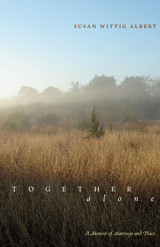 Together, Alone: A Memoir of Marriage and Place
By Susan Wittig Albert
University of Texas Press, 2009 What does it mean to belong to a place, to be truly rooted and grounded in the place you call home? How do you commit to a marriage, to a full partnership with another person, and still maintain your own separate identity? These questions have been central to Susan Wittig Albert's life, and in this beautifully written memoir, she movingly describes how she has experienced place, marriage, and aloneness while creating a home in the Texas Hill Country with her husband and writing partner, Bill Albert. Together, Alone opens in 1985, as Albert leaves a successful, if rootless, career as a university administrator and begins a new life as a freelance writer, wife, and homesteader on a patch of rural land northwest of Austin. She vividly describes the work of creating a home at Meadow Knoll, a place in which she and Bill raised their own food and animals, while working together and separately on writing projects. Once her sense of home and partnership was firmly established, Albert recalls how she had to find its counterbalance—a place where she could be alone and explore those parts of the self that only emerge in solitude. For her, this place was Lebh Shomea, a silent monastic retreat. In writing about her time at Lebh Shomea, Albert reveals the deep satisfaction she finds in belonging to a community of people who have chosen to be apart and experience silence and solitude.
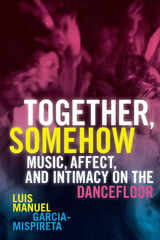 Together, Somehow: Music, Affect, and Intimacy on the Dancefloor
Luis Manuel Garcia-Mispireta
Duke University Press, 2023 In Together, Somehow, Luis Manuel Garcia-Mispireta examines how people find ways to get along and share a dancefloor, a vibe, and a sound. Drawing on time spent in the minimal techno and house music subscenes in Chicago, Paris, and Berlin as the first decade of the new millennium came to a close, Garcia-Mispireta explains this bonding in terms of what he calls stranger-intimacy: the kind of warmth, sharing, and vulnerability between people that happens surprisingly often at popular electronic dance music parties. He shows how affect lubricates the connections between music and the dancers. Intense shared senses of sound and touch help support a feeling of belonging to a larger social world. However, as Garcia-Mispireta points out, this sense of belonging can be vague, fluid, and may hide exclusions and injustices. By showing how sharing a dancefloor involves feeling, touch, sound, sexuality, and subculture, Garcia-Mispireta rethinks intimacy and belonging through dancing crowds and the utopian vision of throbbing dancefloors.
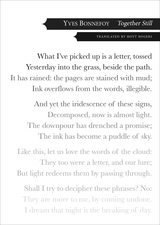 Together Still
Yves Bonnefoy
Seagull Books, 2017 Yves Bonnefoy’s final poetic work, a collection of reflections about poetry, legacy, and life.
The international community of letters mourned the recent death of Yves Bonnefoy, universally acclaimed as one of France’s greatest poets of the last half-century. A prolific author, he was often considered a candidate for the Nobel Prize and published a dozen major collections of poetry in verse and prose, several books of dream-like tales, and numerous studies of literature and art. His oeuvre has been translated into scores of languages, and he himself was a celebrated translator of Shakespeare, Yeats, Keats, and Leopardi.
Together Still is his final poetic work, composed just months before his death. The book is nothing short of a literary testament, addressed to his wife, his daughter, his friends, and his readers throughout the world. In these pages, he ruminates on his legacy to future generations, his insistence on living in the present, his belief in the triumphant lessons of beauty, and, above all, his courageous identification of poetry with hope.
A Tohono O'odham Grammar
Ofelia Zepeda
University of Arizona Press, 1983 This first pedagogical grammar of the Papago language features twenty chapters on grammatical constructions and five sample dialogs—plus abbreviations, symbols, summary of grammatical elements, and two glossaries. Classroom-tested for teaching both native and non-native speakers, the text also offers linguists an overview of the Papago language not available elsewhere.
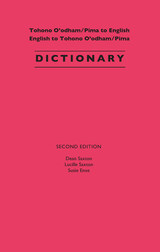 Tohono O'odham/Pima to English, English to Tohono O'odham/Pima Dictionary
Dean Saxton, Lucille Saxton, and Susie Enos
University of Arizona Press, 1983 The language of the Tohono O'odham (formerly known as Papago) and Pima Indians is an important subfamily of Uto-Aztecan spoken by some 14,000 people in southern Arizona and northern Sonora. This dictionary is a useful tool for native speakers, linguists, and any outsiders working among those peoples. The second edition has been expanded to more than 5,000 entries and enhanced by a more accessible format. It includes full definitions of all lexical items; taxonomic classification of plants and animals; restrictive labels; a pronunciation guide; an etymology of loan words; and examples of usage for affixes, idioms, combining forms, and other items peculiar to the Tohona O'odham-Pima language. Appendixes contain information on phonology, kinship and cultural terms, the numbering system, time, and the calendar. Maps and charts define the locations of place names, reservations, and the complete language family.
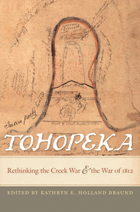 Tohopeka: Rethinking the Creek War and the War of 1812
Edited by Kathryn E. Holland Braund
University of Alabama Press, 2012 Tohopeka contains a variety of perspectives and uses a wide array of evidence and approaches, from scrutiny of cultural and religious practices to literary and linguistic analysis, to illuminate this troubled period. Almost two hundred years ago, the territory that would become Alabama was both ancient homeland and new frontier where a complex network of allegiances and agendas was playing out. The fabric of that network stretched and frayed as the Creek Civil War of 1813-14 pitted a faction of the Creek nation known as Red Sticks against those Creeks who supported the Creek National Council. The war began in July 1813, when Red Stick rebels were attacked near Burnt Corn Creek by Mississippi militia and settlers from the Tensaw area in a vain attempt to keep the Red Sticks’ ammunition from reaching the main body of disaffected warriors. A retaliatory strike against a fortified settlement owned by Samuel Mims, now called Fort Mims, was a Red Stick victory. The brutality of the assault, in which 250 people were killed, outraged the American public and “Remember Fort Mims” became a national rallying cry. During the American-British War of 1812, Americans quickly joined the war against the Red Sticks, turning the civil war into a military campaign designed to destroy Creek power. The battles of the Red Sticks have become part of Alabama and American legend and include the famous Canoe Fight, the Battle of Holy Ground, and most significantly, the Battle of Tohopeka (also known as Horseshoe Bend)—the final great battle of the war. There, an American army crushed Creek resistance and made a national hero of Andrew Jackson.
New attention to material culture and documentary and archaeological records fills in details, adds new information, and helps disabuse the reader of outdated interpretations.
Contributors
Susan M. Abram / Kathryn E. Holland Braund/Robert P. Collins / Gregory Evans Dowd / John E. Grenier / David S. Heidler / Jeanne T. Heidler / Ted Isham / Ove Jensen / Jay Lamar / Tom Kanon / Marianne Mills / James W. Parker / Craig T. Sheldon Jr. / Robert G. Thrower / Gregory A. Waselkov
 Toi Te Mana: An Indigenous History of Maori Art
Deidre Brown and Ngarino Ellis, with Jonathan Mane-Wheoki
University of Chicago Press, 2024 A landmark account in words and pictures of Māori art, by Māori art historians—from Polynesian voyaging waka to contemporary Māori artists.
He toi whakairo, he mana tangata.
Through artistic excellence, there is human dignity.
In six hundred pages and with over five hundred illustrations, this volume takes us on an extraordinary voyage through Māori art—from ancestral weavers to contemporary artists at the Venice Biennale, from whare whakairo to film, and from Te Puea Hērangi to Michael Parekōwhai.
Deidre Brown, Ngarino Ellis, and Jonathan Mane-Wheoki explore a wide field of art practices, including raranga (plaiting), whatu (weaving), moko (tattooing), whakairo (carving), rākai (jewellery), kākahu (textiles), whare (architecture), toi whenua (rock art), painting, photography, sculpture, ceramics, installation art, digital media, and film. The works discussed span a period from the arrival of Pacific voyagers eight hundred years ago to the contemporary artists working around the world today. With expansive chapters and breakout texts focusing on individual artists, movements, and events, Toi Te Mana is an essential book for anyone interested in te ao Māori.
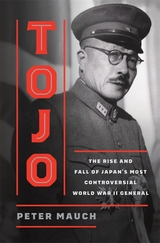 Tojo: The Rise and Fall of Japan's Most Controversial World War II General
Peter Mauch
Harvard University Press, 2026 The definitive biography of Tojo Hideki, the controversial general who redefined military leadership in Showa-era Japan before his downfall during World War II.
The military general who became Emperor Hirohito’s prime minister, Tojo Hideki is most often remembered as an iron-fisted leader who dragged Japan into World War II and—after spectacular losses—was eventually executed as a war criminal. Yet Tojo was far more than his ignominious end. In fact, as Peter Mauch argues, he was one of the twentieth century’s most accomplished military statesmen.
Over a career of some forty years, Tojo successfully launched himself into the highest echelons of political power. He was not only a tactical genius, Mauch shows, but also a savvy administrator, a fierce imperialist, and a deeply loyal advisor to the emperor. Tojo’s career took off with the notorious Kwantung Army in Manchuria, where he played a key role in escalating the Sino-Japanese War during the 1930s. As he rose through the ranks, becoming minister of war and then army chief of staff, he honed the efficiency of the Imperial Army and enhanced its influence within the emperor’s court. All the while, he deftly negotiated the fractious military rivalries that arose wherever he went. Brilliant, ambitious, and often ruthless, Tojo reached political heights that were perhaps matched only by his precipitous fall in the final months of World War II.
Layered and evocative, Tojo is at once a riveting military history of Showa-era Japan and a nuanced portrait of the relentless personality at its center.
Tokali Kilise: Tenth-Century Metorpolitan Art in Byzantine Cappadocia
Ann Wharton Epstein
Harvard University Press, 1986 Tokali Kilise (Buckle Church) was the principal sanctuary of a large monastic center in Byzantine Cappadocia, now central Turkey. This cave church was carved into the soft volcanic stone of the region and decorated with frescoes in several stages between the mid-ninth and mid-tenth centuries, and is one of the richest ensembles of painting to survive from the early Middle Ages.
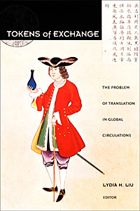 Tokens of Exchange: The Problem of Translation in Global Circulations
Lydia H. Liu, ed.
Duke University Press, 1999 The problem of translation has become increasingly central to critical reflections on modernity and its universalizing processes. Approaching translation as a symbolic and material exchange among peoples and civilizations—and not as a purely linguistic or literary matter, the essays in Tokens of Exchange focus on China and its interactions with the West to historicize an economy of translation. Rejecting the familiar regional approach to non-Western societies, contributors contend that “national histories” and “world history” must be read with absolute attention to the types of epistemological translatability that have been constructed among the various languages and cultures in modern times. By studying the production and circulation of meaning as value in areas including history, religion, language, law, visual art, music, and pedagogy, essays consider exchanges between Jesuit and Protestant missionaries and the Chinese between the seventeenth and nineteenth centuries and focus on the interchanges occasioned by the spread of capitalism and imperialism. Concentrating on ideological reciprocity and nonreciprocity in science, medicine, and cultural pathologies, contributors also posit that such exchanges often lead to racialized and essentialized ideas about culture, sexuality, and nation. The collection turns to the role of language itself as a site of the universalization of knowledge in its contemplation of such processes as the invention of Basic English and the global teaching of the English language. By focusing on the moments wherein meaning-value is exchanged in the translation from one language to another, the essays highlight the circulation of the global in the local as they address the role played by historical translation in the universalizing processes of modernity and globalization. The collection will engage students and scholars of global cultural processes, Chinese studies, world history, literary studies, history of science, and anthropology, as well as cultural and postcolonial studies. Contributors. Jianhua Chen, Nancy Chen, Alexis Dudden Eastwood, Roger Hart, Larissa Heinrich, James Hevia, Andrew F. Jones, Wan Shun Eva Lam, Lydia H. Liu, Deborah T. L. Sang, Haun Saussy, Q. S. Tong, Qiong Zhang
Tokens of Meaning: Papers in Honor of Lauri Karttunen
Edited by Cleo Condoravdi and Tracy Holloway King
CSLI, 2019 Lauri Karttunen has done groundbreaking work in theoretical and computational linguistics. The papers in this volume present new, state-of-the-art work building on his numerous contributions. The first part includes papers on formal semantics, the focus of Karttunen's early career to which he has returned in recent years. The second part provides a natural extension of his semantic work: the formal analysis of meaning and reasoning and the integration of the lexical and ontological components to enable reasoning by computational systems. The third part focuses on syntactic analyses, including the structure of non-finite clauses and sentence embedding predicates and factivity. The final part of the volume deals with finite state methods and grammars, reflecting Karttunen's extensive contributions to finite state theory and technology and its application to natural language.
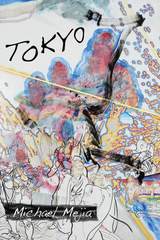 TOKYO
Michael Mejia
University of Alabama Press, 2018 A novel in three parts, linked by a single narrative of disaster, loss, and longing.
TOKYO is an incisive, shape-shifting tour de force, a genre-bending mix of lyric prose, science fiction, horror, and visual collage exploring the erotic undercurrents of American perceptions of Japanese culture and identity.
By turns noir, surreal, and clinical in its language and style, TOKYO employs metaphors of consumption, disease, theater, gender fluidity, monstrousness, and ecological disaster in intertwined accounts touching on matters of cultural appropriation, fiction's powerful capacity to produce immersive realities, and the culturally corrupting late capitalist excesses that entangle both the United States and Japan.
The novel opens with a fantastic, slyly comic report written by a Japanese executive, describing the anomalous bluefin tuna his company purchased at Tokyo’s iconic fish market, as well as the dissolution of the executive’s marriage to his Japanese-American, or Sansei, wife. But when an American writer—whose own Sansei wife was previously married to a Japanese executive—begins investigating the report’s author and his claims, assisted by a mysterious Japanese correspondent the American suspects may once have been his wife’s lover, identities begin to scramble until it’s uncertain who is imagining who, and who is and isn’t Japanese. Meanwhile, a secret plot to establish pure Japaneseness through the global distribution of genetically engineered bluefin tuna seems to be rushing toward its conclusion like a great wave.
 Tokyo Boogie-woogie and D.T. Suzuki
Shoji Yamada
University of Michigan Press, 2022 Tokyo Boogie-woogie and D.T. Suzuki seeks to understand the tensions between competing cultures, generations, and beliefs in Japan during the years following World War II, through the lens of one of its best-known figures and one of its most forgotten. Daisetsu Teitaro Suzuki (D.T. Suzuki) was a prolific scholar and translator of Buddhism, Zen, and Chinese and Japanese philosophy and religious history. In the postwar years, he was a central figure in the introduction of Buddhism to the United States and other English-language countries, frequently traveling and speaking to this end. His works helped define much of these interpretations of ‘Eastern Religion’ in English, as well as shape views of modern Japanese Buddhism.
Against this famous figure, however, is a largely unknown or forgotten shape: Suzuki Alan Masaru. Alan was D.T. Suzuki’s adopted son and, though he remained within his father’s shadow, is mostly known as the lyricist of the iconic pop hit “Tokyo Boogie-woogie.” Perhaps due to his frequent scandals and the fraught nature of the relationship, Alan remains unmentioned and unstudied by scholars and historians. Yet by exploring the nature of the relationship between these two, Shoji Yamada digs into the conflicting memories and experiences of these generations in Japan.
 Tokyo Boogie-Woogie: Japan’s Pop Era and Its Discontents
Hiromu Nagahara
Harvard University Press, 2017 In this first English-language history of the origins and impact of the Japanese pop music industry, Hiromu Nagahara connects the rise of mass entertainment, epitomized by ryūkōka (“popular songs”), with Japan’s transformation into a middle-class society in the years after World War II.
With the arrival of major international recording companies like Columbia and Victor in the 1920s, Japan’s pop music scene soon grew into a full-fledged culture industry that reached out to an avid consumer base through radio, cinema, and other media. The stream of songs that poured forth over the next four decades represented something new in the nation’s cultural landscape. Emerging during some of the most volatile decades in Japan’s history, popular songs struck a deep chord in Japanese society, gaining a devoted following but also galvanizing a vociferous band of opponents. A range of critics—intellectuals, journalists, government officials, self-appointed arbiters of taste—engaged in contentious debates on the merits of pop music. Many regarded it as a scandal, evidence of an increasingly debased and Americanized culture. For others, popular songs represented liberation from the oppressive political climate of the war years.
Tokyo Boogie-Woogie is a tale of competing cultural dynamics coming to a head just as Japan’s traditionally hierarchical society was shifting toward middle-class democracy. The pop soundscape of these years became the audible symbol of changing times.
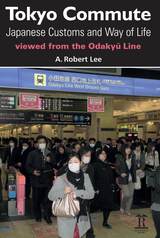 Tokyo Commute: Japanese Customs and Way of Life Viewed from the Odakyu Line
Robert Lee
Amsterdam University Press, 2011 A unique take on modern life in Japan’s capital city. A Japan of trains, every day to and fro, carriage scenes and theatre, vistas from the window, advertising posters. Each to be savoured through a specific Tokyo line – the Odakyu. Pitched as creative text and line-graphics, Tokyo Commute: Japanese Customs and Way of Life Viewed from the Odakyu Line offers on-track and off-track observations. A gallery of mirrors, musings, memories. This is less documentary than iconography, a poetics of Japanese routine and etiquette. It offers a wry diary of month-and-weekday observations, a ‘map’ of Shinjuku as key station and gathering-place, a run of notable Tokyo locations – from the National bunraku theatre to a Kawasaki sludge recycling centre. Other Odakyu travel involves the Hakone open air art gallery, Narita as both airport and temple complex, Yokohama as history and Chinatown. Essential reading for first-time, and second-time visitors, and even regular commuters.
 Tokyo Rising: The City Since the Great Earthquake
Edward Seidensticker
Harvard University Press, 1991 The Great Earthquake of 1923 left much of Tokyo desolate. Shitamachi, the Low City, heart of Tokyo's cultural life for centuries, was a smoking ruin--hundreds of blocks of wooden dwellings, teahouses, and entertainment quarters gone forever. Yet Tokyo was a city that would not die. Here, in his brilliant sequel to Low City, High City: Tokyo from Edo to the Earthquake, Edward Seidensticker carries the story of this irrepressible metropolis forward to the present, showing it rising not only from the disaster of the earthquake but a second time, from the still more serious catastrophe of 1945, to become a city in which skyscrapers stand in the midst of neighborhoods jammed full of little bars and "soaplands," baseball is the national sport, one can spend $500 on a meal, the best subway system in the world is matched by the worst traffic jams, and only a multimillionaire can afford to buy a house. Exciting, horrifying, utterly distinctive, modern Tokyo comes to life in Tokyo Rising as never before.
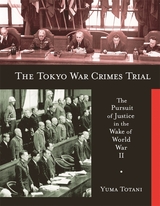 The Tokyo War Crimes Trial: The Pursuit of Justice in the Wake of World War II
Yuma Totani
Harvard University Press, 2008 This book assesses the historical significance of the International Military Tribunal for the Far East (IMTFE)—commonly called the Tokyo trial—established as the eastern counterpart of the Nuremberg trial in the immediate aftermath of World War II.
Through extensive research in Japanese, American, Australian, and Indian archives, Yuma Totani taps into a large body of previously underexamined sources to explore some of the central misunderstandings and historiographical distortions that have persisted to the present day. Foregrounding these voluminous records, Totani disputes the notion that the trial was an exercise in “victors’ justice” in which the legal process was egregiously compromised for political and ideological reasons; rather, the author details the achievements of the Allied prosecution teams in documenting war crimes and establishing the responsibility of the accused parties to show how the IMTFE represented a sound application of the legal principles established at Nuremberg.
This study deepens our knowledge of the historical intricacies surrounding the Tokyo trial and advances our understanding of the Japanese conduct of war and occupation during World War II, the range of postwar debates on war guilt, and the relevance of the IMTFE to the continuing development of international humanitarian law.
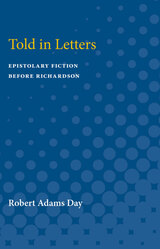 Told in Letters: Epistolary Fiction Before Richardson
Robert Adams Day
University of Michigan Press, 1966 Told in Letters is a study of the English novel before it came of age with Richardson's Pamela. The first book to trace the history and methods of using letters to tell a story, it draws on more than 200 little-known works written before Pamela. Many of these were designed for a public that had little concern with art.Here we see the origins of the psychological novel in its most primitive form. We also discover the achievements of early letter fiction such as the "familiar letter" and the widely imitated innovations of French fiction. In addition, Told in Letters portrays the Grub Street world that gave birth to popular literature, and describes the power that booksellers and popular taste had over these early novels.Finally, Richardson is reassessed in the light of his predecessors' writing, and we understand better the origins of a literary technique that did so much to revolutionize English fiction in the middle of the eighteenth century.
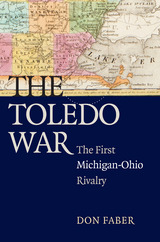 The Toledo War: The First Michigan-Ohio Rivalry
Don Faber
University of Michigan Press, 2008 Most are familiar with the Michigan-Ohio football rivalry, an intense but usually good-natured contest that stretches back over one hundred years. Yet far fewer may know that in the early nineteenth century Michigan and Ohio were locked in a different kind of battle---one that began before Michigan became a state. The conflict started with a long-simmering dispute over a narrow wedge of land called the Toledo Strip. Early maps were famously imprecise, adding to the uncertainty of the true boundary between the states. When Ohio claimed to the mouth of the Maumee River, land that according to the Northwest Ordinance of 1787 fell in the territory of Michigan, the "Toledo War" began. Today the fight may bring a smile to Michiganians and Ohioans because both states benefited: Ohioans won the war and Michigan got the Upper Peninsula. But back then passions about rightful ownership ran high, and it would take many years---and colorful personalities all the way up to presidents---to settle the dispute. The Toledo War: The First Michigan-Ohio Rivalry gives a well-researched and fascinating account of the famous war.
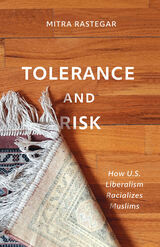 Tolerance and Risk: How U.S. Liberalism Racializes Muslims
Mitra Rastegar
University of Minnesota Press, 2021 How apparently positive representations of Muslims in U.S. media cast Muslims as a racial population
Portrayals of Muslims as the beneficiaries of liberal values have contributed to the racialization of Muslims as a risky population since the September 11 attacks. These discourses, which hold up some Muslims as worthy of tolerance or sympathy, reinforce an unstable good Muslim/bad Muslim binary where any Muslim might be moved from one side to the other. In Tolerance and Risk, Mitra Rastegar explores these discourses as a component of the racialization of Muslims—where Muslims are portrayed as a highly diverse population that nevertheless is seen to contain within it a threat that requires constant vigilance. Tolerance and Risk brings together several case studies to examine the interrelation of representations of Muslims abroad and in the United States. These include human-interest stories and opinion polls of Muslim Americans, media representations of education activist Malala Yousafzai, LGBTQ activist discourses, local New York controversies surrounding Muslim-led public projects, and social media discourses of the Syrian refugee crisis. Tolerance and Risk demonstrates how representations of tolerable or sympathetic Muslims produce them as a population with distinct characteristics, capacities, and risks, and circulate standards by which the trustworthiness or threat of individual Muslims must be assessed. Tolerance and Risk examines the ways that discourses of liberal rights, including feminist and LGBTQ rights discourses, are mobilized to racialize Muslims as uncivilized, even as they garner sympathy and identification with some Muslims.
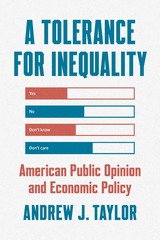 A Tolerance for Inequality: American Public Opinion and Economic Policy
Andrew J. Taylor
University of Chicago Press, 2025 A nuanced reassessment of US democratic responsiveness and public opinion on economic policy that explores the real reasons government does not do more to mitigate inequality. Many believe that the United States’ growing economic inequality is the result of a political system that has been captured by wealthy elites. But is economic capture actually the problem? In A Tolerance for Inequality, Andrew J. Taylor examines this question from multiple angles, drawing on public opinion data and analyses of representation in Congress. Taylor finds that economic policy outcomes are more reflective of public opinion than the common wisdom suggests. Broadly, less-affluent Americans’ policy preferences are not meaningfully different from the preferences of other Americans, and Washington is responsive to these preferences. Although politicians are more affluent, on average, than most Americans, this does not prevent them from representing the economic views of their poorer constituents. Today’s Democratic Party is more interested in regulation and supplying public goods than redistributing wealth downwards, and political reforms designed to provide more equal outcomes are largely misguided. In short, Americans get the kind of economy they at least say they want.
 The Tolerance Generation: Growing Up Online in the Anti-Bullying Era
Sarah Miller
University of Chicago Press Draws directly on insights from teens to reframe our understanding of bullying in the age of social media and why anti-bullying campaigns have been unsuccessful in combating it.
Fitting in and standing out in high school is an eternal rite of passage for youth. Increasingly, these struggles to establish and maintain hierarchies are labeled under the umbrella of “bullying.” This form of conflict is considered such a significant problem that all fifty states have passed anti-bullying legislation, and many schools engage in prevention programs. Despite these efforts, bullying rates haven’t decreased. Why is that? Today’s teens face a unique challenge: social media.
In The Tolerance Generation, sociologist Sarah Miller explores how youth grapple with bullying in the digital age and the industry designed to prevent it. Based on two school years with students at a Northeastern high school, Miller calls “Township,” the book chronicles how adolescents navigate conflict in an increasingly digital society, all while their educators promote tolerance. Charting teens’ lives as they are affected not only by bullying, but also by sexting exposures, school shooting threats, and viral cancel culture, their stories illustrate the amplifying pressures social media places on youth and why bullying prevention efforts fail to help them. The school’s anti-bullying campaigns are engineered to address individual instances of explicit conflict, but not to change the culture that contributes to and constitutes bullying, nor to help students who are most likely to be targeted. Miller captures school practices that fail to address bullying as a systemic problem, while she shows how students’ online lives are inextricable from a culture of exclusion and harm.
However, by following teens on a variety of platforms, she also documents another realm, where adolescents develop their own bullying prevention strategies using the very tools adults blame for bullying. Here, youth harness digital culture to go beyond tolerance, using social media as a site for education, conflict resolution, and resistance. Ultimately, Miller establishes that to prevent bullying, schools must address the structural factors that marginalize students and offer tools for creating a true culture of care that supports youth both at school and online.
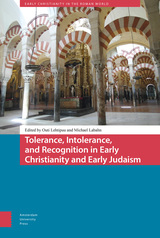 Tolerance, Intolerance, and Recognition in Early Christianity and Early Judaism
Outi Lehtipuu
Amsterdam University Press, 2021 This collection of essays investigates signs of toleration, recognition, respect and other positive forms of interaction between and within religious groups of late antiquity. At the same time, it acknowledges that examples of tolerance are significantly fewer in ancient sources than examples of intolerance and are often limited to insiders, while outsiders often met with contempt, or even outright violence. The essays take both perspectives seriously by analysing the complexity pertaining to these encounters. Religious concerns, ethnicity, gender and other social factors central to identity formation were often intertwined and they yielded different ways of drawing the limits of tolerance and intolerance. This book enhances our understanding of the formative centuries of Jewish and Christian religious traditions. It also brings the results of historical inquiry into dialogue with present-day questions of religious tolerance.
The book contains contributions by Ismo Dunderberg, Carmen Palmer, Michael Labahn, Nina Nikki, Anna-Liisa Rafael, Sami Yli-Karjanmaa, Galit Hasan-Rokem & Israel Yuval, Paul Middleton, Outi Lehtipuu, Elizabeth Dowling, and Amy-Jill Levine.
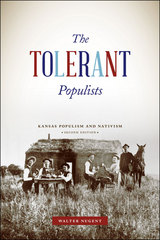 The Tolerant Populists, Second Edition: Kansas Populism and Nativism
Walter Nugent
University of Chicago Press, 2013 A political movement rallies against underregulated banks, widening gaps in wealth, and gridlocked governments. Sound familiar? More than a century before Occupy Wall Street, the People’s Party of the 1890s was organizing for change. They were the original source of the term “populism,” and a catalyst for the later Progressive Era and New Deal.
Historians wrote approvingly of the Populists up into the 1950s. But with time and new voices, led by historian Richard Hofstadter, the Populists were denigrated, depicted as demagogic, conspiratorial, and even anti-Semitic.
In a landmark study, Walter Nugent set out to uncover the truth of populism, focusing on the most prominent Populist state, Kansas. He focused on primary sources, looking at the small towns and farmers that were the foundation of the movement. The result, The Tolerant Populists, was the first book-length, source-based analysis of the Populists. Nugent’s work sparked a movement to undo the historical revisionism and ultimately found itself at the center of a controversy that has been called “one of the bloodiest episodes in American historiography.”
This timely re-release of The Tolerant Populists comes as the term finds new currency—and new scorn—in modern politics. A definitive work on populism, it serves as a vivid example of the potential that political movements and popular opinion can have to change history and affect our future.
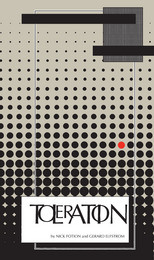 Toleration
Nicholas G. Fotion
University of Alabama Press, 1992 Most regard toleration as an unattractive fallback position of compromise and so tend to overlook it in favor of such active concepts as freedom, equality, and justice. Fotion and Elfstrom argue that toleration offers us the useful possibility of responding to a difficult situation with a degree of flexibility not possible with the dichotomous concepts of good-bad, right-wrong, ethical-unethical, Right-Left. Tolerating saturates ordinary human life and infuses public discussions of religion, morality, and politics. It forms a major strand in the history of Western European thought. Yet the word “toleration” and similar terms are rarely used. Unnoticed and unremarked, they are like the air that surrounds us, vitally important yet invisible. The authors seek to address this oversight in several ways. They begin with a thorough conceptual analysis of toleration and its kindred concepts. They are convinced that an appreciation of the importance of the family of toleration concepts must be founded on an understanding of the various ways in which they function in our language and our lives. In addition, they examine the historical development of the concept of toleration and canvass the major arguments people have employed either to urge toleration or to disparage it. They examine the role of toleration in liberal political philosophy and respond to the major critics of liberal toleration. The authors also discuss a number of factors that cause toleration to be overlooked in political debate and personal reflection and offer evidence to support the view that this omission is unfortunate. In particular, they argue that toleration has the crucial role of helping people live with one another with respect and dignity in the fractious and contentious world we inhabit. With the rise of racism and other forms of religious, political, and social intolerance, people on all sides of the present debates concerning multi-culturalism and diversity will benefit from this timely and lucidly argued philosophical discussion of the concepts of toleration and its possible application in a less-than-perfect world.
Tolkein Studies: Volume XI
Michael Drout
West Virginia University Press, 2014 Tolkien Studies: An Annual Scholarly Review presents the growing body of critical commentary and scholarship on both J. R. R. Tolkien’s voluminous fiction and his academic work in literary and linguistic fields.
 Tolkien among the Moderns
Ralph C. Wood
University of Notre Dame Press, 2015 It has long been recognized that J. R. R. Tolkien's work is animated by a profound moral and religious vision. It is less clear that Tolkien's vision confronts the leading philosophical and literary concerns addressed by modern writers and thinkers. This book seeks to resolve such uncertainty. It places modern writers and modern quandaries in lively engagement with the broad range of Tolkien's work, while giving special attention to the textual particularities of his masterpiece, The Lord of the Rings.
In ways at once provocative and original, the contributors deal with major modern artists and philosophers, including Miguel de Cervantes, Friedrich Nietzsche, Emmanuel Levinas, Iris Murdoch, and James Joyce. The essays in Tolkien among the Moderns also point forward to postmodernism by examining its implications for Tolkien's work. Looking backward, they show how Tolkien addresses two ancient questions: the problems of fate and freedom in a seemingly random universe, as well as Plato's objection that art can neither depict truth nor underwrite morality. The volume is premised on the firm conviction that Tolkien is not a writer who will be soon surpassed and forgotten—exactly because he has a permanent dwelling place "among the moderns."
"This collection of essays places Tolkien in the context of the big themes of philosophy, historically and today. It will speak to readers who are already drawn to the work of Tolkien and who either have a desire to see into his work more deeply or desire to see how his work might be employed to think about other matters, for example, how might the work of Tolkien impact the so-called warfare between poetry and philosophy. I believe that the work of Tolkien is here to stay, that it will continue to stand the test of time, and that intelligent, curious readers will find Tolkien among the Moderns deeply rewarding." —Charles Taliaferro, St. Olaf College
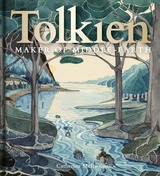 Tolkien: Maker of Middle-earth
Edited by Catherine McIlwaine
Bodleian Library Publishing, 2018 The range of J. R. R. Tolkien’s talents is remarkable. Not only was he an accomplished linguist and philologist, as well as a scholar of Anglo-Saxon and medieval literature and Norse folklore, but also a skillful illustrator and storyteller. Drawing on these talents, he created a universe which is for many readers as real as the physical world they inhabit daily.
Tolkien: Maker of Middle-earth explores the huge creative endeavor behind Tolkien’s enduring popularity. Lavishly illustrated with three hundred images of his manuscripts, drawings, maps, and letters, the book traces the creative process behind his most famous literary works—The Hobbit, The Lord of the Rings, and The Silmarillion—and reproduces personal photographs and private papers, many of which have never been seen before in print.
Six essays introduce the reader to the person of J. R. R. Tolkien and to main themes in his life and work, including the influence of northern languages and legends on the creation of his own legendarium; his concept of “Faërie” as an enchanted literary realm; the central importance of his invented languages in his fantasy writing; his visual imagination and its emergence in his artwork; and the encouragement he derived from his close friend C. S. Lewis and their literary group the Inklings.
The book brings together the largest collection of original Tolkien material ever assembled in a single volume. Drawing on the extensive archives of the Tolkien collections at the Bodleian Libraries, Oxford, which stretch to more than five hundred boxes, and Marquette University, Milwaukee, as well as private collections, this hugely ambitious and exquisitely produced book draws together the worlds of J. R. R. Tolkien – scholarly, literary, creative, and domestic—offering a rich and detailed understanding and appreciation of this extraordinary author.
This landmark publication, produced on the occasion of a major exhibition at the Bodleian Libraries in Oxford in 2018 and at the Morgan Library in New York in 2019, is set to become a standard work in the literature on J. R. R. Tolkien.
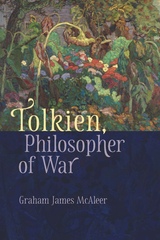 Tolkien, Philosopher of War
Graham McAleer
Catholic University of America Press, 2024 Book sales of the works of J.R.R. Tolkien keep pace with those of the Koran and the Bible. TV companies pay hundreds of millions to the Tolkien Trust to make adaptations of his work. In the UK, he routinely tops the list of the nation’s favorite authors. An estimated 2 million war gamers use The Lord of the Rings figurines in their RPG. It is incontestable that Tolkien is the most influential Catholic writer of the last century. Tolkien, Philosopher of War fills a gap in the scholarship. It is the first book addressing the philosophical and theological understanding of war in Tolkien and will interest readers of Catholic Studies, the philosophy and theology of literature, war studies, Tolkien Studies, English studies, political theory, and aesthetics.
In popular imagination, Tolkien is a Luddite, but recent scholarship has identified Tolkien’s extensive modern sympathies. Tolkien, Philosopher of War contributes to this growing literature. His is a modern critique of Enlightenment thinking, specifically those philosophies of history that wrest the initiative from God in divinizing man. His worry is apocalyptic politics, those political movements that take Christ’s "Be ye therefore perfect, even as your Father which is in heaven is perfect" (Matt. 5: 48) out of the realm of grace and make it a platform for political action. Tolkien, Philosopher of War has three core theses: metaphysical, political, and aesthetic. In this, Tolkien is comparable to Cormac McCarthy, especially his Blood Meridian.
Tolkien took note of a tight analytical connection between the vanity driving commercial civilization – which Hume, Smith, and Ferguson all identified – and the vanity driving the Promethean fantasies of apocalyptic politics. War – indeed, total war – is a predictable outcome of this analytical connection. The three theses run: 1) metaphysical: the apocalyptic anxiety of Tolkien’s lore is traceable to the gnostic rejection of the analogy of being typical of the philosophies of history that dominated his day; 2) political: in the English context, Tolkien sided with the Tories against Whiggery, defending monarchy as a counterweight to the vanity driving progressive philosophy of history; 3) aesthetic: Futurism’s philosophy of history celebrated the Machine; inverting the value order, the Futurism art movement encoded anti-Christianity, fascist politics, and apocalyptic war. Tolkien’s “cosmogonical drama,” with its pastoralism and portraits of angels (Gandalf) and gods (Nienna), dramatizes an aesthetic resistance to Futurism.
Tolkien Studies: An Annual Scholarly Review, Volume III
Michael D.C. Drout
West Virginia University Press, 2006 Tolkien Studies: An Annual Scholarly Review presents the growing body of critical commentary and scholarship on both J. R. R. Tolkien's voluminous fiction and his academic work in literary and linguistic fields.
Tolkien Studies: An Annual Scholarly Review, Volume II
Michael D.C. Drout
West Virginia University Press, 2005 Tolkien Studies: An Annual Scholarly Review presents the growing body of critical commentary and scholarship on both J. R. R. Tolkien's voluminous fiction and his academic work in literary and linguistic fields.
Tolkien Studies: An Annual Scholarly Review, Volume IV
Michael D.C. Drout
West Virginia University Press, 2007 Tolkien Studies: An Annual Scholarly Review presents the growing body of critical commentary and scholarship on both J. R. R. Tolkien's voluminous fiction and his academic work in literary and linguistic fields.
Tolkien Studies: An Annual Scholarly Review, Volume IX
Drout
West Virginia University Press, 2012 Tolkien Studies: An Annual Scholarly Review presents the growing body of critical commentary and scholarship on both J. R. R. Tolkien's voluminous fiction and his academic work in literary and linguistic fields.
Tolkien Studies: An Annual Scholarly Review, Volume V
Michael D.C. Drout
West Virginia University Press, 2008 Tolkien Studies: An Annual Scholarly Review presents the growing body of critical commentary and scholarship on both J. R. R. Tolkien's voluminous fiction and his academic work in literary and linguistic fields.
Tolkien Studies: An Annual Scholarly Review, Volume VI
Michael D.C. Drout
West Virginia University Press, 2009 Tolkien Studies: An Annual Scholarly Review presents the growing body of critical commentary and scholarship on both J. R. R. Tolkien's voluminous fiction and his academic work in literary and linguistic fields
Tolkien Studies: An Annual Scholarly Review, Volume VII
Michael D.C. Drout
West Virginia University Press, 2010 Tolkien Studies: An Annual Scholarly Review presents the growing body of critical commentary and scholarship on both J. R. R. Tolkien's voluminous fiction and his academic work in literary and linguistic fields.
Tolkien Studies: An Annual Scholarly Review, Volume VIII
Michael D.C. Drout
West Virginia University Press, 2011 Tolkien Studies: An Annual Scholarly Review presents the growing body of critical commentary and scholarship on both J. R. R. Tolkien's voluminous fiction and his academic work in literary and linguistic fields.
Tolkien Studies, Volume X
Michael Drout
West Virginia University Press, 2013 Tolkien Studies: An Annual Scholarly Review presents the growing body of critical commentary and scholarship on both J. R. R. Tolkien's voluminous fiction and his academic work in literary and linguistic fields. The founding editors are Douglas A. Anderson (The Annotated Hobbit), Michael D. C. Drout (Beowulf and the Critics), and Verlyn Flieger (Splintered Light: Logos and Language in Tolkien's World). Volumes I-IX of this journal are currently available for individual purchase.
Tolkien: Treasures
Catherine McIlwaine
Bodleian Library Publishing, 2018 This beautifully illustrated book showcases the highlights of the Tolkien archives held at the Bodleian Library. From J. R. R. Tolkien’s childhood in the Midlands and his experience of the First World War to his studies at school and university, from his exquisite illustrations for The Silmarillion, The Hobbit, and The Lord of the Rings to his intricate and beautiful maps showing the topography of Middle-earth, this stunning book is a perfect introduction to Tolkien’s life and works. Tolkien: Treasures sheds light on the extraordinary genius and imagination that brought us Middle-earth, with all its Elves, Dwarves, Orcs, Ringwraiths, Wizards, and, of course, Hobbits.
Tolstoy and His Problems: Views from the Twenty-First Century
Edited by Inessa Medzhibovskaya
Northwestern University Press, 2019 Assessing the relevance of Tolstoy's thought and teachings for the current day, Tolstoy and His Problems: Views from the Twenty-First Century is a collection of essays by a group of Tolstoy specialists who are leading scholars in the humanities and social sciences.
In the broadest sense—with essays on a variety of issues that occupied Tolstoy, such as nihilism, mysticism, social theory, religion, Judaism, education, opera, and Shakespeare—the volume offers a fresh evaluation of Tolstoy's program to reform the ways we live, work, commune with nature and art, practice spirituality, exchange ideas and knowledge, become educated, and speak and think about history and social change.
Tolstoy on Screen
Edited by Lorna Fitzsimmons and Michael A. Denner
Northwestern University Press, 2015 Scholarship on screen adaptation has proliferated in recent years, but it has remained largely focused on English- and Romance-language authors. Tolstoy on Screen aims to correct this imbalance with a comprehensive examination of film and television adaptations of Tolstoy’s fiction. Spanning the silent era to the present day, these essays consider well-known as well as neglected works in light of contemporary adaptation and media theory. The book is organized to facilitate a comparative, cross-cultural understanding of the various practices employed in different eras and different countries to bring Tolstoy’s writing to the screen. International in scope and rigorous in analysis, the essays cast new light on Tolstoy’s work and media studies alike.
Tolstoy: Plays: Volume III: 1894-1910
Leo Tolstoy
Northwestern University Press, 1998 Although Tolstoy's fame rests on his novels, he was also a prolific dramatist. Because his plays are satirical, didactic, and colored by complex peasant dialect, earlier translations have been seriously flawed. These imperfect translations, coupled with Tolstoy's famous polemics against Shakespeare and Chekhov, have reinforced the general misapprehension that Tolstoy was not a dramatist.
Now noted Slavic philologist Marvin Kantor and Tatiana Tulchinsky have prepared the first complete English translation of the great writer's plays. This volume contains plays written during the years 1894 to 1910, including:
Peter the Breadman
And the Light Shineth in Darkness
The Living Corpse
The Wisdom of Children
The Traveler and the Peasant
The Cause of It All
Tolstoy's Major Fiction
Edward Wasiolek
University of Chicago Press, 1981 "Edward Wasiolek, after much valuable work on Dostoevsky, has now written one of the best books on Tolstoy in recent decades. This may be in part because of his preoccupation with Tolstoy's most challenging contemporary, and the resulting sense of their unlikeness in a common pursuit. But there are other, unspeculative reasons. Few studies of Tolstoy have been so carefully pondered and so firmly organized to convince; and not so many show the flexibility and variety of its approach. Wasiolek proposes an essentially simple and consistent reading, but he advances it with subtlety and discretion."—Henry Gifford, Times Literary Supplement
Tolstoy's Phoenix: From Method to Meaning in War and Peace
George R. Clay
Northwestern University Press, 1998 By examining Tolstoy's techniques and analyzing the structure of War and Peace, essayist George R. Clay offers a fresh perspective and jargon-free analysis of one of the world's greatest novels. Beginning with Tolstoy's strategies, devices, and structural elements, Clay moves beyond previous approaches and reveals the novel's larger thematic concerns, showing how all the pieces fit into an overall pattern that he calls the phoenix design.
Tolstoy's "The Death of Ivan Ilich": A Critical Companion
Gary R. Jahn
Northwestern University Press, 1998 This latest volume in the acclaimed AATSEEL series assembles fact and informed opinion on the most celebrated work of Tolstoy's later period. Published for the first time are a new stylistic analysis of the novel by C.J.G. Turner and a psychological commentary by Daniel Rancour-Laferriere. Reprinted work includes landmark papers on the symbolism of the novel by Rimgaila Salys and on its central thematic concerns by George J. Gutsche. Completing the volume is Philip Rogers's discussion of the novel from the point of view of the comparatist. Editor Gary R. Jahn adds both factual and interpretative annotations to the novel.
Tom Ashley, Sam McGee, Bukka White: Tennessee Traditional Singers
Thomas G. Burton
University of Tennessee Press, 2005 Based on a deep understanding of several genres of music, Burton shows the diversity of traditional music, and particularly singing styles, in the state that is the gateway for blues, country, and folk music.
 Tom Blackwell: The Complete Paintings, 1970–2014
Linda Chase
The Artist Book Foundation, 2018 Tom Blackwell (1938–2020) is primarily known for his work in Photorealism, a stylistic movement noted for its ardent embrace of photographic source material. In 1969, he began a series of brashly beautiful motorcycle paintings that established him as one of the founders and foremost artists of the movement. The myriad painterly possibilities of urban store windows became another abiding interest. In his store-window paintings, Blackwell captures the counterpoint between the idealized reality within the store display and the bustling urban life reflected in the glass. As author Linda Chase remarks, “The magic of these paintings resides in the artist’s ability to transform the arbitrary photographic information into dynamic and complex artistic compositions, revealing and clarifying the image while preserving its mystery.”
In conjunction with his Photorealist paintings, Blackwell has produced a related body of work that is allegorical in its perspective. Combining photo-derived images, he addresses themes such as the passage of time, the fragility of nature, and the continuity that weaves through human history. The paintings, rich in symbolism and interpretive possibilities, fascinate and impress viewers with the breadth of Blackwell’s abilities. “As a painter, I have been interested in dealing with the formal issues involved in juxtaposed and overlapping images,” he explains. “In my Photorealism work, my goal is to reveal something about the actual world and to explore our photo-mediated perceptions of it.”
Blackwell, born in Chicago in 1938, has deftly captured the vibrancy and visual excitement of urban street life for the past four decades and has had solo exhibitions across the United States and abroad. Tom Blackwell: The Complete Paintings, 1970–2014 is a comprehensive study of the artist’s work as well as his artistic development and process, and includes a compilation of his early paintings through to his most recent works. His paintings are in numerous collections, including the Museum of Modern Art, New York, NY; the Guggenheim Museum, New York, NY; the Detroit Institute of Arts, Detroit, MI; the Smithsonian Institution, Washington, DC; Yale University Art Gallery, New Haven, CT; and the Huntington Art Museum, Austin, TX.
 Tom Slaughter
David Marshall
The Artist Book Foundation, 2019 Of Tom Slaughter, Henry Geldzahler, the first curator of twentieth-century art at The Metropolitan Museum of Art, commented: “The quality of freshness, the familiar world re-seen, from the water towers of New York City to the rural pleasures of boating, is the most immediately arresting aspect of Tom Slaughter’s art. . . . Bold bright colors swiftly laid down echo with resonances: Léger and Stuart Davis, Raoul Dufy and Roy Lichtenstein.” Slaughter’s work, with its seemingly effortless whimsy rendered with a strong sense of line, color, and rhythm, has also been compared to Matisse. His Pop-inflected drawings, prints, paintings, and illustrations convey his love of life as he relentlessly explored the complexities of the urban scene or the simple pleasures of boating. The Artist Book Foundation is pleased to announce the publication of Tom Slaughter, an extensive monograph of the artist’s enormous body of work that celebrates his enduring optimism, personal and artistic honesty, and charming brashness in a landscape of pure joy.
 Tom Slaughter
Glenn Lowry
The Artist Book Foundation, 2019 Of Tom Slaughter, Henry Geldzahler, the first curator of twentieth-century art at The Metropolitan Museum of Art, commented: “The quality of freshness, the familiar world re-seen, from the water towers of New York City to the rural pleasures of boating, is the most immediately arresting aspect of Tom Slaughter’s art. . . . Bold bright colors swiftly laid down echo with resonances: Léger and Stuart Davis, Raoul Dufy and Roy Lichtenstein.” Slaughter’s work, with its seemingly effortless whimsy rendered with a strong sense of line, color, and rhythm, has also been compared to Matisse. His Pop-inflected drawings, prints, paintings, and illustrations convey his love of life as he relentlessly explored the complexities of the urban scene or the simple pleasures of boating. The Artist Book Foundation is pleased to announce the publication of Tom Slaughter, an extensive monograph of the artist’s enormous body of work that celebrates his enduring optimism, personal and artistic honesty, and charming brashness in a landscape of pure joy.
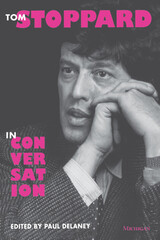 Tom Stoppard in Conversation
Paul Delaney, Editor
University of Michigan Press, 1994 This collection of interviews with British playwright Tom Stoppard, author of such well-known comedies as Travesties, Jumpers, and Rosencrantz and Guildenstern Are Dead, brings together for the first time Stoppard's most significant assessments of his own work. A wide range of discussions are featured, from extensive conversations with the editors of Theatre Quarterly and Gambit to important interviews in lesser-known periodicals. The interviews include the playwright's unguarded comments to the daily press, from those of a dazzled young Stoppard the morning after the triumphant opening of Rosencrantz and Guildenstern to those of a veteran playwright still smarting from caustic reviews 36 hours after the opening of Hapgood. The interviews cover the full range of Stoppard's work, from his adaptations for the stage to his increasing involvement in film, and this volume makes many of them available for the first time. Also appearing for the first time in print are transcripts of radio interviews and an informal lecture by Stoppard called "The Event and the Text." Tom Stoppard's conversations about his work shed light on questions of authorial intent and the creative process. Debates over interpretations of the plays will be enhanced by this record of Stoppard's own perceptions and insights. The collection also includes the most extensive bibliography and discography ever compiled of Stoppard's print interviews, broadcast interviews, and lectures. Witty, illuminating, and informative, Tom Stoppard in Conversation will be of interest to scholars, students, directors, actors, and fans of Stoppard's work.
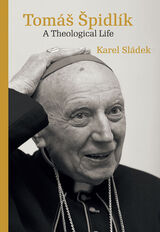 Tomáš Špidlík: A Theological Life
Karel Sládek
Karolinum Press, 2020 Tomáš Špidlík: A Theological Life offers one of the first comprehensive reflections on the life and work of the enigmatic Czech theologian. In part one, Karel Sládek explores Špidlík’s thoughts on family, the formation of Jesuit priests, the ecumenical mission of the monastery at Velehrad in Moravia (where Špidlík himself studied), and the wisdom he acquired during stays in Rome. The latter part of the book focuses on Špidlík’s spiritual theology, which was grounded in a synthesis of Eastern and Western Christianity. Here, the book explores subjects such as the Holy Spirit, the Eucharist as a source of spiritual life, and the influence of the Philokalia on Eastern spirituality.
By the conclusion, we see Špidlík’s most mature ideas and his forming of a theology of beauty; Špidlík spent his final years in Rome, living and working at the Centro Aletti’s renowned art studio, where he put his mind to observing the theology of art for an understanding of music, film, literature, and iconography.
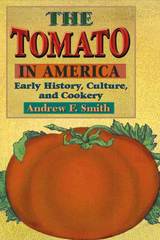 The Tomato in America: Early History, Culture, and Cookery
Andrew F. Smith
University of Illinois Press, 1994 From the Americas to Australasia, from northern Europe to southern Africa, the tomato tickles the world's taste buds. Americans along devour more than twelve million tons annually of this peculiar fruit, variously considered poisonous, curative, and aphrodisiacal.
In this first concerted study of the tomato in America, Andrew F. Smith separates myth from historical fact, beginning with the Salem, New Jersey, man who, in 1820, allegedly attracted spectators from hundreds of miles to watch him eat a tomato on the courthouse steps (the legend says they expected to see him die a painful death). Later, hucksters such as Dr. John Cook Bennett and the Amazing Archibald Miles peddled the tomato's purported medicinal benefits. The competition was so fierce that the Tomato Pill War broke out in 1838.
The Tomato in America traces the early cultivation of the tomato, its infiltration of American cooking practices, the early manufacture of preserved tomatoes and ketchup (soon hailed as "the national condiment of the United States"), and the "great tomato mania" of the 1820s and 1830s. The book also includes tomato recipes from the pre-Civil War period, covering everything from sauces, soups, and main dishes to desserts and sweets.
Now available for the first time in paperback, The Tomato in America provides a piquant and entertaining look at a versatile and storied figure in culinary history.
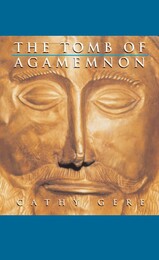 The Tomb of Agamemnon
Cathy Gere
Harvard University Press, 2006 Mycenae, the fabled city of Homer’s King Agamemnon, still stands in a remote corner of mainland Greece. Revered in antiquity as the pagan world’s most tangible connection to the heroes of the Trojan War, Mycenae leapt into the headlines in the late nineteenth century when Heinrich Schliemann announced that he had opened the Tomb of Agamemnon and found the body of the hero smothered in gold treasure. Now Mycenae is one of the most haunting and impressive archaeological sites in Europe, visited by hundreds of thousands of tourists every year.
From Homer to Himmler, from Thucydides to Freud, Mycenae has occupied a singular place in the western imagination. As the backdrop to one of the most famous military campaigns of all time, Agamemnon’s city has served for generation after generation as a symbol of the human appetite for war. As an archaeological site, it has given its name to the splendors of one of Europe’s earliest civilizations: the Mycenaean Age. In this book, historian of science Cathy Gere tells the story of these extraordinary ruins—from the Cult of the Hero that sprung up in the shadow of the great burned walls in the eighth century BC, to the time after Schliemann’s excavations when the Homeric warriors were resurrected to play their part in the political tragedies of the twentieth century.
The Tombigbee Watershed in Southeastern Prehistory
Ned J. Jenkins
University of Alabama Press, 1986 Representing the synthesis of approximately ten years of archaeological research along the central Tombigbee River, this book offers new theoretical and interpretive contributions to the study of human activity in the Tombigbee River Valley from 1000 B.C. to A.D. 1450. The authors have devised a new taxonomic approach that allows them to portray cultures as they gathered momentum and peaked in their potential as social, economic, and political structures. The data acquired for this study are from the massive cultural resource management program that accompanied the construction of the Tennessee-Tombigbee Waterway.
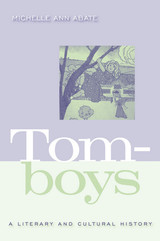 Tomboys: A Literary and Cultural History
Michelle Ann Abate
Temple University Press, 2008 Starting with the figure of the bold, boisterous girl in the mid-19th century and ending with the “girl power” movement of the 1990’s, Tomboys is the first full-length critical study of this gender-bending code of female conduct. Michelle Abate uncovers the origins, charts the trajectory, and traces the literary and cultural transformations that the concept of “tomboy” has undergone in the United States. Abate focuses on literature including Louisa May Alcott's Little Women and Carson McCullers's The Member of the Wedding and films such as Peter Bogdanovich's Paper Moon and Jon Avnet's Fried Green Tomatoes. She also draws onlesser-known texts like E.D.E.N. Southworth's once wildly popular 1859 novel The Hidden Hand, Cold War lesbian pulp fiction, and New Queer Cinema from the 1990s. Tomboys also explores the gender and sexual dynamics of tomboyism, and offers intriguing discussions of race and ethnicity's role in the construction of the enduring cultural archetype. Abate’s insightful analysis provides useful, thought-provoking connections between different literary works and eras. The result demystifies this cultural phenomenon and challenges readers to consider tomboys in a whole new light.
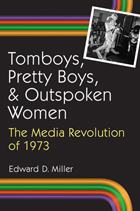 Tomboys, Pretty Boys, and Outspoken Women: The Media Revolution of 1973
Edward D. Miller
University of Michigan Press, 2011 “Edward Miller has written a sharply observant, often revelatory, and stimulating book that explores the 1970s with gusto, showing all the intimacy and pleasure and startling richness of observation with which a scholar may sometimes approach a period in which he lived.”
—Martin Harries, New York University Contemporary American media is awash with reality programs, faux documentaries, and user generated content. When did this fixation on real or feigned nonfictionality begin? Tomboys, Pretty Boys, and Outspoken Women argues that its origins can be found in the early 1970s, when American media discovered the entertainment value of documentaries, news programming, and other nonfiction forms. Edward D. Miller challenges preconceptions of the ’60s and ’70s through close readings of key events and important figures in the early 1970s: John Dean’s performance in front of the Senate during the Watergate Hearings; Billie Jean King popularizing tennis by taking on Bobby Riggs in a prime-time match; David Bowie experiencing “outer space” in his tours across America; An American Family and their gay son facing the public’s consternation; and Alison Steele, a female DJ who invited listeners to fly with her at night. Miller explores the early 1970s as a turning point in American culture, with nonfiction media of the time creating new possibilities for expressions of gender and sexuality, and argues that we are living in its aftermath. In addition to readers attracted to media studies, this book will be of great interest to those involved in LGBT studies, feminism, and queer studies as well as students of contemporary media culture. The aim of the book is to demystify current media trends by providing an analysis of the recent past. Tomboys, Pretty Boys, and Outspoken Women is written for a large audience that extends beyond academia and embraces readers who have an interest in American pop culture and, in particular, the '70s.
 Tombs for the Living: Andean Mortuary Practices
Tom D. Dillehay
Harvard University Press, 2011 In the Andes, a long history of research on burial records and burial contexts exists for the purpose of reconstructing cultural affiliation, chronology, socioeconomic status, grave content, and human body treatment. Less attention is paid to the larger question of how mortuary practices functioned in different cultures. Tombs for the Living: Andean Mortuary Practices (originally released in 1995) examines this broader issue by looking at the mortuary practices that created a connection between the living and the dead; the role of wealth and ancestors in cosmological schemes; the location, construction, and sociopolitical implications of tombs and cemeteries; and the art and iconography of death. By examining rich sets of archaeological, ethnographic, and ethnohistoric data, the thirteen essays continue to enrich our understanding of the context and meaning of the mortuary traditions in the Andes.
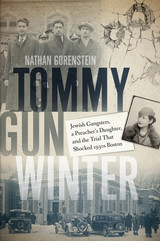 Tommy Gun Winter: Jewish Gangsters, a Preacher's Daughter, and the Trial That Shocked 1930s Boston
Nathan Gorenstein
University Press of New England, 2015 This is the true tale of two brothers, sons of a successful Jewish contractor, who along with an MIT graduate and a minister’s daughter once competed for headlines with John Dillinger, Pretty Boy Floyd and Bonnie and Clyde. The gang was led by the angry, violent, yet often charismatic Murton Millen, a small-time hoodlum and aspiring race-car driver. With his younger brother, Irv, and later joined by neighborhood buddy and MIT graduate Abe Faber, Murt launched a career of increasingly ambitious robberies. But it was only after his sudden marriage to the beautiful eighteen-year-old Norma Brighton that the gang escalated to murder. Their crime wave climaxed at a Needham, Massachusetts, bank on February 2, 1934, when Murt cut down two local police officers—Francis Haddock and Forbes McLeod—with a Thompson submachine gun stolen from state police. The killings, the dogged investigation by two clever detectives, and the record-setting trial with seventeen psychiatrists were national news. In Depression-era America this Boston saga of sex, ethnicity, and bloodshed made the trio and their “red-headed gun moll” infamous. Gorenstein’s account explores the Millen, Faber, and Brighton families and introduces us to cops, psychiatrists, newspaper men and women, and ordinary citizens caught up in the extraordinary Tommy Gun Winter of 1934.
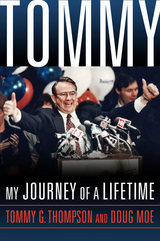 Tommy: My Journey of a Lifetime
Tommy G. Thompson and Doug Moe
University of Wisconsin Press, 2018 The many facets of Tommy G. Thompson—small-town grocer's son, brash campaigner with a common touch, shrewd political strategist, savvy policy wonk, and ebullient promoter of Wisconsin—come across vividly in these pages. Thompson, with journalist Doug Moe, traces his journey from boyhood to politics to the world stage, including his unprecedented four terms as Wisconsin governor, his service as a cabinet secretary under President George W. Bush, and his continuing work in global efforts to fight AIDS, tuberculosis, and malaria.
Personal and revealing stories punctuate the biographical details and policy discussions. Here is Tommy as a young man, just happening to be on the National Mall in 1964 when Dr. Martin Luther King told the nation "I have a dream." Here is Tommy as Wisconsin governor, struggling to start a Harley-Davidson motorcycle before leading "a pack of Hell's Republicans" on a ride through the state. Here is Tommy in Washington after the 9/11 attacks, slipping out of a secure bunker (in defiance of orders) to aid the emergency medical response.
Thompson speaks candidly of his achievements and regrets, including his involvement with welfare reform, school choice, land conservancy, prisons, the financing of Miller Park, stem cell research, and health insurance.
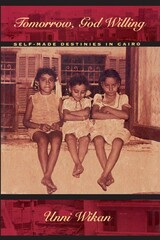 Tomorrow, God Willing: Self-made Destinies in Cairo
Unni Wikan
University of Chicago Press, 1996 "I, without earning a penny, have to be the provider!" Thus Umm Ali sums up the nearly impossible challenge of her daily existence. Living in a poor neighborhood of Cairo, she has raised eight children with almost no help from her husband or the Egyptian government and through hardships from domestic violence to constant quarrels over material possessions.
Umm Ali's story is amazing not only for what it reveals about her resourcefulness but for the light it sheds on the resilience of Cairo's poor in the face of disastrous poverty. Like countless other poor people in Cairo, she has developed a personal buoyancy to cope with relentless economic need. It stems from a belief in the ability of people to shape their own destiny and helps explain why Cairo remains virtually free of the social ills—violent street crime and homelessness—that have eroded the lives of poor people in other major cities.
Unni Wikan first met Umm Ali and her family twenty-five years ago and has returned almost every year. She draws on her firsthand experience of their lives to create an intimate portrait of Cairo's back streets and the people who live there. Wikan's innovative approach to ethnographic writing reads like a novel that presents the experiences of Umm Ali's family and neighbors in their own words.
As Umm Ali recounts triumphs and defeats—from forming a savings club with neighbors to the gradual drifting away and eventual return of her husband—she unveils a deeply reflective attitude and her unwavering belief that she can improve her situation. Showing how Egyptian culture interprets poverty and family, this book attests to the capacity of an individual's self-worth to withstand incredible adversity.
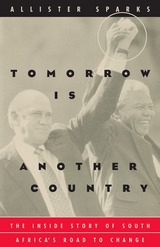 Tomorrow Is Another Country: The Inside Story of South Africa's Road to Change
Allister Sparks
University of Chicago Press, 1996 The companion to Allister Sparks's award-winning The Mind of South Africa, this book is an extraordinary account from South Africa's premier journalist of the negotiating process that led to majority rule. Tomorrow is Another Country retells the story of the behind-the-scenes collaborations that started with a meeting between Kobie Coetsee, then minister of justice, and Nelson Mandela in 1985. By 1986, negotiations involved senior government officials, intelligence agents, and the African National Congress. For the next four years, they assembled in places such as a gamepark lodge, the Palace Hotel in Lucerne, Switzerland, a fishing hideaway, and even in a hospital room. All the while, De Klerk's campaign assured white constituents nothing would change. Sparks shows how the key players, who began with little reason to trust one another, developed friendships which would later play a crucial role in South Africa's struggle to end apartheid.
"A gripping, fast-paced, authoritative account of the long and mostly secret negotiations that brought South Africa's bitter conflict to its near-miraculous end. Sparks's description of these talks sometimes brings a lump to one's throat. He shows how the participants' deep mutual suspicion was gradually replaced by excitement at the prospect of making a momentous agreement—and also by the dawning realization that the people on the other side were human beings, perhaps even decent human beings."—Adam Hochschild, New York Times Book Review
"A splendid and original history. . . . Sparks's skillful weaving of myriad strands—Mandela's secret sessions with the committee, the clandestine talks in England between the African National Congress and the government, the back-channel communications between Mandela and the A.N.C. in exile, the trepidation of Botha and the apparent transformation of his successor, De Klerk—possesses the drama and intrigue of a diplomatic whodunit."—Richard Stengel, Time
"Sparks offers many reasons for hope, but the most profound of them is the story this book tells."—Jacob Weisberg, Washington Post
"The most riveting of the many [accounts] that have been published about the end of apartheid."—The Economist
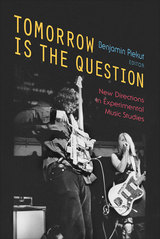 Tomorrow Is the Question: New Directions in Experimental Music Studies
Edited by Benjamin Piekut
University of Michigan Press, 2014 In recent decades, experimental music has flourished outside of European and American concert halls. The principles of indeterminacy, improvisation, nonmusical sound, and noise, pioneered in concert and on paper by the likes of Henry Cowell, John Cage, and Ornette Coleman, can now be found in all kinds of new places: activist films, rock recordings, and public radio broadcasts, not to mention in avant-garde movements around the world. The contributors to Tomorrow Is the Question explore these previously unexamined corners of experimental music history, considering topics such as Sonic Youth, Julius Eastman, the Downtown New York pop avant-garde of the 1970s, Fluxus composer Benjamin Patterson, Tokyo’s Music group (aka Group Ongaku), the Balinese avant-garde, the Leicester school of British experimentalists, Cuba’s Grupo de Experimentación Sonora del ICAIC, Pauline Oliveros’s score for the feminist documentary Maquilapolis, NPR’s 1980s RadioVisions, and the philosophy of experimental musical aesthetics. Taken together, this menagerie of people, places, and things makes up an actually existing experimentalism that is always partial, compromised, and invented in its local and particular formations—in other words, these individual cases suggest that experimentalism has been a far more variegated set of practices and discourses than previously recognized. Asking new questions leads to researching new materials, new individuals, and new contexts and, eventually, to the new critical paradigms that are necessary to interpret these materials. Gathering contributions from historical musicology, enthnomusicology, history, philosophy, and cultural studies, Tomorrow Is the Question generates future research directions in experimental music studies by way of a productive inquiry that sustains and elaborates critical conversations.
Tomorrow Never Knows: Rock and Psychedelics in the 1960s
Nick Bromell
University of Chicago Press, 2000 Tomorrow Never Knows takes us back to the primal scene of the 1960s and asks: what happened when young people got high and listened to rock as if it really mattered—as if it offered meaning and sustenance, not just escape and entertainment? What did young people hear in the music of Dylan, Hendrix, or the Beatles? Bromell's pursuit of these questions radically revises our understanding of rock, psychedelics, and their relation to the politics of the 60s, exploring the period's controversial legacy, and the reasons why being "experienced" has been an essential part of American youth culture to the present day.
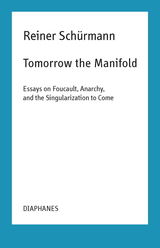 Tomorrow the Manifold: Essays on Foucault, Anarchy, and the Singularization to Come
Reiner Schürmann
Diaphanes, 2018 This volume tracks the crucial role of Reiner Schürmann’s engagement with the work of Michel Foucault between 1983 and 1991. Drawing on Foucault’s highly original reading of the philosophical tradition, Schürmann traces the status of identity and difference in Foucault’s conception of history to develop a radical phenomenological understanding of anarchy. He examines the fate of philosophy after the critique of the subject and the collapse of the divide between theory and praxis, philosophy and politics.
Taken together, these pivotal essays introduce the reader to Schürmann’s most urgent concerns and assemble the conceptual tools that go on to lay the groundwork for his final work, Broken Hegemonies, which offers a subversive re-reading of the history of Western metaphysics outside of Foucault’s genealogical approach. To the reader unfamiliar with Schürmann’s work, these texts establish him as one of the most radical thinkers of the late 20th century, whose work might eventually become legible in our present.
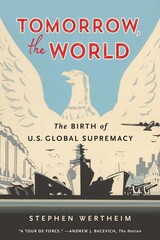 Tomorrow, the World: The Birth of U.S. Global Supremacy
Stephen Wertheim
Harvard University Press, 2020 A Foreign Affairs Best Book of the Year
“Even in these dismal times genuinely important books do occasionally make their appearance…You really ought to read it…A tour de force…While Wertheim is not the first to expose isolationism as a carefully constructed myth, he does so with devastating effect.” —Andrew J. Bacevich, The Nation
For most of its history, the United States avoided making political and military commitments that would entangle it in power politics. Then, suddenly, it conceived a new role for itself as an armed superpower—and never looked back. In Tomorrow, the World, Stephen Wertheim traces America’s transformation to World War II, right before the attack on Pearl Harbor.
As late as 1940, the small coterie formulating U.S. foreign policy wanted British preeminence to continue. Axis conquests swept away their assumptions, leading them to conclude that America should extend its form of law and order across the globe, and back it at gunpoint. No one really favored “isolationism”—a term introduced by advocates of armed supremacy to burnish their cause. We live, Wertheim warns, in the world these men created. A sophisticated and impassioned account that questions the wisdom of U.S. supremacy, Tomorrow, the World reveals the intellectual path that brought us to today’s endless wars.
“Its implications are invigorating…Wertheim opens space for Americans to reexamine their own history and ask themselves whether primacy has ever really met their interests.”
—New Republic
“For almost 80 years now, historians and diplomats have sought not only to describe America’s swift advance to global primacy but also to explain it…Any writer wanting to make a novel contribution either has to have evidence for a new interpretation, or at least be making an older argument in some improved and eye-catching way. Tomorrow, the World does both.”
—Paul Kennedy, Wall Street Journal
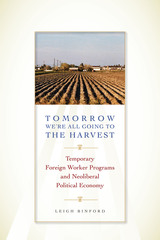 Tomorrow We're All Going to the Harvest: Temporary Foreign Worker Programs and Neoliberal Political Economy
By Leigh Binford
University of Texas Press, 2013 From its inception in 1966, the Canadian Seasonal Agricultural Worker Program (SAWP) has grown to employ approximately 20,000 workers annually, the majority from Mexico. The program has been hailed as a model that alleviates human rights concerns because, under contract, SAWP workers travel legally, receive health benefits, contribute to pensions, are represented by Canadian consular officials, and rate the program favorably. Tomorrow We’re All Going to the Harvest takes us behind the ideology and examines the daily lives of SAWP workers from Tlaxcala, Mexico (one of the leading sending states), observing the great personal and family price paid in order to experience a temporary rise in a standard of living. The book also observes the disparities of a gutted Mexican countryside versus the flourishing agriculture in Canada, where farm labor demand remains high. Drawn from extensive surveys and nearly two hundred interviews, ethnographic work in Ontario (destination of over 77 percent of migrants in the author’s sample), and quantitative data, this is much more than a case study; it situates the Tlaxcala-Canada exchange within the broader issues of migration, economics, and cultural currents. Bringing to light the historical genesis of “complementary” labor markets and the contradictory positioning of Mexican government representatives, Leigh Binford also explores the language barriers and nonexistent worker networks in Canada, as well as the physical realities of the work itself, making this book a complete portrait of a provocative segment of migrant labor.
 Tomorrow Will Be Better: Surviving Nazi Germany
Walter Meyer with the assistance of Matt Valentine
University of Missouri Press, 1999
How does a young German who has been a member of the Hitler Youth and has competed in Nazi-organized athletic competitions become, over the span of two years, an eighty-pound, tuberculosis-stricken concentration camp escapee?
In this larger-than-life memoir, Walter Meyer leads readers from one harrowing moment to the next as he recounts his experiences during and after Hitler's reign. As a teenager, Meyer refused to conform to institutional rules. While serving in the Hitler Youth, he rebelled by joining a subversive group that focused its efforts on pranks against the youth organization. During World War II, Meyer was arrested, interrogated, and beaten for stealing shoes, but he received a sentence of one to four years, as opposed to the standard penalty for looting—death.
The sixteen-year-old Meyer's refusal to conform to prison regulations and his foiled escape attempts resulted in solitary confinement on several occasions. His fiery spirit eventually landed him in a Nazi work camp. Unbeknownst to his family, Meyer became a concentration camp prisoner. Transported to Ravensbrueck, he was forced to work under grueling conditions in a quarry. He struggled to reach his daily work quota so he could dine on watery broth and bits of bread. In these subhuman conditions, Meyer developed tuberculosis. Knowing he would soon die in the camp, he again plotted his escape. This time he succeeded.
Upon returning home to Duesseldorf, Meyer despaired at the destruction of his hometown. He lamented the pallor that had spread throughout the town and the country itself. After recovering his health, he regained his youthful lust for adventure. His postwar travels began with his infiltration of the Russian-occupied zone of Germany to retrieve his family's possessions. Meyer then began a whirlwind odyssey, ducking into train cars and stowing away on ships, occasionally landing in jail for traveling without a passport—from France to Spain, Belgium to Holland, and finally to South America--in pursuit of something other than the aftermath of war.
Meyer's memoir gives insight into the climate in Germany during World War II and in the defeated nation after the war. His experience as a non-Jewish survivor of the Nazi concentration camps provides an enlightening and varied perspective to the Holocaust dialogue.
Tomorrowing
Terry Bisson
Duke University Press, 2024 For twenty years, Terry Bisson published a regular “This Month in History” column in the science fiction magazine Locus. Tomorrowing collects these two decades of memorable events---four per month---each set in a totally different imaginary yet possible, inevitable yet avoidable future. From the first AI president to the first dog on Mars to the funeral of Earth’s last glacier, these stories are speculative SF at its most (and least) serious. Collected as a series for the first time, Tomorrowing will amuse, alarm, intrigue, entertain, and like all good science fiction, make readers think. Bisson’s short stories have won every major award in science fiction, including the Hugo and the Nebula, but never, ever anything for this series.
Tomorrow's Living Room
Jason Whitmarsh
Utah State University Press, 2009 Volume 13 in the Swenson Award Series, Tomorrow's Living Room offers a pleasantly disorienting verbal territory. The collection is alternately wry and dark, hopeful and bleak, full of unexpected light and laugh-out-loud incongruities. We begin to see that the shape and the furniture of Jason Whitmarsh's world reflect our own (they may in fact be universal), but we're considering them through completely new terms of engagement. Selected by, and with a foreword by, Billy Collins. The annual Swenson competition, named for May Swenson, honors her as one of America’s most provocative and vital writers. In John Hollander’s words, she was "one of our few unquestionably major poets."
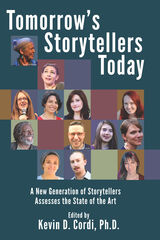 Tomorrow's Storytellers Today: A New Generation of Storytellers Assesses the State of the Art
Edited by Kevin D. Cordi, Ph.D.
Parkhurst Brothers, Inc., 2021 Kevin Cordi, educator and champion of a new generation of storytellers, elicits insights on the challenges young talents face as they practice an ancient art form in today’s culture:
• Charles Parrott on truth claims in storytelling today
• Danielle Bellone on the blending of old forms and new audience concerns
• Alison Bergblom Johnson on the storyteller’s relationship to the story
• Cooper Braun on what works and what doesn’t when telling hard or “dark” stories
• Marie Lupine-Durocher and Petronella van Dijk on what wonder tales teach the next generation of storytellers
• Carolina Quiroga-Stultz on storytelling that starts conversations about frontiers and borders
• And eleven more chapters of stories and examination of the art of storytelling in the current era.
The contributors come from many different storytelling traditions as well as many modern subcultures. Their concerns will be of interest to educators, storytellers, art watchers, and cultural thinkers. There is no other book like Tomorrow’s Storytellers Today.
 Tomorrow's Troubles: Risk, Anxiety, and Prudence in an Age of Algorithmic Governance
Paul Scherz
Georgetown University Press, 2022 The first examination of predictive technology from the perspective of Catholic theology Probabilistic predictions of future risk govern much of society. In business and politics alike, institutional structures manage risk by controlling the behavior of consumers and citizens. New technologies comb through past data to predict and shape future action. Choosing between possible future paths can cause anxiety as every decision becomes a calculation to achieve the most optimal outcome. Tomorrow’s Troubles is the first book to use virtue ethics to analyze these pressing issues. Paul Scherz uses a theological analysis of risk and practical reason to show how risk-based decision theory reorients our relationships to the future through knowledge of possible dangers and foregone opportunities—and fosters a deceptive hope for total security. Scherz presents this view of temporality as problematic because it encourages a desire for stability through one’s own efforts instead of reliance on God. He also argues that the largest problem with predictive models is that they do not address individual reason and free will. Instead of dwelling on a future, we cannot control, we can use our past experiences and the Christian tradition to focus on discerning God’s will in the present. Tomorrow’s Troubles offers a thoughtful new framework that will help Christians benefit from the positive aspects of predictive technologies while recognizing God’s role in our lives and our futures.
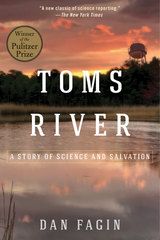 Toms River: A Story of Science and Salvation
Dan Fagin
Island Press, 2015 WINNER OF THE PULITZER PRIZE • Winner of The New York Public Library’s Helen Bernstein Book Award
A new classic of science reporting.”—The New York Times
The true story of a small town ravaged by industrial pollution, Toms River won the 2014 Pulitzer Prize and has been hailed by The New York Times as "a new classic of science reporting." Now available in paperback with a new afterword by acclaimed author Dan Fagin, the book masterfully blends hard-hitting investigative journalism, scientific discovery, and unforgettable characters.
One of New Jersey’s seemingly innumerable quiet seaside towns, Toms River became the unlikely setting for a decades-long drama that culminated in 2001 with one of the largest environmental legal settlements in history. For years, large chemical companies had been using Toms River as their private dumping ground, burying tens of thousands of leaky drums in open pits and discharging billions of gallons of acid-laced wastewater into the town’s namesake river. The result was a notorious cluster of childhood cancers scientifically linked to local air and water pollution.
Fagin recounts the sixty-year saga of rampant pollution and inadequate oversight that made Toms River a cautionary tale. He brings to life the pioneering scientists and physicians who first identified pollutants as a cause of cancer and the everyday people in Toms River who struggled for justice: a young boy whose cherubic smile belied the fast-growing tumors that had decimated his body from birth; a nurse who fought to bring the alarming incidence of childhood cancers to the attention of authorities who didn’t want to listen; and a mother whose love for her stricken child transformed her into a tenacious advocate for change.
Rooted in a centuries-old scientific quest, Toms River is an epic of dumpers at midnight and deceptions in broad daylight, of corporate avarice and government neglect, and of a few brave individuals who refused to keep silent until the truth was exposed.
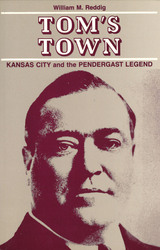 Tom's Town: Kansas City and the Pendergast Legend
William M. Reddig
University of Missouri Press, 1986 The Pendergast machine rose to power riding the industrial and business boom of the 1920s, strengthened its grip during the chaos of the depression years, and grew fat and arrogant during the spending spree that followed. It fell apart in a fantastic series of crimes, including voting fraud and tax evasion, that shocked the nation and resulted in the incarceration of Tom Pendergast in a federal prison in 1939. Now available in paperback with a foreword by Charles Glaab, William M. Reddig's political and social history of Kansas City from the mid-1800s to 1945, focusing on the lives of Alderman Jim Pendergast and especially his younger sibling, Big Tom Pendergast, chronicles both the influence of the brothers on the growing metropolitan area and the national phenomenon of bossism. "The story of the Pendergasts has been told ... in many places and in many ways. It has hardly been told anywhere, however, with more fascinating detail and healthy irony than in this volume of William M. Reddig." --New York Times "Reddig has written his history of the Pendergast machine in a reportorial style which manages to combine plain city desk prose with a great deal of humor, irony, and insight. He has dwelt with obvious delight on the local characters, the factions, and feuds, and has given several brilliant personality sketches." --Saturday Review of Literature
Tondi Songway Kiini: Reference Grammar and TSK-English-French Dictionary
Jeffrey Heath
CSLI, 2005 Only recently discovered by linguistic scholars, Tondi Songway Kiini (TSK) is a tonal language spoken in the small country of Mali in western Africa. Unlike other Songhay languages, TSK preserves the lexical and grammatical tones of its proto-language and also exhibits unique systems for the expression of focalization and relativization. Tondi Songway Kiini is a valuable overview of the grammar of an African language with a tone system quite different from that of the more familiar Bantu system. It is also an irreplaceable guide to the grammar and meanings of this unusual African language.
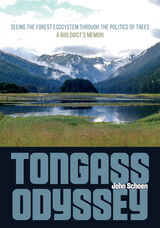 Tongass Odyssey: Seeing the Forest Ecosystem through the Politics of Trees
John Schoen
University of Alaska Press, 2020 Tongass Odyssey is a biologist’s memoir of personal experiences over the past four decades studying brown bears, deer, and mountain goats and advocating for conservation of Alaska’s Tongass National Forest. The largest national forest in the nation, the Tongass encompasses the most significant expanse of intact old-growth temperate rainforest remaining on Earth. Tongass Odyssey is a cautionary tale of the harm that can result when science is eclipsed by politics that are focused on short-term economic gain. Yet even as those problems put the Tongass at risk, the forest also represents a unique opportunity for conserving large, intact landscapes with all their ecological parts, including wild salmon, bears, wolves, eagles, and other wildlife. Combining elements of personal memoir, field journal, natural history, conservation essay, and philosophical reflection, Tongass Odyssey tells an engaging story about an enchanting place.
Tongue & Groove
Stephen Cramer
University of Illinois Press, 2007 Inspired and informed by the music and urban landscape of New York City, Tongue & Groove employs jazzy and descriptive language in a sweep of city-life experiences and memories. A passionate rendering of incidents in spaces that include the subway, a school for the handicapped, and the Museum of Modern Art, Stephen Cramer employs richly sensual language and a wide range of imagery. Alluring portrayals of butterfly migrations, graffiti, and city buses complement this collection's connection to the everyday hoots, shouts, and yammer of the streets.
 A Tongue in the Mouth of the Dying
Laurie Ann Guerrero
University of Notre Dame Press, 2013
Filled with the nuanced beauty and complexity of the everyday—a pot of beans, a goat carcass, embroidered linens, a grandfather’s cancer—A Tongue in the Mouth of the Dying journeys through the inherited fear of creation and destruction. The histories of South Texas and its people unfold in Laurie Ann Guerrero’s stirring language, including the dehumanization of men and its consequences on women and children. Guerrero’s tongue becomes a palpable border, occupying those liminal spaces that both unite and divide, inviting readers to consider that which is known and unknown: the body. Guerrero explores not just the right, but the ability to speak and fight for oneself, one's children, one's community—in poems that testify how, too often, we fail to see the power reflected in the mirror.
From the 2012 Award Citation for the Andrés Montoya Poetry Prize:
“This is the poetry of both saints and sinners (and even murderers). The poet conjures up Pablo Neruda, Gloria Anzaldúa, Sylvia Plath, and is rooted in the best Latin American, Chicano/a, and contemporary American poetics, able to render an effective poetic version of Nepantla, the land where different traditions meet, according to Anzaldúa. These poems make the reader laugh, cry, cringe, lose one’s breath, and almost one’s mind, at times.” —Francisco X. Alarcón, judge
"Guerrero has always written pointedly with a sharp pen and a sharp knife always at the ready. In her first full-length collection, these dazzling, edgy, irascible poems lean into their sweet natural bristling air, stitching and stretching image to image. This is the singing blue glory of language at its best." —Nikky Finney, author of Head Off & Split, winner of The National Book Award
"Guerrero writes in a language of the body, visceral, almost unbearably vivid, the language of a poet who knows how to work with her hands. In an age when so many poems say nothing, these poems miss nothing . . . attention must be paid to such a poet now and for years to come." —Martín Espada, author of The Trouble Ball
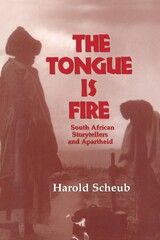 The Tongue Is Fire: South African Storytellers and Apartheid
Harold E. Scheub
University of Wisconsin Press, 1996 In the years between the Sharpeville Massacre of 1960 and the Soweto Uprising of 1976—a period that was both the height of the apartheid system in South Africa and, in retrospect, the beginning of its end—Harold Scheub went to Africa to collect stories.
With tape-recorder and camera in hand, Scheub registered the testaments of Swati, Xhosa, Ndebele, and Zulu storytellers, farming people who lived in the remote reaches of rural South Africa. While young people fought in the streets of Soweto and South African writers made the world aware of apartheid’s evils, the rural storytellers resisted apartheid in their own way, using myth and metaphor to preserve their traditions and confront their oppressors. For more than 20 years, Scheub kept the promise he made to the storytellers to publish his translations of their stories only when freedom came to South Africa. The Tongue Is Fire presents these voices of South African oral tradition—the historians, the poets, the epic-performers, the myth-makers—documenting their enduring faith in the power of the word to sustain tradition in the face of determined efforts to distort or eliminate it. These texts are a tribute to the storytellers who have always, in periods of crisis, exercised their art to inspire their own people.
Tongue Lyre
Tyler Mills
Southern Illinois University Press, 2013 In Tongue Lyre, Tyler Mills weaves together fragments of myth and memory, summoning the works of Ovid, Homer, and James Joyce to spin a story of violence and the female body. Introducing the recurring lyre figure in the collection—a voice to counter the violence—is Ovid’s Philomena, who, while cruelly rendered speechless, nonetheless sets the reader on an eloquent voyage to discover the body through music, art, and language. Other legendary figures making appearances within—Telemachos, Nestor, Cyclops, Circe, and others—are held up as mirrors to reflect the human form as home. In this dynamic collection, the female body and its relationship to the psyche traverse mythic yet hauntingly familiar contemporary settings as each presents not a single narrative but a progressive exploration of our universal emotional experience.
Tongue of a Crow
Peter Coyote
Four Way Books, 2021 Peter Coyote’s first collection of poetry takes us on a whirlwind tour of an eclectic and exciting life as an actor and Zen Buddhist priest, meandering from love affairs to marriage to divorce to the Sixties to psychedelic spirituality and beyond. Written over several decades, these poems read as a collage, each piece distinct and contributing to a cohesive lyric narrative.
Tongue of a Crow
Peter Coyote
Four Way Books, 2021 Peter Coyote’s first collection of poetry takes us on a whirlwind tour of an eclectic and exciting life as an actor and Zen Buddhist priest, meandering from love affairs to marriage to divorce to the Sixties to psychedelic spirituality and beyond. Written over several decades, these poems read as a collage, each piece distinct and contributing to a cohesive lyric narrative.
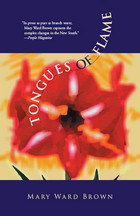 Tongues of Flame
Mary Ward Brown
University of Alabama Press, 1993 Winner of the PEN/Hemingway Foundation Award These beautifully crafted stories depict the changing relationships between black and white southerners, the impact of the civil rights movement, and the emergence of the New South. Mary Ward Brown is a storyteller in the tradition of such powerful 20th-century writers as William Faulkner, Harper Lee, Flannery O'Connor, and Eudora Welty-writers who have explored and dramatized the tension between the inherited social structure of the South and its contemporary dissolution. With Tongues of Flame, her first collection of short stories, Brown bares the awkward, sometimes hopeful, and often tragic suffering of people caught in changing times within a timeless setting. Here we meet such memorable characters as a dying black woman who seeks the advice of a now-alcoholic white doctor whom she knew in better years; a young woman, jilted at the altar, driven crazy by an illuminated cross erected by the church opposite her house; and a 95-year-old woman buying a tombstone for her long-deceased husband only to discover that he had been adulterous throughout their marriage. Brown constructs her characters in a disarmingly plain style while breathing life into them with compassion and honesty as they confront the large moments of their lives. First published by E. P. Dutton in 1986 to immediate critical acclaim, Tongues of Flame won the 1987 PEN/Ernest Hemingway Foundation Award. The judges commended Brown for "seeing life whole, without prejudice, without sentimentality, without histrionics. Her voice may be quiet-sometimes she speaks in a whisper-but her words are, nevertheless, always forceful, clear, and ultimately lasting." With this new publication of Tongues of Flame and its inclusion in the University of Alabama Press's Deep South Books series, a whole new generation of readers may once more discover Mary Ward Brown's profound stories of pain, loss, and hope.
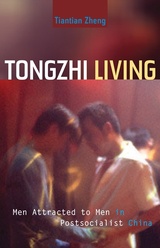 Tongzhi Living: Men Attracted to Men in Postsocialist China
Tiantian Zheng
University of Minnesota Press, 2015 Tongzhi, which translates into English as “same purpose” or “same will,” was once widely used to mean “comrade.” Since the 1990s, the word has been appropriated by the LGBT community in China and now refers to a broad range of people who do not espouse heteronormativity. Tongzhi Living, the first study of its kind, offers insights into the community of same-sex-attracted men in the metropolitan city of Dalian in northeast China. Based on ethnographic fieldwork by Tiantian Zheng, the book reveals an array of coping mechanisms developed by tongzhi men in response to rapid social, cultural, and political transformations in postsocialist China. According to Zheng, unlike gay men in the West over the past three decades, tongzhi men in China have adopted the prevailing moral ideal of heterosexuality and pursued membership in the dominant culture at the same time they have endeavored to establish a tongzhi culture. They are, therefore, caught in a constant tension of embracing and contesting normality as they try to create a new and legitimate space for themselves. Tongzhi men’s attempts to practice both conformity and rebellion paradoxically undercut the goals they aspire to reach, Zheng shows, perpetuating social prejudice against them and thwarting the activism they believe they are advocating.
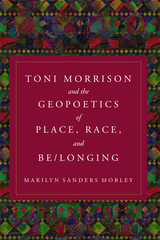 Toni Morrison and the Geopoetics of Place, Race, and Be/longing
Marilyn Sanders Mobley
Temple University Press, 2024 Toni Morrison’s readers and critics typically focus more on the “what” than the “how” of her writing. In Toni Morrison and the Geopoetics of Place, Race, and Be/longing, Marilyn Sanders Mobley analyzes Morrison’s expressed narrative intention of providing “spaces for the reader” to help us understand the narrative strategies in her work.
Mobley’s approach is as interdisciplinary, intersectional, nuanced, and complex as Morrison’s. She combines textual analysis with a study of Morrison’s cultural politics and narrative poetics and describes how Morrison engages with both history and the present political moment.
Informed by research in geocriticism, spatial literary studies, African American literary studies, and Black feminist studies at the intersection of poetics and cultural politics, Mobley identifies four narrative strategies that illuminate how Morrison creates such spaces in her fiction; what these spaces say about her understanding of place, race, and belonging; and how they constitute a way to read and re-read her work.
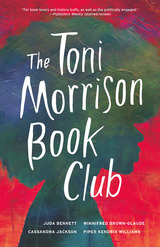 The Toni Morrison Book Club
Juda Bennett
University of Wisconsin Press, 2020 In this startling group memoir, four friends—black and white, gay and straight, immigrant and American-born—use Toni Morrison’s novels as a springboard for intimate and revealing conversations about the problems of everyday racism and living whole in times of uncertainty. Tackling everything from first love and Soul Train to police brutality and the Black Lives Matter movement, the authors take up what it means to read challenging literature collaboratively and to learn in public as an act of individual reckoning and social resistance.
Framing their book club around collective secrets, the group bears witness to how Morrison’s works and words can propel us forward while we sit with uncomfortable questions about race, gender, and identity. How do we make space for black vulnerability in the face of white supremacy and internalized self-loathing? How do historical novels speak to us now about the delicate seams that hold black minds and bodies together?
This slim and brilliant confessional offers a radical vision for book clubs as sites of self-discovery and communal healing. The Toni Morrison Book Club insists that we find ourselves in fiction and think of Morrison as a spiritual guide to our most difficult thoughts and ideas about American literature and life.
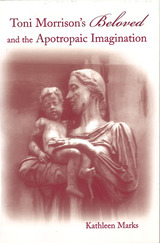 Toni Morrison's Beloved and the Apotropaic Imagination
Kathleen Marks
University of Missouri Press, 2002
Toni Morrison’s Beloved and the Apotropaic Imagination investigates Toni Morrison’s Beloved in light of ancient Greek influences, arguing that the African American experience depicted in the novel can be set in a broader context than is usually allowed. Kathleen Marks gives a history of the apotropaic from ancient to modern times, and shows the ways that Beloved’sprotagonist, Sethe, and her community engage the apotropaic as a mode of dealing with their communal suffering.
Apotropaic, from the Greek, meaning “to turn away from,” refers to rituals that were performed in ancient times to ward off evil deities. Modern scholars use the term to denote an action that, in attempting to prevent an evil, causes that very evil. Freud employed the apotropaic to explain his thought concerning Medusa and the castration complex, and Derrida found the apotropaic’s logic of self-sabotage consonant with his own thought.
Marks draws on this critical history and argues that Morrison’s heroine’s effort to keep the past at bay is apotropaic: a series of gestures aimed at resisting a danger, a threat, an imperative. These gestures anticipate, mirror, and put into effect that which they seek to avoid—one does what one finds horrible so as to mitigate its horror. In Beloved, Sethe’s killing of her baby reveals this dynamic: she kills the baby in order to save it. As do all great heroes, Sethe transgresses boundaries, and such transgressions bring with them terrific dangers: for example, the figure Beloved. Yet Sethe’s action has ritualistic undertones that link it to the type of primal crimes that can bring relief to a petrified community. It is through these apotropaic gestures that the heroine and the community resist what Morrison calls “cultural amnesia” and engage in a shared past, finally inaugurating a new order of love.
Toni Morrison’s Beloved and the Apotropaic Imagination is eclectic in its approach—calling upon Greek religion, Greek mythology and underworld images, and psychology. Marks looks at the losses and benefits of the kind of self-damage/self-agency the apotropaic affords. Such an approach helps to frame the questions of the role of suffering in human life, the relation between humans and the underworld, and the uses of memory and history.
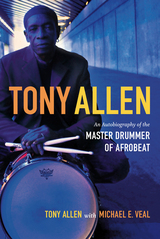 Tony Allen: An Autobiography of the Master Drummer of Afrobeat
Tony Allen, with Michael E. Veal
Duke University Press, 2013 Tony Allen is the autobiography of legendary Nigerian drummer Tony Allen, the rhythmic engine of Fela Kuti's Afrobeat. Conversational, inviting, and packed with telling anecdotes, Allen's memoir is based on hundreds of hours of interviews with the musician and scholar Michael E. Veal. It spans Allen's early years and career playing highlife music in Lagos; his fifteen years with Fela, from 1964 until 1979; his struggles to form his own bands in Nigeria; and his emigration to France. Allen embraced the drum set, rather than African handheld drums, early in his career, when drum kits were relatively rare in Africa. His story conveys a love of his craft along with the specifics of his practice. It also provides invaluable firsthand accounts of the explosive creativity in postcolonial African music, and the personal and artistic dynamics in Fela's Koola Lobitos and Africa 70, two of the greatest bands to ever play African music.
Tony Hillerman's Navajoland: Hideouts, Haunts, and Havens in the Joe Leaphorn and Jim Chee Mysteries
Laurance D. Linford
University of Utah Press, 2011 Tony Hillerman is beloved for his novels of intrigue in the American Southwest. In Tony Hillerman’s Navajoland, Laurance Linford takes readers on a journey through the Four Corners region to the haunts of Hillerman’s characters. Offered in encyclopedic form, each entry gives the common name of a particular location, the Navajo name and history, and a description of the location’s significance in various Hillerman novels. An understanding of the Navajo names and their relations to the landscape will lend a new dimension to the characters and events Tony Hillerman created. This expanded third edition is updated to include all 72 sites from Hillerman’s final and location-rich novel, The Shape Shifter.
 Tony Oliva: The Life and Times of a Minnesota Twins Legend
Thom Henninger
University of Minnesota Press, 2019 If not for the botched Bay of Pigs invasion, Minnesota might never have known one of its most popular baseball players, Twins three-time batting champion and eight-time All-Star Tony Oliva. In April 1961, the twenty-two-year-old Cuban prospect failed to impress the Twins in a tryout, but the sudden rupture in U.S.–Cuba relations made a return visa all but impossible. The story of how Oliva’s unexpected stay led to a second chance and success with the Twins—as well as decades of personal and cultural isolation—is told for the first time in this full-scale biography of the man the fans affectionately call “Tony O.” With unprecedented access to the very private Oliva, baseball writer Thom Henninger captures what life was like for the Cuban newcomer as he adjusted to major league play and American culture—and at the same time managed to earn Rookie of the Year honors and win the American League batting title in his first two seasons, all while playing with a knuckle injury. Packed with never-before-published photographs, the book follows Oliva through the 1965 season, all the way to the World Series, and then, with repaired knuckle and knee, into one of the most dramatic pennant races in baseball history in 1967. Through the voices of Oliva, his family, and his teammates—including the Cuban players who shared his cultural challenges and the future Hall of Famers he mentored, Rod Carew and Kirby Puckett—the personal and professional highs and lows of the years come alive: the Gold Glove Award in 1966, a third batting title in 1971, the devastating injury that curtailed his career, and, through it all, the struggle to build a family and recover the large and close-knit one he had left behind in Cuba. Nearly forty years after Oliva’s retirement, the debate continues over whether his injury-shortened career was Hall of Fame caliber—a question that gets a measured and resounding answer here.
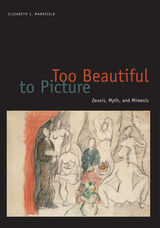 Too Beautiful to Picture: Zeuxis, Myth, and Mimesis
Elizabeth C. Mansfield
University of Minnesota Press, 2007 Few tales of artistic triumph can rival the story of Zeuxis. As first reported by Cicero and Pliny, the painter Zeuxis set out to portray Helen of Troy, but when he realized that a single model could not match Helen’s beauty, he combined the best features of five different models. A primer on mimesis in art making, the Zeuxis myth also illustrates ambivalence about the ability to rely on nature as a model for ideal form.In Too Beautiful to Picture, Elizabeth C. Mansfield engages the visual arts, literature, and performance to examine the desire to make the ideal visible. She finds in the Zeuxis myth evidence of a cultural primal scene that manifests itself in gendered terms. Mansfield considers the many depictions of the legend during the Renaissance and questions its absence during the eighteenth century. Offering interpretations of Angelica Kauffman’s paintings, Mary Shelley’s Frankenstein, and Picasso’s Les Demoiselles d’Avignon, Mansfield also considers Orlan’s carnal art as a profound retelling of the myth. Throughout, Mansfield asserts that the Zeuxis legend encodes an unconscious record of the West’s reliance on mimetic representation as a vehicle for metaphysical solace.Elizabeth C. Mansfield is associate professor of art history at the University of the South.
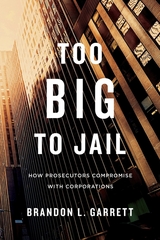 Too Big to Jail: How Prosecutors Compromise with Corporations
Brandon L. Garrett
Harvard University Press, 2014 American courts routinely hand down harsh sentences to individual convicts, but a very different standard of justice applies to corporations. Too Big to Jail takes readers into a complex, compromised world of backroom deals, for an unprecedented look at what happens when criminal charges are brought against a major company in the United States.
Federal prosecutors benefit from expansive statutes that allow an entire firm to be held liable for a crime by a single employee. But when prosecutors target the Goliaths of the corporate world, they find themselves at a huge disadvantage. The government that bailed out corporations considered too economically important to fail also negotiates settlements permitting giant firms to avoid the consequences of criminal convictions. Presenting detailed data from more than a decade of federal cases, Brandon Garrett reveals a pattern of negotiation and settlement in which prosecutors demand admissions of wrongdoing, impose penalties, and require structural reforms. However, those reforms are usually vaguely defined. Many companies pay no criminal fine, and even the biggest blockbuster payments are often greatly reduced. While companies must cooperate in the investigations, high-level employees tend to get off scot-free.
The practical reality is that when prosecutors face Hydra-headed corporate defendants prepared to spend hundreds of millions on lawyers, such agreements may be the only way to get any result at all. Too Big to Jail describes concrete ways to improve corporate law enforcement by insisting on more stringent prosecution agreements, ongoing judicial review, and greater transparency.
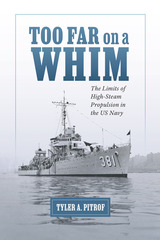 Too Far on a Whim: The Limits of High-Steam Propulsion in the US Navy
Tyler A. Pitrof
University of Alabama Press, 2024 Winner of the 2024 Lyman Book Award for Maritime and Naval Science, Technology, and Environment.
In Too Far on a Whim, Tyler A. Pitrof presents a high-spirited revision of the US Navy’s commitment to high-steam propulsion systems, the mainstay of its World War II fleets. Pitrof’s research persuasively demonstrates that in its war against the Imperial Japanese Navy, the US Navy succeeded despite its high-steam propulsion systems rather than because of them.
War with an aggressive Japan and a resurgent Germany loomed in the dark days of the late 1930s. Rear Admiral Harold G. Bowen Sr., head of the US Navy’s Bureau of Engineering, advanced a radical vision: a new fleet based on high-steam propulsion, a novel technology that promised high speeds with smaller engines and better fuel efficiency. High-steam engines had drawbacks—smaller operational ranges and maintenance issues. Nevertheless, trusting its engineers to resolve these issues, the US Navy put high-steam propulsion at the heart of its warship design from 1938 to 1945.
The official record of high-steam technology’s subsequent performance has relied heavily on Bowen’s own memoir, in which he painted high-steam innovation in heroic colors. Pitrof’s empirical review of primary sources such as ship’s maintenance records, however, illuminates the opposite—that the heroism lay in the ability of American seamen to improvise solutions to keep these difficult engines running.
Pitrof artfully explains engineering concepts in layman’s terms and provides an account that extends far beyond technology and into matters of naval hierarchies and bureaucracy, strategic theory, and ego. He offers a cautionary tale—as relevant to any endeavor as it is to military undertakings—about how failures arise when technical experts lack managers who understand their work. Admiral Bowen wielded excessive power because no one else in the US Navy knew enough to countermand him.
Compulsively readable, Too Far on a Whim is a landmark for those interested in naval history and technology but also for readers interested in the interplay between innovation, decision-making, and engineering.
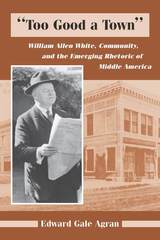 "Too Good a Town": William Allen White, Community, and the Emerging Rhetoric of Middle America
Edward G. Agran
University of Arkansas Press, 1999 For fifty years, William Allen White, first as a reporter and later as the long-time editor of the Emporia Gazette, wrote of his small town and its Mid-American values. By tailoring his writing to the emerging urban middle class of the early twentieth century, he won his “gospel of Emporia” a nationwide audience and left a lasting impact on he way America defines itself. Investigating White’s life and his extensive writings, Edward Gale Agran explores the dynamic thought of one of America’s best-read and most-respected social commentators. Agran shows clearly how White honed his style and transformed the myth of conquering the western frontier into what became the twentieth-century ideal of community building. Once a confidante of and advisor to Theodore Roosevelt, White addressed, and reflected in his work, all the great social and political oscillations of his time—urbanization and industrialism, populism, and progressivism, isolationism internationalism, Prohibition, and New Deal reform. Again and again, he asked the question “What’s the matter?” about his times and townspeople, then found the middle ground. With great care and discernment, Agran gathers the man strains of White’s messages, demonstrating one writer’s pivotal contribution to our idea of what it means to be an American.
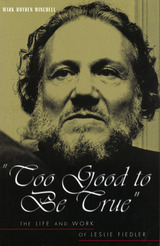 Too Good to Be True: The Life and Work of Leslie Fiedler
Mark Royden Winchell
University of Missouri Press, 2002
“Too Good to Be True” is a comprehensive account of Leslie Fiedler’s life and work. Born in 1917, Fiedler has, in a sense, had four overlapping careers. He first came to prominence as one of the premier Jewish intellectuals of the postwar era—writing on literature, culture, and politics in such magazines as Partisan Review and Commentary. Shortly thereafter, he helped lead the attack that myth criticism was mounting on the hegemony of the New Criticism. If he had stopped writing entirely at that point, Fiedler would still be remembered as an important cultural critic of the fifties.
With his brash, groundbreaking magnum opus, Love and Death in the American Novel, Fiedler next established himself as a revolutionary interpreter of our native literary tradition. Subsequent critics of American literature have been compelled to adopt or attack his positions because to ignore them has been impossible.
Finally, Fiedler was one of the first critics to proclaim the death of modernism and to suggest some of the directions that literature might take in its aftermath. The Oxford English Dictionary credits him with being the first individual to apply the term postmodernism to literature. This alone caused much enmity among those who had built their careers on the assumption that modernism would last forever.
To many academics, Fiedler’s lack of solemnity and his wild flights of imagination have made him appear amateurish. How could anyone who enjoys himself that much possibly be taken seriously? One of the favorite critics of young people and non-English majors, Fiedler has seemed to enjoy remaining disreputable—even as some of his once-controversial views have been made a part of standard or traditional scholarship. Like Huck Finn, returned to the raft from the fog, he often seems “too good to be true.”
Mark Royden Winchell has made his subject come alive in a highly intelligent and critical way. A combination of biography, critical analysis, and cultural history, “Too Good to Be True” will be of great interest to scholars and students of American literature, twentieth-century literary criticism, and popular culture.
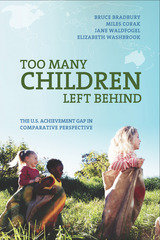 Too Many Children Left Behind: The U.S. Achievement Gap in Comparative Perspective
BRUCE BRADBURY is associate professor at the Social Policy Research Centre at the University of New South Wales, Australia. MILES CORAK is professor of economics at the Graduate School of Public and International Affairs at the University of Ottawa. JANE WALDFOGFEL is professor of social work and public affairs at the Columbia University School of Social Work and visiting professor at the Centre for Analysis of Social Exclusion at the London School of Economics and Political Science. ELIZABETH WASHBROOK is lecturer in Quantitative Methods for Education at the Graduate School of Education and a member of the Centre for Multilevel Modelling at the University of Bristol, United Kingdom.
Russell Sage Foundation, 2015 The belief that with hard work and determination, all children have the opportunity to succeed in life is a cherished part of the American Dream. Yet, increased inequality in America has made that dream more difficult for many to obtain. In Too Many Children Left Behind, an international team of social scientists assesses how social mobility varies in the United States compared with Australia, Canada, and the United Kingdom. Bruce Bradbury, Miles Corak, Jane Waldfogel, and Elizabeth Washbrook show that the academic achievement gap between disadvantaged American children and their more advantaged peers is far greater than in other wealthy countries, with serious consequences for their future life outcomes. With education the key to expanding opportunities for those born into low socioeconomic status families, Too Many Children Left Behind helps us better understand educational disparities and how to reduce them. Analyzing data on 8,000 school children in the United States, the authors demonstrate that disadvantages that begin early in life have long lasting effects on academic performance. The social inequalities that children experience before they start school contribute to a large gap in test scores between low- and high-SES students later in life. Many children from low-SES backgrounds lack critical resources, including books, high-quality child care, and other goods and services that foster the stimulating environment necessary for cognitive development. The authors find that not only is a child’s academic success deeply tied to his or her family background, but that this class-based achievement gap does not narrow as the child proceeds through school. The authors compare test score gaps from the United States with those from three other countries and find smaller achievement gaps and greater social mobility in all three, particularly in Canada. The wider availability of public resources for disadvantaged children in those countries facilitates the early child development that is fundamental for academic success. All three countries provide stronger social services than the United States, including universal health insurance, universal preschool, paid parental leave, and other supports. The authors conclude that the United States could narrow its achievement gap by adopting public policies that expand support for children in the form of tax credits, parenting programs, and pre-K. With economic inequalities limiting the futures of millions of children, Too Many Children Left Behind is a timely study that uses global evidence to show how the United States can do more to level the playing field.
Too Many Thumbs: A Three-Act Play
Robert Hivnor
University of Minnesota Press, 1949 Too Many Thumbs was first published in 1949. Minnesota Archive Editions uses digital technology to make long-unavailable books once again accessible, and are published unaltered from the original University of Minnesota Press editions.A delightful and imaginative piece of creative writing, by a young playwright with a talent for sly wit and subtle satire. Too Many Thumbs is a three-act play that not only acts well, but also reads well. The author, who took is graduate work at Yale University, has taught at the University of Minnesota, and has also done script writing for radio.
Too Much Free Speech?
Randall P. Bezanson
University of Illinois Press, 2012 Randall P. Bezanson takes up an essential and timely inquiry into the Constitutional limits of the Supreme Court's power to create, interpret, and enforce one of the essential rights of American citizens. Analyzing contemporary Supreme Court decisions from the past fifteen years, Bezanson argues that judicial interpretations have fundamentally and drastically expanded the meaning and understanding of "speech." Bezanson focuses on judgments such as the much-discussed Citizens United case, which granted the full measure of constitutional protection to speech by corporations, and the Doe vs. Reed case in Washington state, which recognized the signing of petitions and voting in elections as acts of free speech. In each case study, he questions whether the meaning of speech has been expanded too far and critically assesses the Supreme Court's methodology in reaching and explaining its expansive conclusions.
 Too Much Sea for Their Decks: Shipwrecks of Minnesota's North Shore and Isle Royale
Michael Schumacher
University of Minnesota Press, 2023 Shipwreck stories from along Minnesota’s north shore of Lake Superior and Isle Royale
Against the backdrop of the extraordinary history of Great Lakes shipping, Too Much Sea for Their Decks chronicles shipwrecked schooners, wooden freighters, early steel-hulled steamers, whalebacks, and bulk carriers—some well-known, some unknown or forgotten—all lost in the frigid waters of Lake Superior. Included are compelling accounts of vessels destined for infamy, such as that of the Stranger, a slender wooden schooner swallowed by the lake in 1875, the sailors’ bodies never recovered nor the wreckage ever found; an account of the whaleback Wilson, rammed by a large commercial freighter in broad daylight and in calm seas, sinking before many on board could escape; and the mysterious loss of the Kamloops, a package freighter that went down in a storm and whose sailors were found on the Isle Royale the following spring, having escaped the wreck only to die of exposure on the island. Then there is the ill-fated Steinbrenner, plagued by bad luck from the time of her construction, when she was nearly destroyed by fire, to her eventual (and tragic) sinking in 1953. These tales and more represent loss of life and property—and are haunting stories of brave and heroic crews. Arranged chronologically and presented in three sections covering Minnesota's North Shore, Isle Royale, and the three biggest storms in Minnesota’s Great Lakes history (the 1905 Mataafa storm, the 1913 hurricane on the lakes, and the 1940 Armistice Day storm), each shipwreck documented within these pages provides a piece to the history of shipping on Lake Superior.
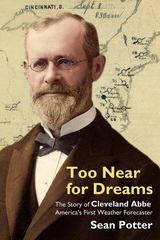 Too Near for Dreams: The Story of Cleveland Abbe, America's First Weather Forecaster
Sean Potter
American Meteorological Society, 2020 As director of the Cincinnati Observatory and, later, a civilian in the newly established forecast and storm warning division of the U.S. Army Signal Service, Cleveland Abbe was the first person to issue official, regularly scheduled weather forecasts, or “probabilities,” in the United States. Abbe began his work in forecasting in 1869, earning the nickname “Old Probabilities” and gaining recognition for the reliability of his reports. He would go on to become a leader of the US Weather Bureau—which we know today as the National Weather Service. In establishing a system for creating daily weather forecasts and more, this humble pioneer helped lay the foundation for modern meteorology in the United States. Set against the backdrop of nineteenth and early twentieth-century international events and scientific advancements, this biography of Abbe explores both his personal life and his scientific career. It illuminates his time spent in Russia in the mid-1860s—as the Civil War was waged and a president was assassinated back home—in part through letters with his mother. Decades of diaries and correspondence from the Cleveland Abbe Papers at the Library of Congress, as well as first-person accounts, illuminate this biography of a mild-mannered family man whose thirst for knowledge drove him to become a giant in an emerging scientific field.
Too Numerous
Kent Shaw
University of Massachusetts Press, 2019 What does it really mean when people are viewed as bytes of data? And is there beauty or an imaginative potential to information culture and the databases cataloging it? As Too Numerous reveals, the raw material of bytes and data points can be reshaped and repurposed for ridiculous, melancholic, and even aesthetic purposes.
Grappling with an information culture that is both intimidating and daunting, Kent Shaw considers the impersonality represented by the continuing accumulation of personal information and the felicities—and barriers—that result: "The us that was inside us was magnificent structures. And they weren't going to grow any larger."
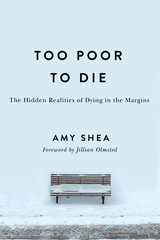 Too Poor to Die: The Hidden Realities of Dying in the Margins
Amy Shea
Rutgers University Press, 2025 Death is the great equalizer, but not all deaths are created equal. In recent years, there has been an increased interest and advocacy concerning end-of-life and after-death care. An increasing number of individuals and organizations from health care to the funeral and death care industries are working to promote and encourage people to consider their end-of-life wishes. Yet, there are limits to who these efforts reach and who can access such resources. These conversations come from a place of good intentions, but also from a place of privilege.
Too Poor to Die: The Hidden Realities of Dying in the Margins, a collection of closely connected essays, takes the reader on a journey into what happens to those who die while experiencing homelessness or who end up indigent or unclaimed at the end of life. Too Poor to Die bears witness to the disparities in death and dying faced by some of society’s most vulnerable and marginalized and asks the reader to consider their own end-of-life and disposition plans within the larger context of how privilege and access plays a role in what we want versus what we get in death.
 Too Smart to Be Sentimental: Contemporary Irish American Women Writers
Sally Barr Ebest
University of Notre Dame Press, 2008
In a series of critical and biographical essays, Too Smart to Be Sentimental offers a feminist literary history of twentieth-century Irish America. This collection introduces the reader to the works of twelve contemporary Irish American women writers, some of whom are well known, such as Joyce Carol Oates, Alice McDermott, and Tess Gallagher, and some of whom are equally deserving of recognition.
Each chapter focuses on a particular writer, describes and discusses that writer's most important works, contextualizes the discussion with relevant biographical material, and highlights why the writer is representative of the Irish American literary tradition. Too Smart to Be Sentimental —the first critical study of contemporary Irish American women authors—will be invaluable to students and scholars of Irish studies and Irish American literature.
“This book gathers critical essays about Irish-American writers from Mary McCarthy to Erin McGraw. The essays that consider Mary Doyle Curran, Tess Gallagher, Eileen Myles, Mary McGarry Morris, Jean McGarvey, and Erin McGraw are valuable for their introductions to lesser-known writers or to writers who have achieved success but who are not necessarily known as Irish-American writers.” —Maureen O. Murphy, Hofstra University
“These personal, thoughtful, and authoritative essays make an original contribution. They are of significance for scholars in several related disciplines: contemporary American fiction, Irish-American literature, sociology, ethnic studies, Irish studies, and women’s studies.” —Thomas A. Kuhlman, Creighton University
Took House
Lauren Camp
Tupelo Press, 2020 Took House is a disquieting book about intimate relationships and what is seen and hidden. In vulnerable poems of obsession, Camp places motivation deep in the background, following instead a chain reaction between pain and pleasure. Took House navigates a landscape of bone and ash, wine and circumstance. Boundaries shift between reality and allegory. The unknown appears and repeats, eerily echoing need. Blame, power and disorder hover, unsettling what we know of love.
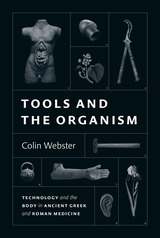 Tools and the Organism: Technology and the Body in Ancient Greek and Roman Medicine
Colin Webster
University of Chicago Press, 2023 The first book to show how the concept of bodily organs emerged and how ancient tools influenced conceptualizations of human anatomy and its operations.
Medicine is itself a type of technology, involving therapeutic tools and substances, and so one can write the history of medicine as the application of different technologies to the human body. In Tools and the Organism, Colin Webster argues that, throughout antiquity, these tools were crucial to broader theoretical shifts. Notions changed about what type of object a body is, what substances constitute its essential nature, and how its parts interact. By following these changes and taking the question of technology into the heart of Greek and Roman medicine, Webster reveals how the body was first conceptualized as an “organism”—a functional object whose inner parts were tools, or organa, that each completed certain vital tasks. He also shows how different medical tools created different bodies.
Webster’s approach provides both an overarching survey of the ways that technologies impacted notions of corporeality and corporeal behaviors and, at the same time, stays attentive to the specific material details of ancient tools and how they informed assumptions about somatic structures, substances, and inner processes. For example, by turning to developments in water-delivery technologies and pneumatic tools, we see how these changing material realities altered theories of the vascular system and respiration across Classical antiquity. Tools and the Organism makes the compelling case for why telling the history of ancient Greco-Roman medical theories, from the Hippocratics to Galen, should pay close attention to the question of technology.
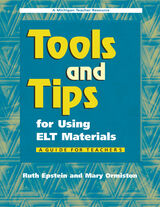 Tools and Tips for Using ELT Materials: A Guide for Teachers
Ruth Epstein and Mary Ormiston
University of Michigan Press, 2007 A vibrant ESL classroom depends on good materials used in creative and resourceful ways. In Tools and Tips for Using ELT Materials, the authors provide a wealth of information on resources for English language teaching materials.
The book begins by addressing basic considerations in selecting and designing materials for classroom use. Textbooks themselves are covered in depth, which is very helpful for teachers choosing or assessing a textbook. An abundance of information is provided on how to use written texts from different genres (including teacher- and student-created texts), teacher-created resources, audio-visual aids, computers and the Internet, and how to provide community and service learning.
This resource aims to help instructors choose the most effective, appropriate, and flexible materials for their students and their programs. Teachers and teachers-in-training will find this to be a practical and comprehensive guide to integrating ELT materials and resources into a curriculum.
Tools for Teaching the History of Civil Rights in Milwaukee and the Nation
Michael Edmonds
Wisconsin Historical Society Press, 2015 This powerful, user-friendly curriculum is designed to help teach middle and high school students the history of the Civil Rights Movement in Milwaukee and the South. Each of its twenty lessons includes background information, facsimiles of historical documents, classroom activities and thoughtful questions designed to spark critical thinking. Students will learn to connect their lives today with the people who worked 50 years ago to make the United States honor the promises of the Founding Fathers.
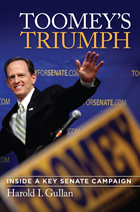 Toomey's Triumph: Inside a Key Senate Campaign
Harold Gullan
Temple University Press, 2012 The 2010 Pennsylvania Senate election provided high drama from the earliest days of its primary campaigns right through Election Day. After long-time incumbent Arlen Specter was eliminated, the race boiled down to two fresh faces—Pat Toomey and Joe Sestak. Their battle constitutes a microcosm of the political divide that characterizes contemporary American politics.
Veteran writer Hal Gullan obtained special access to the Toomey campaign early on. Toomey's Triumph offers both that inside look and a Philadelphian's reflections of a riveting election. Gullan's astute month-by-month narrative distills the events of the year-long battles through the high drama and the day-to-day of grassroots organizing and campaigning. He describes how the candidates appear, what they say, and how the media pundits respond to their various gambits. He provides wry observations on the efficacy of each candidate's campaign ads and strategies, and he analyzes the up-and-down polls.
Toomey's Triumph provides an engaging chronicle of a critical campaign.
 The Top 1,300 Words for Understanding Media Arabic
Elisabeth Kendall
Georgetown University Press, 2012 What is the Arabic term for "suicide bombing"? What phrase would be used to describe "peacekeeping forces" in the Arab media? Or "economic sanctions"? The Middle East is a key region for politics and business and it is essential that scholars, journalists, government workers, military personnel, businesspeople, and diplomats familiarize themselves quickly with Arabic/English translations for many key words and phrases used in the media. Media Arabic—the language of printed or broadcast news items—emphasizes contemporary terms like "multiculturalism" or "globalization" that are not covered by most Arabic dictionaries. This practical vocabulary reference provides concise and accessible lists of the most relevant vocabulary, providing key terms for translating from and into Arabic. The Arabic terms are organized by topic and the book now includes an index of English terms to help readers more easily find what they need. These word lists furnish readers with an invaluable knowledge of basic vocabulary used in the media to comprehend, translate, and write Arabic. NEW! Allow the reader to hear the words, check pronunciation, and test themselves! Audio MP3 files of all vocabulary words in English and Arabic—available as a free download. Simply click on the links below the cover image and download the .zip files. Topics include: • General (reports, statements, sources, common media idioms)
• Politics & Government
• Elections
• Military
• Economics
• Trade & Industry
• Law & Order
• Disaster & Aid
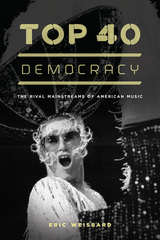 Top 40 Democracy: The Rival Mainstreams of American Music
Eric Weisbard
University of Chicago Press, 2014 If you drive into any American city with the car stereo blasting, you’ll undoubtedly find radio stations representing R&B/hip-hop, country, Top 40, adult contemporary, rock, and Latin, each playing hit after hit within that musical format. American music has created an array of rival mainstreams, complete with charts in multiple categories. Love it or hate it, the world that radio made has steered popular music and provided the soundtrack of American life for more than half a century.
In Top 40 Democracy, Eric Weisbard studies the evolution of this multicentered pop landscape, along the way telling the stories of the Isley Brothers, Dolly Parton, A&M Records, and Elton John, among others. He sheds new light on the upheavals in the music industry over the past fifteen years and their implications for the audiences the industry has shaped. Weisbard focuses in particular on formats—constructed mainstreams designed to appeal to distinct populations—showing how taste became intertwined with class, race, gender, and region. While many historians and music critics have criticized the segmentation of pop radio, Weisbard finds that the creation of multiple formats allowed different subgroups to attain a kind of separate majority status—for example, even in its most mainstream form, the R&B of the Isley Brothers helped to create a sphere where black identity was nourished. Music formats became the one reliable place where different groups of Americans could listen to modern life unfold from their distinct perspectives. The centers of pop, it turns out, were as complicated, diverse, and surprising as the cultural margins. Weisbard’s stimulating book is a tour de force, shaking up our ideas about the mainstream music industry in order to tease out the cultural importance of all performers and songs.
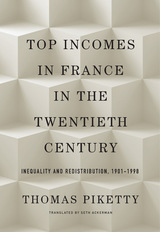 Top Incomes in France in the Twentieth Century: Inequality and Redistribution, 1901–1998
Thomas Piketty
Harvard University Press, 2018 A landmark in contemporary social science, this pioneering work by Thomas Piketty explains the facts and dynamics of income inequality in France in the twentieth century. On its publication in French in 2001, it helped launch the international program led by Piketty and others to explore the grand patterns and causes of global inequality—research that has since transformed public debate. Appearing here in English for the first time, this stunning achievement will take its place alongside Capital in the Twenty-First Century as a modern classic of economic analysis.
Top Incomes in France in the Twentieth Century is essential in part because of Piketty’s unprecedented efforts to uncover, untangle, and present in clear form data about patterns in tax and inheritance in France dating back to 1900. But it is also an exceptional work of analysis, tracking and explaining with Piketty’s characteristically lucid prose the effects of political conflict, war, and social change on the economic pressures and public policies that determined the lives of millions. A work of unusual intellectual power and ambition, Top Incomes in France in the Twentieth Century is a vital resource for anyone concerned with the economic, political, and social history of France, and it is central to ongoing debates about social justice, inequality, taxation, and the evolution of capitalism around the world.
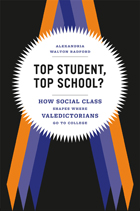 Top Student, Top School?: How Social Class Shapes Where Valedictorians Go to College
Alexandria Walton Radford
University of Chicago Press, 2013 Most of us think that valedictorians can write their own ticket. By reaching the top of their class they have proven their merit, so their next logical step should be to attend the nation’s very best universities. Yet in Top Student, Top School?, Alexandria Walton Radford, of American Institutes for Research, reveals that many valedictorians do not enroll in prestigious institutions. Employing an original five-state study that surveyed nine hundred public high school valedictorians, she sets out to determine when and why valedictorians end up at less selective schools, showing that social class makes all the difference. Radford traces valedictorians’ paths to college and presents damning evidence that high schools do not provide sufficient guidance on crucial factors affecting college selection, such as reputation, financial aid, and even the application process itself. Left in a bewildering environment of seemingly similar options, many students depend on their parents for assistance—and this allows social class to rear its head and have a profound impact on where students attend. Simply put, parents from less affluent backgrounds are far less informed about differences in colleges’ quality, the college application process, and financial aid options, which significantly limits their child’s chances of attending a competitive school, even when their child has already managed to become valedictorian. Top Student, Top School? pinpoints an overlooked yet critical juncture in the education process, one that stands as a barrier to class mobility. By focusing solely on valedictorians, it shows that students’ paths diverge by social class even when they are similarly well-prepared academically, and this divergence is traceable to specific failures by society, failures that we can and should address. Watch an interview of Alexandria Walton Radford discussing her book here: http://www.youtube.com/watch?v=F81c1D1BpY0
Topaz
Brian Komei Dempster
Four Way Books, 2013 Topaz examines the experiences of a Japanese American family separated and incarcerated in World War II prison camps and considers how this incarceration affected the family. Moreover, this collection delves into the lasting impact of this imprisonment on future generations. The speaker of these poems seeks to understand his identity—as son, father, and husband—as it intertwines with the past and present.
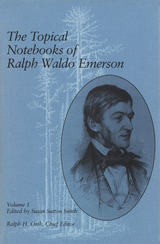 The Topical Notebooks of Ralph Waldo Emerson, Volume 1
Ralph Waldo Emerson, Edited by Susan Sutton Smith
University of Missouri Press, 1990
Published here for the first time are seven of Emerson's topical notebooks, which served as a source for his lectures, essays, and books of the 1850s, 1860s, and 1870s. Concerned primarily with nature, art, philosophy, American culture, and his comtemporaries, the notebooks presented in this first of a three-volume editions afford fascinating insight into Emerson's creative practices. They will offer new perspectives for future readings of his completed works.
The editors provide faithful transcriptions of the notebooks using the highest standards of textual practice. Their detailed annotations describe and comment on erased or revised passages, translate Greek and Latin quotations, and identify books and articles referred to in the texts of the notebooks. References to similar passages in Emerson's journals, lectures, and published works are also provided in the annotations.
Publication of these notebooks will inable scholars to trace ideas that have gone unnoticed previously. The Topical Notebooks of Ralph Waldo Emerson, Volume 1, offers valuable insight into the art and philosophy of one of America's foremost thinkers. These volumes will be an important addition to any personal or institutional library of nine-teenth-century American literature.
The Topical Notebooks of Ralph Waldo Emerson, Volume 2
Ralph Waldo Emerson; Edited by Ronald A. Bosco; Chief Editor, Ralph H. Orth
University of Missouri Press, 1993
Ralph Waldo Emerson, the magus of of American Transcendentalism, was an inveterate keeper of journals and notebooks, which he used as source and proving ground for his poems, lectures, and essays. This is the second in a three-volume edition that brings twelve of Emerson's topical notebooks and four other notebooks into print for the first time. These notebooks were Emerson's repositories for anecdotes, quotations, reminiscences, drafts of his poems, outlines for lectures, and observations on everything from daily life to profound cultural and philosophical issues.
Among the highlights of the five notebooks in Volume 2, "Orientalist" provides an unusual opportunity to view closely Emerson's adaptation of Eastern thought.
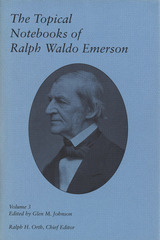 The Topical Notebooks of Ralph Waldo Emerson, Volume 3
Ralph Waldo Emerson; Edited by Glen M. Johnson; Series Editor, Ralph H. Orth
University of Missouri Press, 1994
"Ralph Orth...has been indefatigable in giving us volumes of the highest accuracy and usefulness," said American Renaissance Literary Report. Volume 3 completes the series that brings twelve of Emerson's topical notebooks and four other notebooks into print for the first time. In this final volume, Glen Martin Johnson presents four of the topical notebooks dating from the mid 1840s through the early 1870s, the end of Emerson's productive life. The notebooks include diverse material from which Emerson wrote his lectures, essays, and books.
Each of the four notebooks illustrates some of the many uses Emerson made of these collections of quotations and ideas: OP Gulistan is a compendium of biographical information and anecdotes about dozens of Emerson's acquaintances; S Salvage takes stock of and preserves parts of his earlier writings; ZO was used in preparing the lectures that became "Poetry and Imagination"; and ML was employed for extensive notes on the moral law and religion, and as a resource in preparing lectures and readings during the late 1860s.
The publication of these notebooks renders an invaluable service to the scholarly community and to students of American literature. Collectively, they dipict in great detail the subtle changes that occurred in Emerson's thought from the beginning until the end of his career to give a complete picture of the man and the writer. The younger Emerson, whose writing abounds with enthusiasm, became someone whose darker wisdom about inevitable limitations was expressed in essays such as "Fate" and "Illusions." The notebooks in this volume will allow us to better understand the last three decades of Emerson's career, which have remained less than fully explored.
Topics in Analytic Number Theory
Edited by Sidney W. Graham and Jeffrey D. Vaaler
University of Texas Press, 1985 This collection of research papers, originally published in 1985, brings together twelve articles by distinguished contributors.
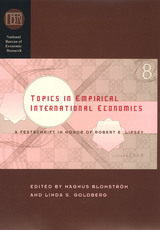 Topics in Empirical International Economics: A Festschrift in Honor of Robert E. Lipsey
Edited by Magnus Blomström and Linda S. Goldberg
University of Chicago Press, 2001 In this timely volume emanating from the National Bureau of Economic Research's program in international economics, leading economists address recent developments in three important areas. The first section of the book focuses on international comparisons of output and prices, and includes papers that present new measures of product market integration, new methodology to infer relative factor price changes from quantitative data, and an ongoing capital stock measurement project. The next section features articles on international trade, including such significant issues as deterring child labor exploitation in developing countries, exchange rate regimes, and mapping U. S. comparative advantage across various factors. The book concludes with research on multinational corporations and includes a discussion of the long-debated issue of whether growth of production abroad substitutes for or is complementary to production growth at home. The papers in the volume are dedicated to Robert E. Lipsey, who for more than a half century at the NBER, contributed significantly to the broad field of empirical international economics.
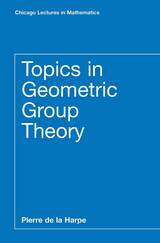 Topics in Geometric Group Theory
Pierre de la Harpe
University of Chicago Press, 2000 In this book, Pierre de la Harpe provides a concise and engaging introduction to geometric group theory, a new method for studying infinite groups via their intrinsic geometry that has played a major role in mathematics over the past two decades. A recognized expert in the field, de la Harpe adopts a hands-on approach, illustrating key concepts with numerous concrete examples.
The first five chapters present basic combinatorial and geometric group theory in a unique and refreshing way, with an emphasis on finitely generated versus finitely presented groups. In the final three chapters, de la Harpe discusses new material on the growth of groups, including a detailed treatment of the "Grigorchuk group." Most sections are followed by exercises and a list of problems and complements, enhancing the book's value for students; problems range from slightly more difficult exercises to open research problems in the field. An extensive list of references directs readers to more advanced results as well as connections with other fields.
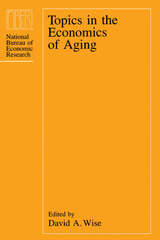 Topics in the Economics of Aging
Edited by David A. Wise
University of Chicago Press, 1992 The original essays and commentary in this volume—the third in a series reporting the results of the NBER Economics of Aging Program—address issues that are of particular importance to the well-being of individuals as they age and to a society at large that is composed increasingly of older persons. The contributors examine social security reform, including an analysis of the Japanese system; present the startling finding that the vast majority of people choose the wrong accumulation strategies for their pension plans; explore the continuing consequences of the decline in support of parents by children in the postwar period; investigate the relation between nursing home stays and the source of payment for the care; and offer initial findings on the implications of differences between developed and developing countries for understanding aging issues and determining appropriate directions for research.
Topics in the Foundations of General Relativity and Newtonian Gravitation Theory
David B. Malament
University of Chicago Press, 2012 In Topics in the Foundations of General Relativity and Newtonian Gravitation Theory, David B. Malament presents the basic logical-mathematical structure of general relativity and considers a number of special topics concerning the foundations of general relativity and its relation to Newtonian gravitation theory. These special topics include the geometrized formulation of Newtonian theory (also known as Newton-Cartan theory), the concept of rotation in general relativity, and Gödel spacetime. One of the highlights of the book is a no-go theorem that can be understood to show that there is no criterion of orbital rotation in general relativity that fully answers to our classical intuitions. Topics is intended for both students and researchers in mathematical physics and philosophy of science.
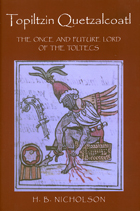 Topiltzin Quetzalcoatl: The Once and Future Lord of the Toltecs
H. B. Nicholson
University Press of Colorado, 2001 Topiltzin Quetzalcoatl: The Once and Future Lord of the Toltecs is the most comprehensive survey and discussion of primary documentary sources and relevant archaeological evidence available about the most enigmatic figure of ancient Mesoamerica. Probably no indigenous New World personage has aroused more interest or more controversy than this Lord of Tollan, capital of the Toltec Empire, who was merged with the prominent Feathered Serpent god, Quetzalcoatl. Speculation began soon after the Spanish Conquest brought Europeans in contact with this ambiguous figure, and scholarly inquiry has continued unabated to the present. The extant literature on this famous man/god is enormous and steadily growing. Professor Nicholson sorts through this wealth of material, classifying, summarizing, and analyzing all known primary accounts of the career of Topiltzin Quetzalcoatl, in the Spanish, Nahuatl, and Mayan languages, which Spanish missionaries and Spanish-educated natives recorded after the Conquest. In a new introduction, he updates the original source material presently available to scholars interested in this figure. After careful consideration of the evidence, he concludes that, in spite of the obvious myth surrounding this renowned Toltec priest-ruler, at least some of Topiltzin Quetzalcoatl's recorded life and deeds are drawn from historical fact. Nicholson also contends that the tradition of his expected return probably played a role in the peaceable reception of Cortés by Moctezuma II in Mexico's Tenochtitlan in the fall of 1519. Including new illustrations and an index, Topiltzin Quetzalcoatl: The Once and Future Lord of the Toltecs constitutes a major contribution to Mesoamerican ethnohistory and archaeology.
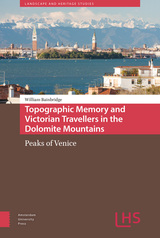 Topographic Memory and Victorian Travellers in the Dolomite Mountains: Peaks of Venice
William Bainbridge
Amsterdam University Press, 2020 Guided by the romantic compass of Turner, Byron, and Ruskin, Victorian travellers to the Dolomites sketched in the mountainous backdrop of Venice a cultural ‘Petit Tour’ of global significance. As they zigzagged across a debatable land between Italy and Austria, Victorians discovered a unique geography characterized by untrodden peaks and unfrequented valleys. The discovery of this landscape blended aesthetic, scientific, and cultural values utterly different from those engendered by the bombastic conquests of the Western Alps achieved during the ‘Golden Age of Mountaineering’. Filtered through memories of the Venetian Grand Tour, the Victorian encounter with the Dolomites is revealed through a series of distinct cultural practices that paradigmatically define a ‘Silver Age of Mountaineering’. This book shows how these practices are more ethnographic than imperialistic, more feminine than masculine, more artistic than sportive — rather than racing to summits, the Silver Age is about rambling, rather than conquering peaks, it is about sketching them in an intimate interaction with the Dolomite landscape.
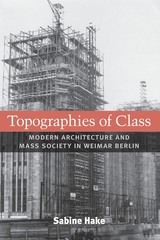 Topographies of Class: Modern Architecture and Mass Society in Weimar Berlin
Sabine Hake
University of Michigan Press, 2010 In Topographies of Class, Sabine Hake explores why Weimar Berlin has had such a powerful hold on the urban imagination. Approaching Weimar architectural culture from the perspective of mass discourse and class analysis, Hake examines the way in which architectural projects; debates; and representations in literature, photography, and film played a key role in establishing the terms under which contemporaries made sense of the rise of white-collar society. Focusing on the so-called stabilization period, Topographies of Class maps out complex relationships between modern architecture and mass society, from Martin Wagner's planning initiatives and Erich Mendelsohn's functionalist buildings, to the most famous Berlin texts of the period, Alfred Döblin's city novel Berlin Alexanderplatz (1929) and Walter Ruttmann's city film Berlin, Symphony of the Big City (1927). Hake draws on critical, philosophical, literary, photographic, and filmic texts to reconstruct the urban imagination at a key point in the history of German modernity, making this the first study---in English or German---to take an interdisciplinary approach to the rich architectural culture of Weimar Berlin. Sabine Hake is Professor and Texas Chair of German Literature and Culture at the University of Texas at Austin. She is the author of numerous books, including German National Cinema and Popular Cinema of the Third Reich. Cover art: Construction of the Karstadt Department Store at Hermannplatz, Berlin-Neukölln. Courtesy Bildarchiv Preeussischer Kulturbesitz / Art Resource, NY
 The Topography of Violence in the Greco-Roman World
Werner Riess and Garrett G. Fagan, editors
University of Michigan Press, 2016 What soldiers do on the battlefield or boxers do in the ring would be treated as criminal acts if carried out in an everyday setting. Perpetrators of violence in the classical world knew this and chose their venues and targets with care: killing Julius Caesar at a meeting of the Senate was deliberate. That location asserted Senatorial superiority over a perceived tyrant, and so proclaimed the pure republican principles of the assassins.
The contributors to The Topography of Violence in the Greco-Roman World take on a task not yet addressed in classical scholarship: they examine how topography shaped the perception and interpretation of violence in Greek and Roman antiquity. After an introduction explaining the “spatial turn” in the theoretical study of violence, “paired” chapters review political assassination, the battlefield, violence against women and slaves, and violence at Greek and Roman dinner parties. No other book either adopts the spatial theoretical framework or pairs the examination of different classes of violence in classical antiquity in this way.
Both undergraduate and graduate students of classics, history, and political science will benefit from the collection, as will specialists in those disciplines. The papers are original and stimulating, and they are accessible to the educated general reader with some grounding in classical history.
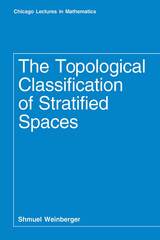 The Topological Classification of Stratified Spaces
Shmuel Weinberger
University of Chicago Press, 1994 This book provides the theory for stratified spaces, along with important examples and applications, that is analogous to the surgery theory for manifolds. In the first expository account of this field, Weinberger provides topologists with a new way of looking at the classification theory of singular spaces with his original results.
Divided into three parts, the book begins with an overview of modern high-dimensional manifold theory. Rather than including complete proofs of all theorems, Weinberger demonstrates key constructions, gives convenient formulations, and shows the usefulness of the technology. Part II offers the parallel theory for stratified spaces. Here, the topological category is most completely developed using the methods of "controlled topology." Many examples illustrating the topological invariance and noninvariance of obstructions and characteristic classes are provided. Applications for embeddings and immersions of manifolds, for the geometry of group actions, for algebraic varieties, and for rigidity theorems are found in Part III.
This volume will be of interest to topologists, as well as mathematicians in other fields such as differential geometry, operator theory, and algebraic geometry.
 The Topological Imagination: Spheres, Edges, and Islands
Angus Fletcher
Harvard University Press, 2016 Boldly original and boundary defining, The Topological Imagination clears a space for an intellectual encounter with the shape of human imagining. Joining two commonly opposed domains, literature and mathematics, Angus Fletcher maps the imagination’s ever-ramifying contours and dimensions, and along the way compels us to re-envision our human existence on the most unusual sphere ever imagined, Earth.
Words and numbers are the twin powers that create value in our world. Poetry and other forms of creative literature stretch our ability to evaluate through the use of metaphors. In this sense, the literary imagination aligns with topology, the branch of mathematics that studies shape and space. Topology grasps the quality of geometries rather than their quantifiable measurements. It envisions how shapes can be bent, twisted, or stretched without losing contact with their original forms—one of the discoveries of the eighteenth-century mathematician Leonhard Euler, whose Polyhedron Theorem demonstrated how shapes preserve “permanence in change,” like an aging though familiar face.
The mysterious dimensionality of our existence, Fletcher says, is connected to our inhabiting a world that also inhabits us. Theories of cyclical history reflect circulatory biological patterns; the day-night cycle shapes our adaptive, emergent patterns of thought; the topology of islands shapes the evolution of evolutionary theory. Connecting literature, philosophy, mathematics, and science, The Topological Imagination is an urgent and transformative work, and a profound invitation to thought.
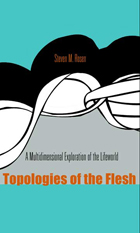 Topologies of the Flesh: A Multidimensional Exploration of the Lifeworld
Steven M. Rosen
Ohio University Press, 2006 The concept of “flesh” in philosophical terms derives from the writings of Maurice Merleau-Ponty. This was the word he used to name the concrete realm of sentient bodies and life processes that has been eclipsed by the abstractions of science, technology, and modern culture. Topology, to conventional understanding, is the branch of mathematics that concerns itself with the properties of geometric figures that stay the same when the figures are stretched or deformed. Topologies of the Flesh is an original blend of continental thought and mathematical imagination. Steven M. Rosen opens up a new area of philosophical inquiry: topological phenomenology. Through his unique application of qualitative mathematics, he extends the approaches of Merleau-Ponty and Heidegger so as to offer a detailed exploration of previously uncharted dimensions of human experience and the natural world. Rosen’s unprecedented marriage of topology and phenomenology is motivated by the desire to help overcome the pervasive dualism of contemporary philosophy and Western culture at large. To carry this to completion, he must address his own dualistic stance as author. Challenging the author’s traditional posture of detachment and anonymity, Rosen makes his presence vividly felt in his final chapter, and his philosophical analysis is transformed into a living reality.
Toppling the Taliban: Air-Ground Operations in Afghanistan, October 2001–June 2002
Walter L. Perry
RAND Corporation, 2016 On September 11, 2001, the United States was without a plan for military operations in Afghanistan. One was quickly created by the Defense Department and operations began October 7. The Taliban was toppled in less than two months. This report describes preparations at CENTCOM and elsewhere, Army operations and support activities, building a coalition, and civil-military operations in Afghanistan from October 2001 through June 2002.
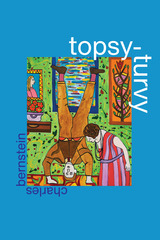 Topsy-Turvy
Charles Bernstein
University of Chicago Press, 2021 In his most expansive and unruly collection to date, the acclaimed poet Charles Bernstein gathers poems, both tiny and grand, that speak to a world turned upside down. Our time of “covidity,” as Bernstein calls it in one of the book’s most poignantly disarming works, is characterized in equal measure by the turbulence of both the body politic and the individual. Likewise, in Topsy-Turvy, novel and traditional forms jostle against one another: horoscopes, shanties, and elegies rub up against gags, pastorals, and feints; translations, songs, screenplays, and slapstick tangle deftly with commentaries, conundrums, psalms, and prayers.
Though Bernstein’s poems play with form, they incorporate a melancholy, even tragic, sensibility. This “cognitive dissidence,” as Bernstein calls it, is reflected in a lyrically explosive mix of pathos, comedy, and wit, though the reader is kept guessing which is which at almost every turn. Topsy-Turvy includes an ode to the New York City subway and a memorial for Harpers Ferry hero Shields Green, along with collaborations with artists Amy Sillman and Richard Tuttle. This collection is also full of other voices: Pessoa, Geeshie Wiley, Friedrich Rückert, and Rimbaud; Carlos Drummond, Virgil, and Brian Ferneyhough; and even Caudio Amberian, an imaginary first-century aphorist.
Bernstein didn’t set out to write a book about the pandemic, but these poems, performances, and translations are oddly prescient, marking a path through dark times with a politically engaged form of aesthetic resistance: We must “Continue / on, as / before, as / after.”
The audio version of Topsy-Turvy is performed by the author.
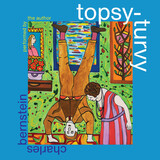 Topsy-Turvy
Charles Bernstein
University of Chicago Press, 2021 This audio version of acclaimed poet Charles Bernstein's most expansive and unruly collection to date is read in inimitable fashion by the author. It features poems, both tiny and grand, that speak to a world turned upside down. Our time of “covidity,” as Bernstein calls it in one of the book’s most poignantly disarming works, is characterized in equal measure by the turbulence of both the body politic and the individual. Likewise, in Topsy-Turvy, novel and traditional forms jostle against one another: horoscopes, shanties, and elegies rub up against gags, pastorals, and feints; translations, songs, screenplays, and slapstick tangle deftly with commentaries, conundrums, psalms, and prayers.
Though Bernstein’s poems play with form, they incorporate a melancholy, even tragic, sensibility. This “cognitive dissidence,” as Bernstein calls it, is reflected in a lyrically explosive mix of pathos, comedy, and wit, though the reader is kept guessing which is which at almost every turn. Topsy-Turvy includes an ode to the New York City subway and a memorial for Harpers Ferry hero Shields Green, along with collaborations with artists Amy Sillman and Richard Tuttle. This collection is also full of other voices: Pessoa, Geeshie Wiley, Friedrich Rückert, and Rimbaud; Carlos Drummond, Virgil, and Brian Ferneyhough; and even Caudio Amberian, an imaginary first-century aphorist.
Bernstein didn’t set out to write a book about the pandemic, but these poems, performances, and translations are oddly prescient, marking a path through dark times with a politically engaged form of aesthetic resistance: We must “Continue / on, as / before, as / after.”
The audio version of Topsy-Turvy is performed by the author.
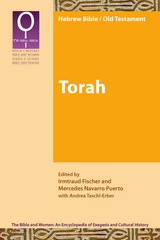 Torah
Irmtraud Fischer
SBL Press, 2011 This volume is the first in The Bible and Women series. It presents a history of the reception of the Bible as embedded in Western cultural history with a special focus on the history of women and issues of gender. It introduces the series, explaining the choice of the Hebrew canon in connection with the Christian tradition and preparing the way for a changed view of women throughout the series. The contributors explore the gendered significance of the canonical writings as well as the process of their canonization and the social-historical background of ancient Near Eastern women’s lives, both of which play key roles in the series. Turning to the Pentateuch, essays address a variety of texts and issues still relevant today, such as creation and male-female identity in the image of God, women’s roles in the genealogies of the Pentateuch and in salvation history, the rights and responsibilities of women according to the Hebrew Bible's legal and ritual texts, and how archaeology and iconography can illustrate the texts of the Torah. Contributors include Sophie Démare-Lafont, Dorothea Erbele-Küster, Karin Finsterbusch, Irmtraud Fischer, Mercedes García Bachmann, Thomas Hieke, Carol Meyers, Mercedes Navarro Puerto, Jorunn Økland, Ursula Rapp, Donatella Scaiola, Silvia Schroer, Jopie Siebert-Hommes, and Adriana Valerio.
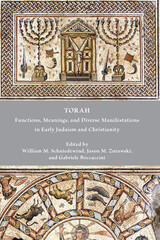 Torah: Functions, Meanings, and Diverse Manifestations in Early Judaism and Christianity
William M. Schniedewind
SBL Press, 2022 The present volume explores the ever-evolving understandings and diverse manifestations of the Hebrew notion of torah in early Jewish and Christian literature and the different roles torah played within those communities, whether in Judea or in the Hellenistic and early Roman diaspora. This collection of essays is purposefully wide-ranging, with contributors exploring and rethinking some of the most basic scholarly assumptions and preconceptions about the nature of torah in light of new critical approaches and methodologies. Contributors include Gabriele Boccaccini, Francis Borchardt, Calum Carmichael, Federico Dal Bo, Lutz Doering, Oliver Dyma, Paula Fredriksen, Robert G. Hall, Magnar Kartveit, Anne Kreps, David Lambert, Michael Legaspi, Jason A. Myers, Juan Carlos Ossandón Widow, Anders Klostergaard Petersen, Patrick Pouchelle, Jeremy Punt, Michael L. Satlow, Joachim Schaper, William Schniedewind, Elisa Uusimäki, Jacqueline Vayntrub, Jonathan Vroom, James W. Watts, Benjamin G. Wright III, and Jason M. Zurawski.
The Torah: The JPS Audio Version
JPS: The Jewish Publication Society
Jewish Publication Society, 2009 The JPS TANAKH: The Jewish Bible, audio version is a recorded version of the JPS TANAKH, the most widely read English translation of the Hebrew, or Jewish, Bible. Produced and recorded for The Jewish Publication Society (JPS) by The Jewish Braille Institute (JBI), this complete, unabridged audio version of the Torah features over 14 hours of readings by 7 narrators
The Torah is the essence of Jewish tradition; it inspires each successive generation.
The current JPS translation, based on classical and modern sources, is acclaimed for its fidelity to the ancient Hebrew.
Torah Today: A Renewed Encounter with Scripture
By Pinchas H. Peli
University of Texas Press, 2005 The central element of Jewish worship is the yearly cycle of reading the first five books of the Bible, the Five Books of Moses, called the Torah in Hebrew. Torah Today, a compilation of fifty-four essays that grew out of Pinchas Peli's Torah column in the Jerusalem Post, comments upon the weekly readings from the Torah. Written in a wonderfully clear style, each essay brings the reader closer to the rich spiritual world of Torah as it confronts the challenges of modern society. This reissue of Torah Today, with a new preface by Rabbi Harold M. Schulweis, makes this classic work available to a new generation of Bible students.
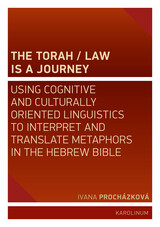 The Torah/Law Is a Journey: Using Cognitive and Culturally Oriented Linguistics to Interpret and Translate Metaphors in the Hebrew Bible
Ivana Procházková
Karolinum Press, 2022 An analysis of metaphor in the legal texts of the Old Testament using the tools of cognitive and cultural linguistics.
The Old Testament is rich in metaphor. Metaphorical expressions appear not only in places where you might expect them, like the poetic verses, but also in the legal texts. They appear in the preambles to collections of laws, in their final summaries, in general considerations on compliance with and violation of the law, in texts concerning the meaning of the law, and those dealing with topics now reserved for legal theory and legal philosophy. These metaphorical expressions reveal how the authors of the relevant Torah/Law texts understood their function in society and what the society of the time preferred in the law.
Anchored in cognitive and cultural linguistics, The Torah/Law Is a Journey investigates Hebrew metaphorical expressions concerning the key Old Testament concept of Torah/Law. Ivana Procházková identifies Hebrew conceptual metaphors and explicates the metaphorical expressions. She also uses cognitive linguistic analysis to look at modern translations of selected metaphorical expressions into Czech and English. Procházková closes with an analysis of the metaphors used in the Council of Europe publication Compass: Manual for Human Rights Education with Young People to conceptualize human rights.
 torch song tango choir
Julie Sophia Paegle
University of Arizona Press, 2010 These fine poems are connected by—and evoke—the music of lost homelands. Paegle, the daughter of immigrants from Argentina and Latvia, takes us through the tumult of displacement and migration with a strong sense for the folk songs and tango music of her youth. Against this musical backdrop, she invests the bandoneón, an accordion-like instrument brought to Argentina in the late nineteenth century, with a special significance. Her poetic account of the instrument yields this striking tribute, which testifies to the passion of the collection: “when mission music spilled, / five octaves went new-world wild.”
The poems in the first section, torch songs, hover near a heartbreaking lyricism as they reckon with political histories, landscapes, and loss. As she writes in this section, there is truly “nothing in this life like being blind in Granada.” The sonnet crown that comprises the next section, tango liso, plots a history of cultural inheritance and renewal, weaving back and forth in time and spanning Argentina, Spain, and the United States. Here the reader encounters Eva Perón alongside Katharine of Aragon and Billie Holiday. The final section, choir, commemorates sites of pilgrimage in Latvia, West Germany, and Spain, among other places. In this extended contemplation of cathedral spaces, Paegle interrogates the boundary between the sacred and the secular, silence and song. What emerges from this diverse collection is a sensual and allusive space where music and memory coincide.
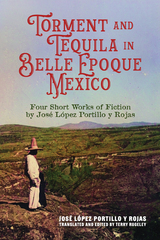 Torment and Tequila in Belle Epoque Mexico: Four Short Works of Fiction by José López Portillo y Rojas
José López Portillo y Rojas, translated and edited by Terry Rugeley
University of Alabama Press, 2025 This captivating collection of translated short works by José López Portillo y Rojas, one of Mexico’s most significant literary figures, explores themes of social frustration, loss, and heartache in late-nineteenth-century Mexico. Torment and Tequila in Belle Epoque Mexico is the first English-language collection of selected fiction by the influential Mexican author and political figure José López Portillo y Rojas (1850–1923). His distinguished career spanned the late nineteenth century to the tumultuous years of the Mexican Revolution. López Portillo y Rojas’s prose is characterized by rich vocabulary and fluid progression, offering readers moments of deep reflection. The stories boast finely drawn characters and evocative settings, including that of the author’s native Jalisco. He adeptly addresses the grand issues of Porfirian times, seamlessly blending social and personal themes of suffering, ambition, desire, and betrayal, and anchors his stories in the realities of human experience. Three masterfully translated short stories and one novella make up the collection, beginning with “The Lottery Ticket,” a critique of social hypocrisy that follows a dreamer whose fortunes slip through his fingers at the hands of his own family. “The Mirror” explores the eerie depths of grief and guilt, echoing the gothic brilliance of Edgar Allan Poe. “Nieves” is a gripping novella of love and power in which a young woman’s fate becomes entangled in a decaying estate and a brewing rebellion. “The Bracelet,” examines the tragic weight of the past, as a locked piece of jewelry seals the fate of an engaged couple. These translations offer an unforgettable glimpse into one of Mexico’s most brilliant minds and restore López Portillo y Rojas to his rightful place in Mexican literary history.
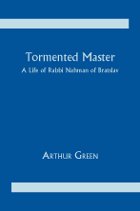 Tormented Master: A Life of Rabbi Nahman of Bratslav
Written by Arthur E. Green
University of Alabama Press, 1979 “If Hasidism begins in the life-enhancing spirituality of the Baal Shem Tov, it concludes in the tortuous, elitist and utterly fascinating career of Nahman of Bratslav (1722–1810) whose biography and teaching Arthur Green has set forth in his comprehensive, moving, and subtle study, Tormented Master. “Arthur Green has managed to lead us through the thickets of the Bratslaver discourse with a grace and facility thus far unequaled in the English language literature on Hasidism. Tormented Master is a model of clarity and percipience, balancing awed respect and honor for its subject with a ruthless pursuit of documented truth. . . . Tormented Master is sufficiently open to the agonies of religion in general and the issues of modern religion in particular to make Nahman a thinker utterly relevant to our time. “Nahman of Bratslav is unique in the history of Judaism, Green emphasizes, for having made the individual’s quest for intimacy with God the center of the religious way. He was a Kierkegaard before his time, believing in the utter abandon of the life of faith and the risk of paradoxicality. . . . He was, more than all others, the predecessor of Kafka, whose tales, like Nahman’s, have no explicit key and rankle, flush and irritate the spirit, compelling us—even in our failure to understand—to acknowledge their potency and challenge.” —New York Times
Tormented Minds
Christine Roberts
Intellect Books, 1995 This anthology contains three plays (Ceremonial Kisses, Shading the Crime, and The Maternal Cloister) that feature a protagonist who is compelled to confront his or her particular oppressors. The critique of this oppression through theatre falls on particular social institutions and differs for each character. The main institutions under scrutiny are religion and the state.
The plays are very different in style and include the use of physical theatre, naturalistic explorations of human rights abuses, and symbolic structures, puppets and poetry. The plays are supported by an analysis of their processes and themes. All have reached production and the text is supplemented by photographs of these performances.
The Tormented Mirror
Russell Edson
University of Pittsburgh Press, 2001 This is the first book in the Pitt Poetry Series by this popular and enigmatic poet, considered the foremost writer of prose poetry in America. In eleven collections over thirty years, Edson has created his own poetic genre, a surreal philosophical fable, easy to enter, but difficult to leave behind. In The Tormented Mirror, Edson continues and refines his form in seventy-three new poems.
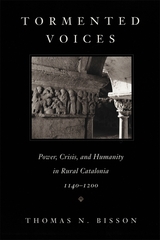 Tormented Voices: Power, Crisis, and Humanity in Rural Catalonia, 1140–1200
Thomas N. Bisson
Harvard University Press, 1998 Mute in life as in death, peasants of remote history rarely speak to us in their own voices. But Thomas Bisson’s engagement with the records of several hundred twelfth-century people of rural Catalonia enables us to hear these voices. The peasants’ allegations of abuse while in the service of their common lord the Count of Barcelona and his son the King reveal a unique perspective on the meaning of power both by those who felt and feared it, and by those who wielded it. These records—original parchments, dating much earlier than other comparable records of European peasant life—name peasants in profusion and relate some of their stories.
Bisson describes these peasants socially and culturally, showing how their experience figured in a wider crisis of power from the twelfth century. His compassionate history considers demography, naming patterns, gender, occupational identities, and habitats, as well as power, coercion, and complaint, and the moralities of faith, honor, and shame. He concludes with reflections on the historical meanings of violence and suffering.
This rich contribution to medieval social and cultural history and peasant studies suggests important resources and ideas for historians and anthropologists.
Torn
C. Dale Young
Four Way Books, 2011 In Torn, C. Dale Young continues his earnest investigations into the human, depicted as both spiritual being and a process, as “the soul and its attendant concerns” and as a device that “requires charge, small / electrical impulses / racing through our bodies.” What Young tells and shows us, what his poems let us hear, does not aim to reassure or soothe. These are poems written from “white and yellow scraps / covered with words and words and more words— // I may never find the right words to describe this.”
 Torn: Asian/white Life and the Intimacy of Violence
Anna M. Moncada Storti
Duke University Press, 2026 In Torn, Anna M. Moncada Storti searches for the ordinary and obscured impressions of the US empire, theorizing the pervasiveness of its violence through the language and patterns of intimacy. Reading for the intimacy of violence, Storti compiles an inventory of quotidian, psychic, and affective tensions that arise within the bodies of empire’s historical subjects. She raises Asian/white life as the representative case study to examine a familiar narrative of inner strife—that being of two distinct racial histories is to be rendered a body in tension, torn between ancestral lineages. Rather than refute this stance, Storti tracks the duress of fragmentation as a sign of war’s permanent mark on racial and sexual subjection. Traversing an archive of aesthetic, literary, and cultural portrayals of Asian/white racial mixture, Storti observes how Asian Americans refuse, rework, or reify the logics of progress and disavowal that have long fueled the US war machine. Tending to tension, she argues for a sustained confrontation with empire’s ordinary life, a prerequisite for anti-imperial solidarity.
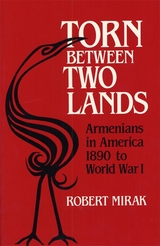 Torn between Two Lands: Armenians in America, 1890 to World War I
Robert Mirak
Harvard University Press Driven by persecution and poverty from their ancestral lands, thousands of Armenians fled to the New World before World War I. But their hearts and minds remained in part on the Old World with their persecuted countrymen in Turkey and their aspirations for a free Armenia.
This first comprehensive study of the Armenian American community examines the rich background, the patterns of migration and settlement in the New World, the complex economic and social adjustments, the family life, and the religious and political institutions of the newcomers. The author shows that the experience of the Armenians differed from that of other contemporary immigrant groups from Southern and Eastern Europe and the Mediterranean in two critical respects: they were rapidly successful in business and agriculture in the first generation, and they were tormented by their history and politics. Of particular interest is his trenchant, detailed analysis of the Armenian revolutionary parties in the United States: their formation and structure, their fundraising and propaganda activities, and their resort to terrorism.
Lucidly written, this study is an important account of the Armenian American community, which is today the largest Armenian community outside Soviet Armenia.
 Torn in Two: The Sinking of the Daniel J. Morrell and One Man's Survival on the Open Sea
Michael Schumacher
University of Minnesota Press, 2018 Dennis Hale reached the dock just in time to see the Daniel J. Morrell heading out to open waters, a 600-foot freighter that had plied the waters for sixty years, carrying ore from Minnesota’s Iron Range to steel firms around the Great Lakes. The twenty-six-year-old watchman had, quite literally, missed the boat—which meant scrambling to rejoin the Morrell at its next stop or forfeiting a good chunk of his pay package. Seventy-two hours later, Hale would find himself clinging to a life raft alongside the frozen bodies of his crewmates in the violent waves of Lake Huron. The boat would not be reported missing for another twenty-seven hours and by the time the life raft was found, Dennis Hale would remain as the sole survivor of the wreck of the Daniel J. Morrell. This is life-and-death drama on the inland sea as only Michael Schumacher can tell it. In Torn in Two the great Lakes historian recreates the circumstances surrounding the terrible storm of November 29, 1966, that broke the mighty freighter in half, sending twenty-five of the Morrell’s twenty-nine-man crew to their deaths and consigning the surviving four to the freezing raft where all but Hale would perish. At the heart of Torn in Two are the terrible hours spent by Hale on the life raft with his crewmen, clinging to life for thirty-eight hours in freezing temperatures and wearing only a peacoat, life jacket, and boxer shorts. The fight to save Hale and find the others, the Coast Guard hearings into what happened, the discovery of the wreckage—Schumacher’s vivid narrative captures every harrowing detail and curious fact of the Morrell’s demise, finally doing justice to this epic shipwreck fifty years past.
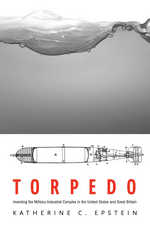 Torpedo: Inventing the Military-Industrial Complex in the United States and Great Britain
Katherine C. Epstein
Harvard University Press, 2014 When President Eisenhower referred to the “military–industrial complex” in his 1961 Farewell Address, he summed up in a phrase the merger of government and industry that dominated the Cold War United States. In this bold reappraisal, Katherine Epstein uncovers the origins of the military–industrial complex in the decades preceding World War I, as the United States and Great Britain struggled to perfect a crucial new weapon: the self-propelled torpedo.
Torpedoes epitomized the intersection of geopolitics, globalization, and industrialization at the turn of the twentieth century. They threatened to revolutionize naval warfare by upending the delicate balance among the world’s naval powers. They were bought and sold in a global marketplace, and they were cutting-edge industrial technologies. Building them, however, required substantial capital investments and close collaboration among scientists, engineers, businessmen, and naval officers. To address these formidable challenges, the U.S. and British navies created a new procurement paradigm: instead of buying finished armaments from the private sector or developing them from scratch at public expense, they began to invest in private-sector research and development. The inventions emerging from torpedo R&D sparked legal battles over intellectual property rights that reshaped national security law.
Blending military, legal, and business history with the history of science and technology, Torpedo recasts the role of naval power in the run-up to World War I and exposes how national security can clash with property rights in the modern era.
 Torsion-Free Modules
Eben Matlis
University of Chicago Press, 1973 The subject of torsion-free modules over an arbitrary integral domain arises naturally as a generalization of torsion-free abelian groups. In this volume, Eben Matlis brings together his research on torsion-free modules that has appeared in a number of mathematical journals. Professor Matlis has reworked many of the proofs so that only an elementary knowledge of homological algebra and commutative ring theory is necessary for an understanding of the theory.
The first eight chapters of the book are a general introduction to the theory of torsion-free modules. This part of the book is suitable for a self-contained basic course on the subject. More specialized problems of finding all integrally closed D-rings are examined in the last seven chapters, where material covered in the first eight chapters is applied.
An integral domain is said to be a D-ring if every torsion-free module of finite rank decomposes into a direct sum of modules of rank 1. After much investigation, Professor Matlis found that an integrally closed domain is a D-ring if, and only if, it is the intersection of at most two maximal valuation rings.
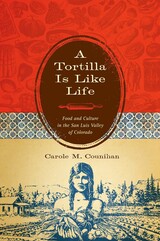 A Tortilla Is Like Life: Food and Culture in the San Luis Valley of Colorado
By Carole M. Counihan
University of Texas Press, 2009 Located in the southern San Luis Valley of Colorado, the remote and relatively unknown town of Antonito is home to an overwhelmingly Hispanic population struggling not only to exist in an economically depressed and politically marginalized area, but also to preserve their culture and their lifeways. Between 1996 and 2006, anthropologist Carole Counihan collected food-centered life histories from nineteen Mexicanas—Hispanic American women—who had long-standing roots in the Upper Rio Grande region. The interviews in this groundbreaking study focused on southern Colorado Hispanic foodways—beliefs and behaviors surrounding food production, distribution, preparation, and consumption. In this book, Counihan features extensive excerpts from these interviews to give voice to the women of Antonito and highlight their perspectives. Three lines of inquiry are framed: feminist ethnography, Latino cultural citizenship, and Chicano environmentalism. Counihan documents how Antonito's Mexicanas establish a sense of place and belonging through their knowledge of land and water and use this knowledge to sustain their families and communities. Women play an important role by gardening, canning, and drying vegetables; earning money to buy food; cooking; and feeding family, friends, and neighbors on ordinary and festive occasions. They use food to solder or break relationships and to express contrasting feelings of harmony and generosity, or enmity and envy. The interviews in this book reveal that these Mexicanas are resourceful providers whose food work contributes to cultural survival.
Tortilleras: Hispanic & U.S. Latina Lesbian Expression
Lourdes Torres
Temple University Press, 2003 The first anthology to focus exclusively on queer readings of Spanish, Latin American, and US Latina lesbian literature and culture, Tortilleras interrogates issues of gender, national identity, race, ethnicity, and class to show the impossibility of projecting a singular Hispanic or Latina Lesbian. Examining carefully the works of a range of lesbian writers and performance artists, including Carmelita Tropicana and Christina Peri Rossi, among others, the contributors create a picture of the complicated and multi-textured contributions of Latina and Hispanic lesbians to literature and culture. More than simply describing this sphere of creativity, the contributors also recover from history the long, veiled existence of this world, exposing its roots, its impact on lesbian culture, and, making the power of lesbian performance and literature visible.
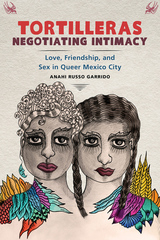 Tortilleras Negotiating Intimacy: Love, Friendship, and Sex in Queer Mexico City
Anahi Russo Garrido
Rutgers University Press, 2020 Tortilleras Negotiating Intimacy: Love, Friendship, and Sex in Queer Mexico City is the first ethnography in English to focus primarily on women’s sexual and intimate cultures in Mexico. The book shows the transformation of intimacy in the lives of three generations of women in queer spaces in contemporary Mexico City, as their sexual citizenship changes, including references to same-sex marriage and anti-discrimination laws. The book shows how these individuals reconfigure relationships through marriage, polyamory, friendship, and sex. Tortilleras Negotiating Intimacy suggests that “new” intimate cartographies are emerging in Mexico City, ultimately redefining relationships, gender, and mexicanidad. Building on ethnographic data collected over the past decade, including forty-five in-depth interviews with women between the ages of twenty-two and sixty-five participating in LGBT spaces, Tortilleras Negotiating Intimacy shows how lesbian women (mainly cis, but some trans) negotiate friendship, same-sex marriage, polyamory, and sexual practices, reinventing love, eroticism, friendship, and ultimately the social organization of Latin American societies.
Torts
Donald H. Beskind
Duke University Press, 2016
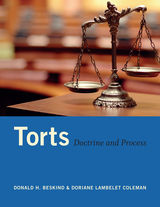 Torts: Doctrine and Process
Donald H. Beskind and Doriane Lambelet Coleman
Duke University Press, 2018 In Torts: Doctrine and Process, Donald H. Beskind and Doriane Lambelet Coleman draw on their experience as academics and practitioners to offer a rigorous first-year course that covers intentional torts, negligence, and strict liability, and that meets the highest intellectual and analytical capabilities of today’s law students. Modeling the sophisticated modern practice setting, the cases and materials are designed primarily for extraction learning: their doctrinal context is clear, but the rules are generally derived from careful reading and analysis. This doctrinal approach frames classroom discussions about topical issues in the law and normative, economic, and theoretical arguments about rule choices and legal strategy. The text is also designed to build students’ legal method skills, including honing their abilities to synthesize disparate material, to develop and distinguish between argument and evidence, and to work at the juncture of the substantive “black letter” law of torts and the rules of civil procedure that govern the litigation process. The principal materials are complemented by “notes and questions” and “problems” based on past exams, together providing the basis for this focused introduction to torts and to the law generally.
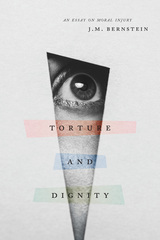 Torture and Dignity: An Essay on Moral Injury
J. M. Bernstein
University of Chicago Press, 2015 In this unflinching look at the experience of suffering and one of its greatest manifestations—torture—J. M. Bernstein critiques the repressions of traditional moral theory, showing that our morals are not immutable ideals but fragile constructions that depend on our experience of suffering itself. Morals, Bernstein argues, not only guide our conduct but also express the depth of mutual dependence that we share as vulnerable and injurable individuals.
Beginning with the attempts to abolish torture in the eighteenth century, and then sensitively examining what is suffered in torture and related transgressions, such as rape, Bernstein elaborates a powerful new conception of moral injury. Crucially, he shows, moral injury always involves an injury to the status of an individual as a person—it is a violent assault against his or her dignity. Elaborating on this critical element of moral injury, he demonstrates that the mutual recognitions of trust form the invisible substance of our moral lives, that dignity is a fragile social possession, and that the perspective of ourselves as potential victims is an ineliminable feature of everyday moral experience.
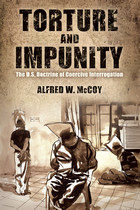 Torture and Impunity: The U.S. Doctrine of Coercive Interrogation
Alfred W. McCoy
University of Wisconsin Press, 2012 Many Americans have condemned the “enhanced interrogation” techniques used in the War on Terror as a transgression of human rights. But the United States has done almost nothing to prosecute past abuses or prevent future violations. Tracing this knotty contradiction from the 1950s to the present, historian Alfred W. McCoy probes the political and cultural dynamics that have made impunity for torture a bipartisan policy of the U.S. government.
During the Cold War, McCoy argues, the U.S. Central Intelligence Agency covertly funded psychological experiments designed to weaken a subject’s resistance to interrogation. After the 9/11 terrorist attacks, the CIA revived these harsh methods, while U.S. media was flooded with seductive images that normalized torture for many Americans. Ten years later, the U.S. had failed to punish the perpetrators or the powerful who commanded them, and continued to exploit intelligence extracted under torture by surrogates from Somalia to Afghanistan. Although Washington has publicly distanced itself from torture, disturbing images from the prisons at Abu Ghraib and Guantanamo are seared into human memory, doing lasting damage to America’s moral authority as a world leader.
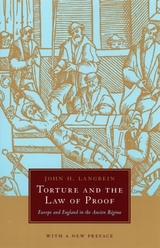 Torture and the Law of Proof: Europe and England in the Ancien Régime
John H. Langbein
University of Chicago Press, 2006 In Torture and the Law of Proof John H. Langbein explores the world of the thumbscrew and the rack, engines of torture authorized for investigating crime in European legal systems from medieval times until well into the eighteenth century. Drawing on juristic literature and legal records, Langbein's book, first published in 1977, remains the definitive account of how European legal systems became dependent on the use of torture in their routine criminal procedures, and how they eventually worked themselves free of it.
The book has recently taken on an eerie relevance as a consequence of controversial American and British interrogation practices in the Iraq and Afghanistan wars. In a new introduction, Langbein contrasts the "new" law of torture with the older European law and offers some pointed lessons about the difficulty of reconciling coercion with accurate investigation. Embellished with fascinating illustrations of torture devices taken from an eighteenth-century criminal code, this crisply written account will engage all those interested in torture's remarkable grip on European legal history.
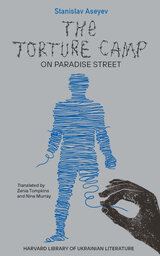 The Torture Camp on Paradise Street
Stanislav Aseyev
Harvard University Press, 2022 Finalist, 2024 PEN Translation Prize
In The Torture Camp on Paradise Street, Ukrainian journalist and writer Stanislav Aseyev details his experience as a prisoner from 2015 to 2017 in a modern-day concentration camp overseen by the Federal Security Bureau of the Russian Federation (FSB) in the Russian-controlled city of Donetsk. This memoir recounts an endless ordeal of psychological and physical abuse, including torture and rape, inflicted upon the author and his fellow inmates over the course of nearly three years of illegal incarceration spent largely in the prison called Izoliatsiia (Isolation). Aseyev also reflects on how a human can survive such atrocities and reenter the world to share his story.
Since February 2022, numerous cases of illegal detainment and extreme mistreatment have been reported in the Ukrainian towns and villages occupied by Russian forces during the full-scale invasion. These and other war crimes committed by Russian troops speak to the horrors wreaked upon Ukrainians forced to live in Russian-occupied zones. It is important to remember, however, that the torture and killing of Ukrainians by Russian security and military forces began long before 2022. Rendered deftly into English, Aseyev’s compelling account offers a critical insight into the operations of Russian forces in the occupied territories of Ukraine.
 The Torture Doctors: Human Rights Crimes and the Road to Justice
Steven H. Miles, MD
Georgetown University Press Torture doctors invent and oversee techniques to inflict pain and suffering without leaving scars. Their knowledge of the body and its breaking points and their credible authority over death certificates and medical records make them powerful and elusive perpetrators of the crime of torture. In The Torture Doctors, Steven H. Miles fearlessly explores who these physicians are, what they do, how they escape justice, and what can be done to hold them accountable. At least one hundred countries employ torture doctors, including both dictatorships and democracies. While torture doctors mostly act with impunity—protected by governments, medical associations, and licensing boards—Miles shows that a movement has begun to hold these doctors accountable and to return them to their proper role as promoters of health and human rights. Miles’s groundbreaking portrayal exposes the thinking and psychology of these doctors, and his investigation points to how the international human rights community and the medical community can come together to end these atrocities.
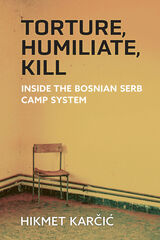 Torture, Humiliate, Kill: Inside the Bosnian Serb Camp System
Hikmet Karcic
University of Michigan Press, 2022 Half a century after the Holocaust, on European soil, Bosnian Serbs orchestrated a system of concentration camps where they subjected their Bosniak Muslim and Bosnian Croat neighbors to torture, abuse, and killing. Foreign journalists exposed the horrors of the camps in the summer of 1992, sparking worldwide outrage. This exposure, however, did not stop the mass atrocities. Hikmet Karčić shows that the use of camps and detention facilities has been a ubiquitous practice in countless wars and genocides in order to achieve the wartime objectives of perpetrators. Although camps have been used for different strategic purposes, their essential functions are always the same: to inflict torture and lasting trauma on the victims.
Torture, Humiliate, Kill develops the author’s collective traumatization theory, which contends that the concentration camps set up by the Bosnian Serb authorities had the primary purpose of inflicting collective trauma on the non-Serb population of Bosnia and Herzegovina. This collective traumatization consisted of excessive use of torture, sexual abuse, humiliation, and killing. The physical and psychological suffering imposed by these methods were seen as a quick and efficient means to establish the Serb “living space.” Karčić argues that this trauma was deliberately intended to deter non-Serbs from ever returning to their pre-war homes. The book centers on multiple examples of experiences at concentration camps in four towns operated by Bosnian Serbs during the war: Prijedor, Bijeljina, Višegrad, and Bileća. Chosen according to their political and geographical position, Karčić demonstrates that these camps were used as tools for the ethno-religious genocidal campaign against non-Serbs. Torture, Humiliate, Kill is a thorough and definitive resource for understanding the function and operation of camps during the Bosnian genocide.
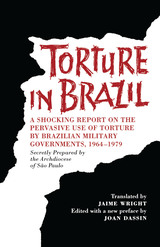 Torture in Brazil: A Shocking Report on the Pervasive Use of Torture by Brazilian Military Governments, 1964-1979, Secretly Prepared by the Archiodese of São Paulo
Archdiocese of São Paulo, Brazil
University of Texas Press, 1998 Winner, A Choice Outstanding Academic Book From 1964 until 1985, Brazil was ruled by a military regime that sanctioned the systematic use of torture in dealing with its political opponents. The catalog of what went on during that grim period was originally published in Portuguese as Brasil: Nunca Mais (Brazil: Never Again) in 1985. The volume was based on the official documentation kept by the very military that perpetrated the horrific acts. These extensive documents include military court proceedings of actual trials, secretly photocopied by lawyers associated with the Catholic Church and analyzed by a team of researchers. Their daring project—known as BNM for Brasil: Nunca Mais—compiled more than 2,700 pages of testimony by political prisoners documenting close to three hundred forms of torture. The BNM project proves conclusively that torture was an essential part of the military justice system and that judicial authorities were clearly aware of the use of torture to extract confessions. Still, it took more than a decade after the publication of Brasil: Nunca Mais for the armed forces to admit publicly that such torture had ever taken place. Torture in Brazil, the English version of the book re-edited here, serves as a timely reminder of the role of Brazil's military in past repression.
 Torture in the National Security Imagination
Stephanie Athey
University of Minnesota Press, 2023 Reassessing the role of torture in the context of police violence, mass incarceration, and racial capitalism
At the midpoint of a century of imperial expansion, marked on one end by the Philippine–American War of 1899–1902 and on the other by post–9/11 debates over waterboarding, the United States embraced a vision of “national security torture,” one contrived to cut ties with domestic torture and mass racial terror and to promote torture instead as a minimalist interrogation tool. Torture in the National Security Imagination argues that dispelling this vision requires a new set of questions about the everyday work that torture does for U.S. society. Stephanie Athey describes the role of torture in the proliferation of a U.S. national security stance and imagination: as U.S. domestic tortures were refined in the Philippines at the turn of the twentieth century, then in mid-century counterinsurgency theory and the networks that brought it home in the form of law-and-order policing and mass incarceration. Drawing on examples from news to military reports, legal writing, and activist media, Athey shows that torture must be seen as a colonial legacy with a corporate future, highlighting the centrality of torture to the American empire—including its role in colonial settlement, American Indian boarding schools, and police violence. She brings to the fore the spectators and commentators, the communal energy of violence, and the teams and target groups necessary to a mass undertaking (equipment suppliers, contractors, bureaucrats, university researchers, and profiteers) to demonstrate that, at base, torture is propelled by local social functions, conducted by networked professional collaborations, and publicly supported by a durable social imaginary.
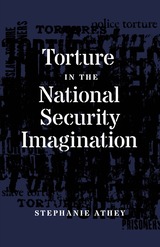 Torture in the National Security Imagination
Stephanie Athey
University of Minnesota Press, 2023 Reassessing the role of torture in the context of police violence, mass incarceration, and racial capitalism
At the midpoint of a century of imperial expansion, marked on one end by the Philippine–American War of 1899–1902 and on the other by post–9/11 debates over waterboarding, the United States embraced a vision of “national security torture,” one contrived to cut ties with domestic torture and mass racial terror and to promote torture instead as a minimalist interrogation tool. Torture in the National Security Imagination argues that dispelling this vision requires a new set of questions about the everyday work that torture does for U.S. society. Stephanie Athey describes the role of torture in the proliferation of a U.S. national security stance and imagination: as U.S. domestic tortures were refined in the Philippines at the turn of the twentieth century, then in mid-century counterinsurgency theory and the networks that brought it home in the form of law-and-order policing and mass incarceration. Drawing on examples from news to military reports, legal writing, and activist media, Athey shows that torture must be seen as a colonial legacy with a corporate future, highlighting the centrality of torture to the American empire—including its role in colonial settlement, American Indian boarding schools, and police violence. She brings to the fore the spectators and commentators, the communal energy of violence, and the teams and target groups necessary to a mass undertaking (equipment suppliers, contractors, bureaucrats, university researchers, and profiteers) to demonstrate that, at base, torture is propelled by local social functions, conducted by networked professional collaborations, and publicly supported by a durable social imaginary.
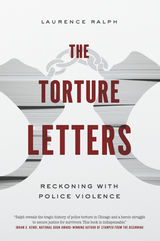 The Torture Letters: Reckoning with Police Violence
Laurence Ralph
University of Chicago Press, 2019 Torture is an open secret in Chicago. Nobody in power wants to acknowledge this grim reality, but everyone knows it happens—and that the torturers are the police. Three to five new claims are submitted to the Torture Inquiry and Relief Commission of Illinois each week. Four hundred cases are currently pending investigation. Between 1972 and 1991, at least 125 black suspects were tortured by Chicago police officers working under former Police Commander Jon Burge. As the more recent revelations from the Homan Square “black site” show, that brutal period is far from a historical anomaly. For more than fifty years, police officers who took an oath to protect and serve have instead beaten, electrocuted, suffocated, and raped hundreds—perhaps thousands—of Chicago residents.
In The Torture Letters, Laurence Ralph chronicles the history of torture in Chicago, the burgeoning activist movement against police violence, and the American public’s complicity in perpetuating torture at home and abroad. Engaging with a long tradition of epistolary meditations on racism in the United States, from James Baldwin’s The Fire Next Time to Ta-Nehisi Coates’s Between the World and Me, Ralph offers in this book a collection of open letters written to protesters, victims, students, and others. Through these moving, questing, enraged letters, Ralph bears witness to police violence that began in Burge’s Area Two and follows the city’s networks of torture to the global War on Terror. From Vietnam to Geneva to Guantanamo Bay—Ralph’s story extends as far as the legacy of American imperialism. Combining insights from fourteen years of research on torture with testimonies of victims of police violence, retired officers, lawyers, and protesters, this is a powerful indictment of police violence and a fierce challenge to all Americans to demand an end to the systems that support it.
With compassion and careful skill, Ralph uncovers the tangled connections among law enforcement, the political machine, and the courts in Chicago, amplifying the voices of torture victims who are still with us—and lending a voice to those long deceased.
 The Torture Letters: Reckoning with Police Violence
Laurence Ralph
University of Chicago Press, 2020 Torture is an open secret in Chicago. Nobody in power wants to acknowledge this grim reality, but everyone knows it happens—and that the torturers are the police. Three to five new claims are submitted to the Torture Inquiry and Relief Commission of Illinois each week. Four hundred cases are currently pending investigation. Between 1972 and 1991, at least 125 black suspects were tortured by Chicago police officers working under former Police Commander Jon Burge. As the more recent revelations from the Homan Square “black site” show, that brutal period is far from a historical anomaly. For more than fifty years, police officers who took an oath to protect and serve have instead beaten, electrocuted, suffocated, and raped hundreds—perhaps thousands—of Chicago residents.
In The Torture Letters, Laurence Ralph chronicles the history of torture in Chicago, the burgeoning activist movement against police violence, and the American public’s complicity in perpetuating torture at home and abroad. Engaging with a long tradition of epistolary meditations on racism in the United States, from James Baldwin’s The Fire Next Time to Ta-Nehisi Coates’s Between the World and Me, Ralph offers in this book a collection of open letters written to protesters, victims, students, and others. Through these moving, questing, enraged letters, Ralph bears witness to police violence that began in Burge’s Area Two and follows the city’s networks of torture to the global War on Terror. From Vietnam to Geneva to Guantanamo Bay—Ralph’s story extends as far as the legacy of American imperialism. Combining insights from fourteen years of research on torture with testimonies of victims of police violence, retired officers, lawyers, and protesters, this is a powerful indictment of police violence and a fierce challenge to all Americans to demand an end to the systems that support it.
With compassion and careful skill, Ralph uncovers the tangled connections among law enforcement, the political machine, and the courts in Chicago, amplifying the voices of torture victims who are still with us—and lending a voice to those long deceased.
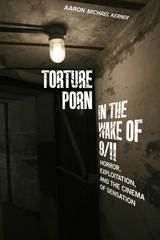 Torture Porn in the Wake of 9/11: Horror, Exploitation, and the Cinema of Sensation
Aaron Michael Kerner
Rutgers University Press, 2015 Saw, Hostel, The Devil’s Rejects: this wave of horror movies has been classed under the disparaging label “torture porn.” Since David Edelstein coined the term for a New York magazine article a few years after 9/11, many critics have speculated that these movies simply reflect iconic images, anxieties, and sadistic fantasies that have emerged from the War on Terror. In this timely new study, Aaron Kerner challenges that interpretation, arguing that “torture porn” must be understood in a much broader context, as part of a phenomenon that spans multiple media genres and is rooted in a long tradition of American violence.
Torture Porn in the Wake of 9/11 tackles a series of tough philosophical, historical, and aesthetic questions: What does it mean to call a film “sadistic,” and how has this term been used to shut down critical debate? In what sense does torture porn respond to current events, and in what ways does it draw from much older tropes? How has torture porn been influenced by earlier horror film cycles, from slasher movies to J-horror? And in what ways has the torture porn aesthetic gone mainstream, popping up in everything from the television thriller Dexter to the reality show Hell’s Kitchen?
Reflecting a deep knowledge and appreciation for the genre, Torture Porn in the Wake of 9/11 is sure to resonate with horror fans. Yet Kerner’s arguments should also strike a chord in anyone with an interest in the history of American violence and its current and future ramifications for the War on Terror.
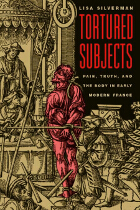 Tortured Subjects: Pain, Truth, and the Body in Early Modern France
Lisa Silverman
University of Chicago Press, 2001 At one time in Europe, there was a point to pain: physical suffering could be a path to redemption. This religious notion suggested that truth was lodged in the body and could be achieved through torture. In Tortured Subjects, Lisa Silverman tells the haunting story of how this idea became a fixed part of the French legal system during the early modern period.
Looking closely at the theory and practice of judicial torture in France from 1600 to 1788, the year in which it was formally abolished, Silverman revisits dossiers compiled in criminal cases, including transcripts of interrogations conducted under torture, as well as the writings of physicians and surgeons concerned with the problem of pain, records of religious confraternities, diaries and letters of witnesses to public executions, and the writings of torture's abolitionists and apologists. She contends that torture was at the center of an epistemological crisis that forced French jurists and intellectuals to reconsider the relationship between coercion and sincerity, or between free will and evidence. As the philosophical consensus on which torture rested broke down, and definitions of truth and pain shifted, so too did the foundation of torture, until by the eighteenth century, it became an indefensible practice.
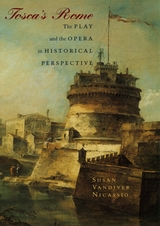 Tosca's Rome: The Play and the Opera in Historical Perspective
Susan Vandiver Nicassio
University of Chicago Press, 1999 A timeless tale of love, lust, and politics, Tosca is one of the most popular operas ever written. In Tosca's Rome, Susan Vandiver Nicassio explores the surprising historical realities that lie behind Giacomo Puccini's opera and the play by Victorien Sardou on which it is based.
By far the most "historical" opera in the active repertoire, Tosca is set in a very specific time and place: Rome, from June 17 to 18, 1800. But as Nicassio demonstrates, history in Tosca is distorted by nationalism and by the vehement anticlerical perceptions of papal Rome shared by Sardou, Puccini, and the librettists. To provide the historical background necessary for understanding Tosca, Nicassio takes a detailed look at Rome in 1800 as each of Tosca's main characters would have seen it—the painter Cavaradossi, the singer Tosca, and the policeman Scarpia. Finally, she provides a scene-by-scene musical and dramatic analysis of the opera.
"[Nicassio] must be the only living historian who can boast that she once sang the role of Tosca. Her deep knowledge of Puccini's score is only to be expected, but her understanding of daily and political life in Rome at the close of the 18th century is an unanticipated pleasure. She has steeped herself in the period and its prevailing culture-literary, artistic, and musical-and has come up with an unusual, and unusually entertaining, history."—Paul Bailey, Daily Telegraph
"In Tosca's Rome, Susan Vandiver Nicassio . . . orchestrates a wealth of detail without losing view of the opera and its pleasures. . . . Nicassio aims for opera fans and for historians: she may well enthrall both."—Publishers Weekly
"This is the book that ranks highest in my estimation as the most in-depth, and yet highly entertaining, journey into the story of the making of Tosca."—Catherine Malfitano
"Nicassio's prose . . . is lively and approachable. There is plenty here to intrigue everyone-seasoned opera lovers, musical novices, history buffs, and Italophiles."—Library Journal
 The Total Black Experience: A History of Television’s Positively Black
Ron Bishop
Rutgers University Press, 2026 The Total Black Experience is the first book to chronicle the history and social significance of Positively Black, one of the longest-running public affairs shows in the history of television. Spurred on by the findings of the Kerner Commission, executives at WNBC-TV greenlit the show, and turned production over to a small but dedicated team of storytellers who quickly made it their mission to carve out a space for serious and nuanced discussion of issues important to the Black community and to celebrate all aspects of Black culture. They believed that accurate representation of their experiences was a right, not a privilege. The show’s first co-hosts included the well-known Harlem-based activist Rev. Eugene Callender and Gus Heningburg, activist, successful consultant and mediator, and advocate for organized labor. Callender had founded Harlem Prep to equip young Black people for college while Heningburg played a key role in stabilizing life in Newark following the rebellion there in the late 1960s. Both were adept at using the media to reach their constituencies. Combining in-depth interviews with painstaking archival research, TheTotal Black Experience introduces readers to key members of the Positively Black production team and analyzes thematic shifts in the show’s content. The book celebrates Positively Black’s longevity and challenges readers to explore the current state of Black representation on television.
Total Communication: Structure and Strategy
Lionel Evans
Gallaudet University Press, 1982 Total communication, a method utilizing a combination of visual and auditory cues in an attempt to maximize comprehension, has long been a focus of debate by the deaf community, families of deaf children, and education professionals. For perhaps the first time, this book documents total communication’s historical and philosophical roots and analyzes the strengths and limitations of total communication's elemental parts and their salient linguistic properties.
 Total Cure: The Antidote to the Health Care Crisis
Harold S. Luft
Harvard University Press, 2008 Proposals to reform the health care system typically focus on either increasing private insurance or expanding government-sponsored plans. Guaranteeing that everyone is insured, however, does not create a system with the quality of care patients want, the flexibility clinicians need, and the internal dynamics to continually improve the value of health care.
In Total Cure, Hal Luft presents a comprehensive new proposal, SecureChoice, which does all that while providing affordable health insurance for every American. SecureChoice is a plan that restructures payment for medical care, harnessing the flexibility and responsiveness of the market by aligning the incentives of clinicians, hospitals, and insurers with those of the patient. It uses the accountability of government to ensure transparency, competition, and equity.
SecureChoice has two major components. A universal pool covers the major risks of hospitalization and chronic illness, which account for almost two-thirds of all costs. Everyone would be in the pool, irrespective of employment, income, or health status. The second component emphasizes choice, flexibility, and responsibility. People will be able to choose any physician to serve as their “medical home,” to keep track of their health records, provide much of their care, and suggest referrals. Clinicians will have the information and incentives to continually enhance quality. SecureChoice also facilitates improvements in areas ranging from malpractice to pharmaceuticals and establishes new roles for key stakeholders such as health insurers.
|
|


